8 Ways to Tend to a Thriving Workforce

BuzzFeed’s Hannah Wilkowski and seven other HR executives share how they cultivate benefits that allow employees to prosper P8
At Cognizant, our mission is to improve people’s lives by enabling a new model of health, one that’s organized on outcomes and continuous engagement.































These are just a few ways Cognizant helps healthcare organizations care for the communities they serve. cognizant.com/healthcare



© 2020 Cognizant. All Rights Reserved.
P32
“We
—Pamela
P36
“It


P40
“Our
P8
Pablo Iglesias
know that when someone feels healthy physically, emotionally, financially, socially, and has a sense of purpose, that’s when they can bring and express their full selves every day.”
Ventura, Capital One
doesn’t matter whether I’m serving a faculty member or a facilities worker. I want to make sure that we give everyone across the community the things that they need to do their jobs well and serve the mission of Georgetown.”
—Charles DeSantis, Georgetown University
priority is to achieve our mission of making more people healthier and live a happier, more fulfilling life.”
Contents 3
—Kristi Abundis, Nordic Naturals Read More
in the issue
The Path
Amy West discusses how her career shift from dancing on Broadway to working at AHRC NYC has instilled a greater sense of fulfillment
52
Loyola Medicine’s Mehreen Sherwani took every opportunity presented to become an indispensable lawyer
55
Daniel Weber enhances USPI’s revenue cycle function to help everything else run like clockwork

The Issues
Erich WonSavage enhances the people-centric culture at the Mental Health Center of Denver for employees and patients alike
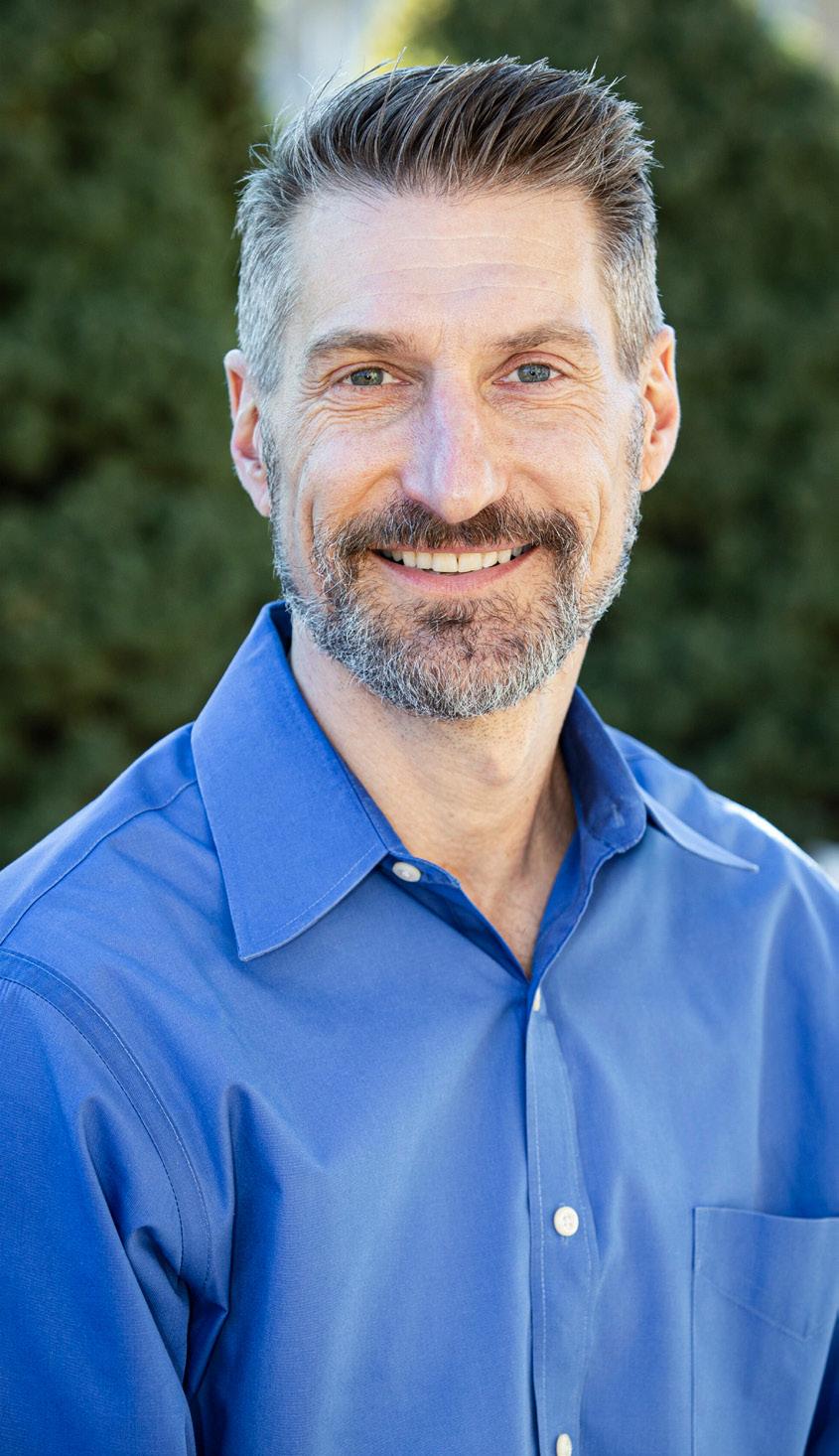
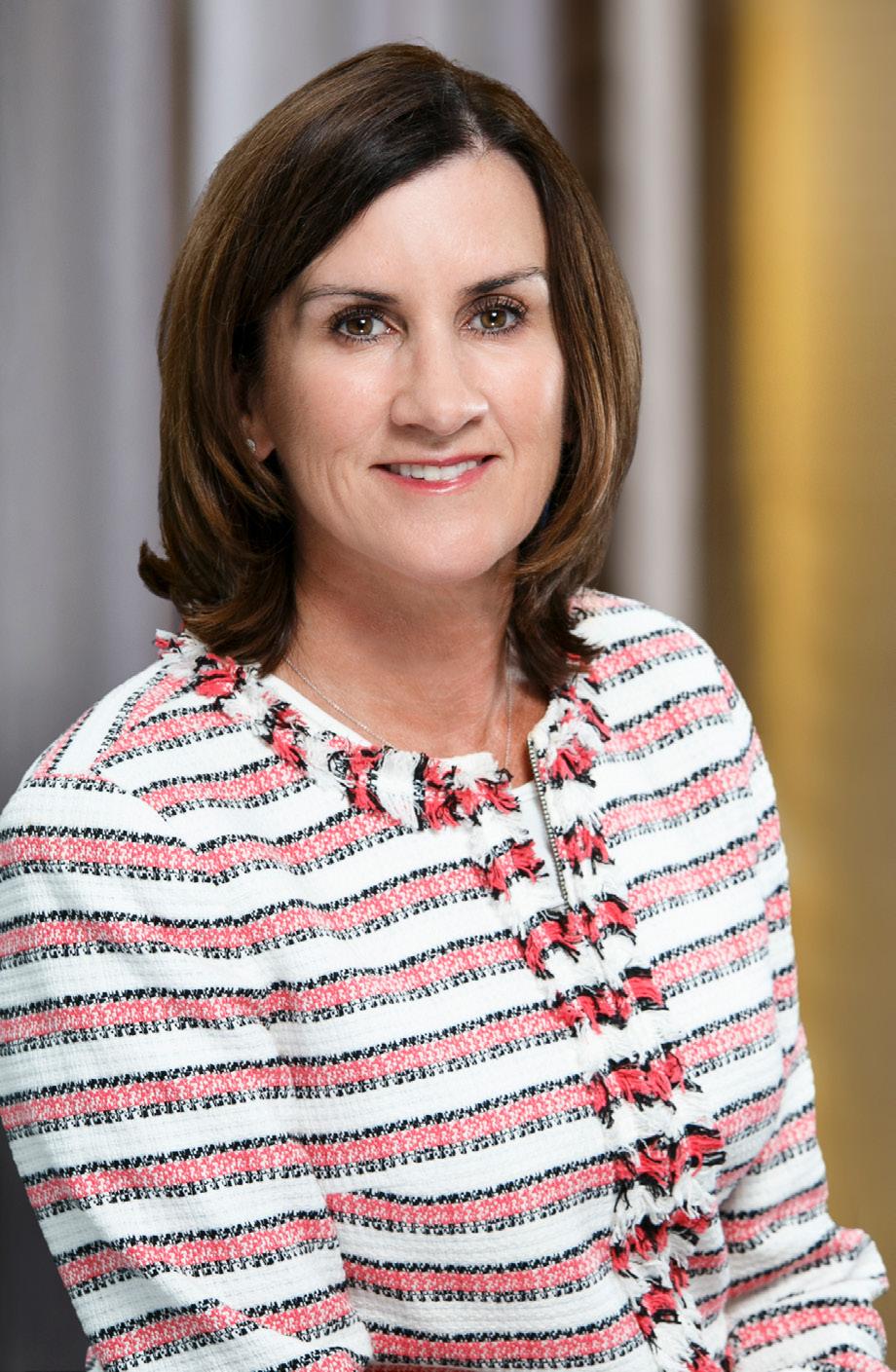
66 ◀
Melissa Gonzales shows how Medela helps new mothers along their parenthood journey and preps them to return to work
70
Paul Lambrecht has helped reduce preventable harm significantly at Inspira Health—but his work is not done yet
76
▶ 58
4 AHL
Courtesy of Mental Health Center of Denver (WonSavage), Romy Modlin (Weber), James Walters (Abernathy)
The Reason
At Memorial Sloan-Kettering Cancer Center, Christopher DeLuco enacts positive change while communicating the why behind it all
89
Ashley Garry pursued a career in healthcare to help people like his grandmother. Now he’s giving back to his community while promoting employees.

95 ◀
Embracing unique perspectives at Varex Imaging Corporation drives Kim Honeysett’s leadership and personal development
100
The Impact
Wayne Bowden shows how Biorasi’s approach to clinical trial resuce helps bring safe and effective drugs to market
126
Jo Abernathy helps build the Innovation Garage at Blue Cross NC to improve healthcare through IT
136 ◀
Jason Langley discusses how ClearChoice provides relief to people living with chronic dental issues
140
On the Cover
BuzzFeed’s Hannah Wilkowski was illustrated by Toronto-based artist Pablo Iglesias. Pablo’s bright pieces can be found throughout this issue. To see more of his work, visit pabloi.com

The Business
As Cigna integrates Express Scripts, Viktoriya TorchinskyField uses her progressive methodologies to lead her team
107
At BJC HealthCare, Cole Elmer believes that taking care of patients means helping them clinically and financially
116
Amy Garner’s role mixes compliance and communications, allotting West Tennessee Healthcare a unique resource
▶ 122
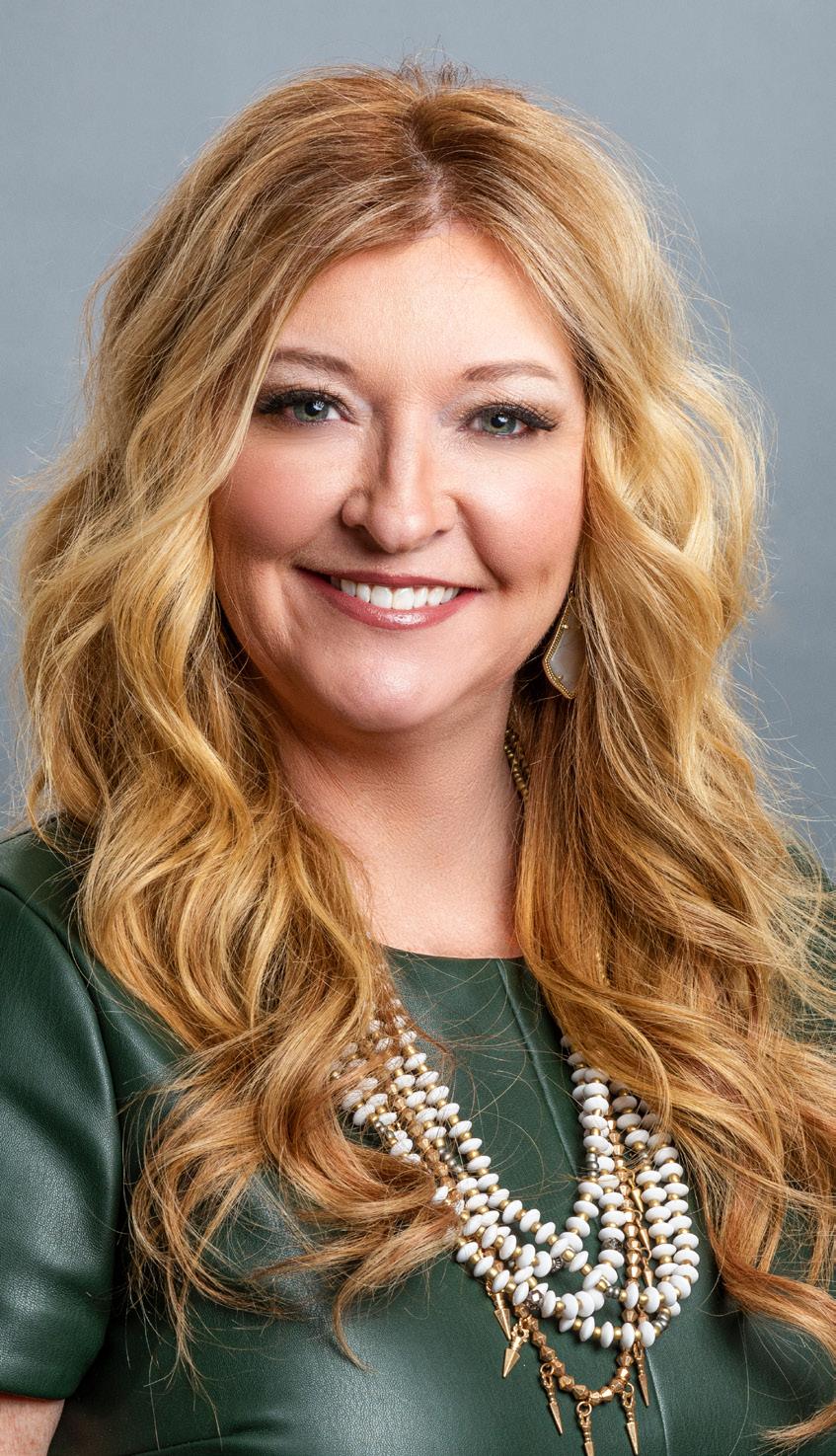
Contents 5
Gillian Fry (Garry), David Bard Adkins (Garner)
Masthead
CREATIVE
Director, Editorial
Kevin Warwick
Managing Editor
KC Esper
Senior Editor
Frannie Sprouls
Editors
Melaina K. de la Cruz
Sara Deeter
Hana Yoo
Staff Writer
Billy Yost
Contributing Editor
Julia Thiel
Contributing Writers
Cora Berg
Peter Fabris
Charlotte Foer
Will Grant
Chip Hooper
Blythe Long
Keith Loria
Sara Verdi
Zayvelle Williamson
Stephanie Zeilenga
Senior Designer
Vince Cerasani
Photo Editors & Staff Photographers
Cass Davis
Gillian Fry
CORPORATE
CEO & Publisher
Pedro A. Guerrero
Chief of Staff
Jaclyn Gaughan
VP, Sales
Kyle Evangelista
VP, Hispanic Division
Vianni Lubus
VP, Finance
David Martinez
Director, Client Services
Cheyenne Eiswald
Senior Client Services Manager
Rebekah Pappas
Client Services Manager
Brooke Rigert
Director, Talent Acquisition
Elyse Schultz
Senior Talent Acquisition Manager
Haylee Himel
Director, Business Development
Jenny Vetokhin
Director, Strategic Partnerships
Krista Horbenko
Senior Events Manager
Jill Ortiz
Senior Director, Sales
Ben Julia
Sales Training Manager
Alexa Johnson
Content & Advertising Managers
Megan Apfelbach
Mia Avina
Olivia Binke
Caroline Phillips
Kelsey Price
Rachel Sadowski
Olivia Schoenoff
Kelly Stapleton
Drew Thomas
AHL Magazine® is a registered trademark of Guerrero, LLC.
Facebook: @ahlmagazine
LinkedIn: @american-healthcare-leader ©2020 Guerrero, LLC guerreromedia.com 825 W. Chicago Ave. Chicago, IL 60642
Reprints
Reprinting of articles is prohibited without permission of Guerrero, LLC. Printed in China. For reprint information, contact Reprints & Circulation Director Stacy Kraft at stacy@ guerreromedia.com.
6 AHL
From the Editor
The days of benefits
packages relying on the appeal of a matching 401(k) are over like the days of dial-up.
Just like keeping their technology up-to-date to get ahead, companies are also learning how to stay modern by giving their workforces what they need outside of the office. New-age tech may enable employees to work more efficiently, but pair that with a fresh outlook on HR, and you have a complete system that allows them to work happily, too.
As younger generations fill positions at the pace older generations retire from them, we’re watching the workplace change in myriad ways. Employees want flexibility and autonomy, while doing work that is meaningful and advances skill sets. They want to be mentored while being trusted and invest in a company that cares about all facets of their physical, mental, and spiritual well-being.
While technological advancements help companies keep up with operational changes, cultural advancements allow for a more nurturing approach, giving them the insight needed to help keep up with employees’ wants and desires.
Beyond providing a 401(k), the companies featured in this issue ensure that their people feel taken care of at every stage of their lives, offering refreshing takes on maternity and paternity leave policies, telemedicine tools, on-site wellness facilities, unique work-from-home arrangements, resources for mental health and spiritual well-being, and insurance in all forms (including for pets!).
Sure, the nest egg is there for those who build it. But the companies that allow employees the tools they need to grow in their roles and in their lives, as well as recognize individuals not just as workers but also as parents, goal-getters, innovators, dog-lovers, benefactors, and companions—these are the companies that truly have what it takes to be industry disruptors.
KC Esper Managing Editor

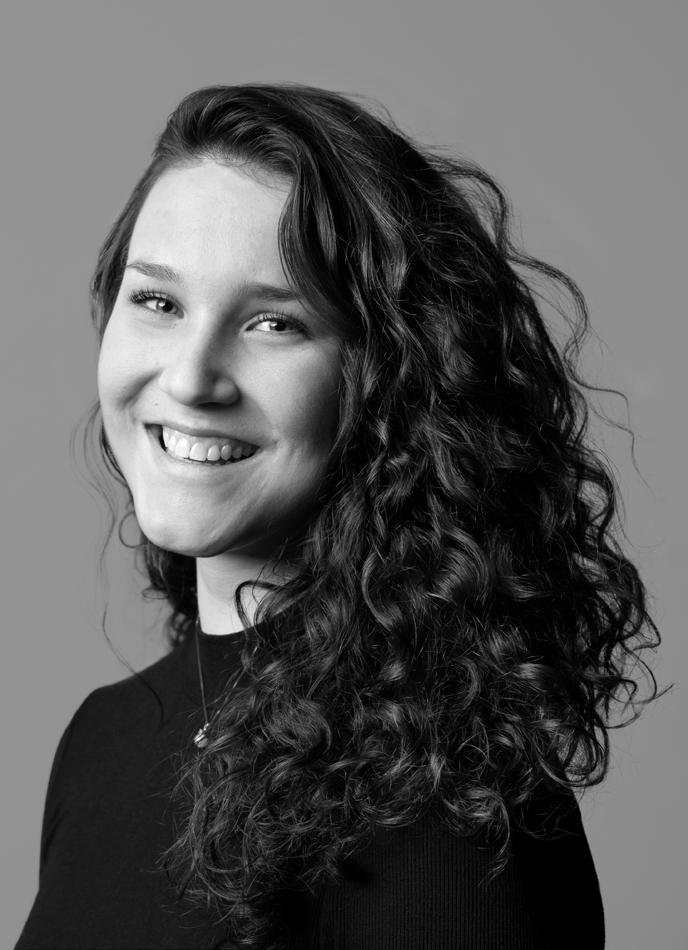
Gillian Fry
Editor’s Letter 7
Make Your Team Feel Like It Can Grow


8 AHL
Pablo Iglesias


executives share their
for
employees
#1 Hannah Wilkowski BuzzFeed P10 #2 Michelle Behrman BorgWarner P18 #3 Candace Shaffer Purdue University P21 #4 Alyona Richey McDermott Will & Emery P25 #5 Diane Emery Nova Southeastern University/ Barry University P29 #6 Pamela Ventura Capital One P32 #7 Charles DeSantis Georgetown University P36 #8 Kristi Abundis Nordic Naturals P40 The Feature 9
Eight
methodologies
supporting
through modern benefits

10 AHL
Benefits That Keep Trending

Global Benefits Manager Hannah Wilkowski on how leading digital media company BuzzFeed provides its employees with unique, flexible benefits options
By Sara Verdi
Illustrations by Pablo Iglesias

The Feature 11
As global benefits manager at BuzzFeed, the world’s leading tech-powered media company, it feels natural for Hannah Wilkowski to be focused on the “people side of business.” After graduating from Muhlenberg College with a bachelor’s in psychology, public health, and anthropology, she “took a leap of faith” and attended graduate school at NYU for human resources.
At the start of her career, Wilkowski found herself in a role that blended HR, benefits, and analytics, which piqued her interest in a job field that seeks to support employees beyond just a salary. “I realized there was an opportunity to combine my experience in the healthcare world and my passion for human resources,” she says. This combination sparked a passion for benefits that would guide her through the rest of her career, taking her from HarperCollins to CLS Bank to her current role.
Since joining BuzzFeed in August 2019, Wilkowski has been a part of exciting new initiatives that have revamped the way BuzzFeed’s benefits packages reflect its employee-first philosophy.

Wilkowski spoke to American Healthcare Leader about her approach to aligning BuzzFeed’s peoplemotivated philosophy with benefits initiatives and the importance of making employees feel both seen and heard by leadership.
Tell us about BuzzFeed’s employee-first philosophy.
Our employees create content that is rooted in identity and both entertains and provides a utility to our massive audience. Identity-based content makes people say, “That’s so me,” and feel seen. For example, we create tons of content for Playfull, our millennial parenting brand. As our audience grows up, it’s important that our writers and producers can speak about parenting issues in the workplace from a place of authenticity. What this means for BuzzFeed, and more specifically in the world of employee benefits and wellness, is that we need to be adaptive to these needs. When it comes to starting or growing a family, having a benefits program that understands the complexities of being a working parent is invaluable.
What this means for our employees is that we listen. We listen to the Employee Resource Groups (ERGs) and

12 AHL
“We are constantly looking for ways to ensure they all have the most relevant and effective resources.”
 Hannah Wilkowski Global Benefits Manager BuzzFeed
Hannah Wilkowski Global Benefits Manager BuzzFeed
The Feature 13
Jessie Michel and Tracy McKay
EXTENDING CARE FROM PEOPLE TO PUPS
In addition to creating wellrounded benefits offerings for employees at BuzzFeed, Hannah Wilkowski ensures that her two rescue dogs are given the best life possible, too.
“My husband and I are big animal rescue advocates,” Wilkowski says. “We have two rescue dogs: Harvey and Tula. Harvey is a rescue from NYC’s ACC, so he’s a native New Yorker. He’s a beagle mix, and actually was in an IAMs commercial back in the day.

“Tula is newer—we rescued her in August 2019,” she continues. “She is a Sato rescue—a stray from Puerto Rico—and also is a beagle mix. Unfortunately, she has not made her TV debut yet!”
the BuzzFeed community in whole when they mention different resources or benefits that can enhance their time at BuzzFeed. This may look like a more robust return-to-work transition plan for returning parents, or, on the other end, access to egg freezing. This may also look like virtual, direct access to ten free therapy sessions per year. Or maybe, an employee isn’t ready to be a parent or isn’t thinking about starting a family, so we have some cool benefits to keep people passionate about the things they want.
How does your work further this flexible, personalized philosophy?

It makes my job very exciting. It encourages me to speak with individuals across the globe, through all walks of life, and research ways to close gaps in benefits. It also encourages employees to feel comfortable coming forward with innovative ideas on new benefits . . . and they do! I get a lot of feedback on benefits or ideas about areas where there maybe aren’t enough benefits. Additionally, it forces me to take a few steps back and really look at our employee demographics and how that relates to trends in the benefits sphere.
How have your past experiences helped guide your strategy in this respect?
I’m very lucky in that I was able to grow so much in each of my previous roles. One role taught me the foundations of employee benefits and how to best “flex” my communication strategy to ensure that all employees understand their organizations’ benefits plans. One role taught me how to appreciate a wide array of differences in employees—and therefore, their needs in terms of their benefits.

14 AHL
“It encourages me to speak with individuals across the globe, through all walks of life, and research ways to close gaps in benefits.”
Engaging employees by asking them which types of benefits would help enhance their time in their role is beneficial in so many ways—it allows the benefits team to adapt to their employees’ needs, it will hopefully make a positive impact on their time in the organization, and employees feel heard and that they played a part in constructing a benefits package that best fits their needs.
The world of benefits is constantly changing, and adapting to your employees’ needs is imperative if you want to remain competitive. There are so many new types of benefits that really broaden an organization’s offerings and can make a huge impact on an employee’s life.
How do you ensure that new benefits or initiatives meet the needs of all employees? How does this spectrum of options enhance the company culture at BuzzFeed?
I feel like this is a question that will never have a complete answer! Our employees are all individuals with different backgrounds and needs, and they’re experiencing so many different major life events. We are constantly looking for ways to ensure they all have the most relevant and effective resources. If we could reach all employees with one benefits program: amazing. But if not, it’s all about what we can do to make sure that everyone feels heard, recognized, and taken care of.
When it comes to culture, I like to think that the benefits world amplifies the employee experience by providing the tools necessary to succeed, whether that means having peace of mind through our discounted pet insurance market or participating in our weekly on-site meditations facilitated by our bMindful group.
EXPERTISE SPOTLIGHT
The workforce has changed in the last twenty years: women are having children well into their thirties or forties and working mothers have become the norm. As such, employees expect progressive benefits.
Yet, today’s family-building benefits are falling short. They add fees, contribute to the fragmentation of care, and can’t control for cost, quality, or experience.
Family-Building Benefits—from the Doctors
To create change, we must do so from the ground up.
Kindbody is the first familybuilding solution from the doctors. We offer the full spectrum of women’s health and fertility care under one roof, from preconception to fertility to postpartum. We contract directly with employers, eliminating the need for the middleman.
With clinics around the country, and mobile and virtual services, we give your employees the care they need, whenever and wherever.
Why Does This Matter?
Because only the providers can control for cost, quality, and experience.
As the providers, we offer a consistent, seamless experience at the lowest possible rates—up to 30 percent below market average.
Kindbody x BuzzFeed
Kindbody is proud to partner with BuzzFeed as their family-building solution. BuzzFeed employees have access to the full scope of Kindbody services, including gynecology, fertility, and return-towork services.
By working with Kindbody, BuzzFeed is improving access to care and putting its people first.

The Feature 15
Perks for BuzzFeed’s People
As Told By Hannah Wilkowski
PARENTHOODFOCUSED PROGRAMS FOR MOM AND DAD
“We are really proud of our parent benefits and how we have broadened the term ‘parent benefits’ itself. This can mean something very different depending on different needs. For some, this may look like freezing and storing eggs, or trying IUI or IVF. For others, this may look like direct access to virtual appointments with doulas, sleep coaches, and lactation consultants.”


PET INSURANCE
“We have a pet insurance exchange, where employees can enter their pet(s) information (age, breed, gender) and peruse many different options for pet insurance.”

BABY SWAG AND BONUSES
“We love our BuzzFeed babies! New parents receive a BuzzFeed onesie and some other cute swag— and in return, we expect photos! BuzzFeed also has a global baby bonus program for new parents.”
BACK-UP CHILDCARE
WELLNESS TEAM + RESOURCES




“We have an amazing mindfulness group called bMindful, which is constantly looking for new and innovative ways to reach employees. We hold weekly meditation sessions and yoga in some of our locations.”

WORK FROM HOME ARRANGEMENTS
ONE MEDICAL

“Virtual care is definitely on the rise, and employees enrolled in some of our medical plans are able to have full access to One Medical, a 24/7 online patient portal. This has been extremely useful.”
GINGER APP + MENTAL HEALTH FOCUS
“Ginger has been one of the most helpful benefits for employees in so many ways, especially during the coronavirus pandemic. This benefit offers employees virtual coaching and therapy sessions, right from the comfort of their own home.”

FOCUS ON MINDFULNESS
16 AHL
One of our biggest—and fastest growing—populations is new parents, so we implemented Maven two years ago. Maven provides resources through pregnancy up until the baby turns six months old for both the employee and their partner. Maven offers a slew of resources for every step of the parenting journey, from fertility specialists to career coaches, doulas, mental health counselors, lactation consultants, and sleep coaches. BuzzFeed employees around the world have unlimited access to these resources, and since Maven is completely virtual, they can access these specialists from the comfort of their own couches at home.
Taking a broader look at parent benefits, we also offer employees access to Kindbody, a well-women and fertility clinic. Kindbody offers employees and their dependents access to routine visits, male and female fertility assessments, and other fertility services. So, whether (or not) you’re ready to become a parent, taking the first few baby steps to learn about different fertility options, or are trying to conceive, Kindbody offers a full spectrum of resources to help employees along the way.
Why is it important to adapt to trends when creating new benefits?

For many reasons—the first one that comes to mind is to remain competitive in the market, which can help to recruit and retain top talent. Second, if the trend fits our employees’ demographics and needs, then most likely this will ultimately help make our employees’ lives easier. However, it’s also important to ask for feedback from employees and find trends locally and globally. This helps us stay ahead of trends, and thereby provide employees the resources they need.
One of the biggest challenges is prioritizing which new or changing benefits would be the most impactful to employees. We do this through research, communication, and feedback. I actually reach out to different offices throughout the year to hear how they’re doing, to catch up, and to see what the trends are. You have to ask: Is this what our employees want and need? Will it make their time here better? Will it make their home life better? If the answer is yes, we look to implement it. AHL
Women’s and family healthcare the way it should be Learn more and request a demo mavenclinic.com
The Feature 17
The Main Attraction, The Main Retention
Michelle Behrman keeps BorgWarner employees happy, healthy, and paying almost nothing for healthcare
By Billy Yost
Michelle Behrman has worked across a multitude of different operational groups in her career, building out expertise in global benefits organizations in private equity and, for the past fifteen years, at automotive and parts supplier BorgWarner. Early on, the current director of global benefits learned the value of partnering with the business she was supporting to achieve the best for the employees she was serving while still effectively executing organizational strategy.
The global director has learned “the way it’s done” doesn’t necessarily mean serving her manufacturing or technical engineering workforce in the same way, but one thing is certain. Behrman has achieved benefits results that keep BorgWarner as a competitive employer for employees young and old across the world.
Decentralized but Fully Aligned
Behrman came to BorgWarner in 2005, and it was quickly apparent that there would be a learning curve. “I came out of more centralized businesses prior to my work here,” Behrman explains. “Meeting the business
Illustrations on this page and the rest of the feature section: Alewiena_design/Shutterstock.com 18 AHL
Michelle Behrman Director of Global Benefits BorgWarner
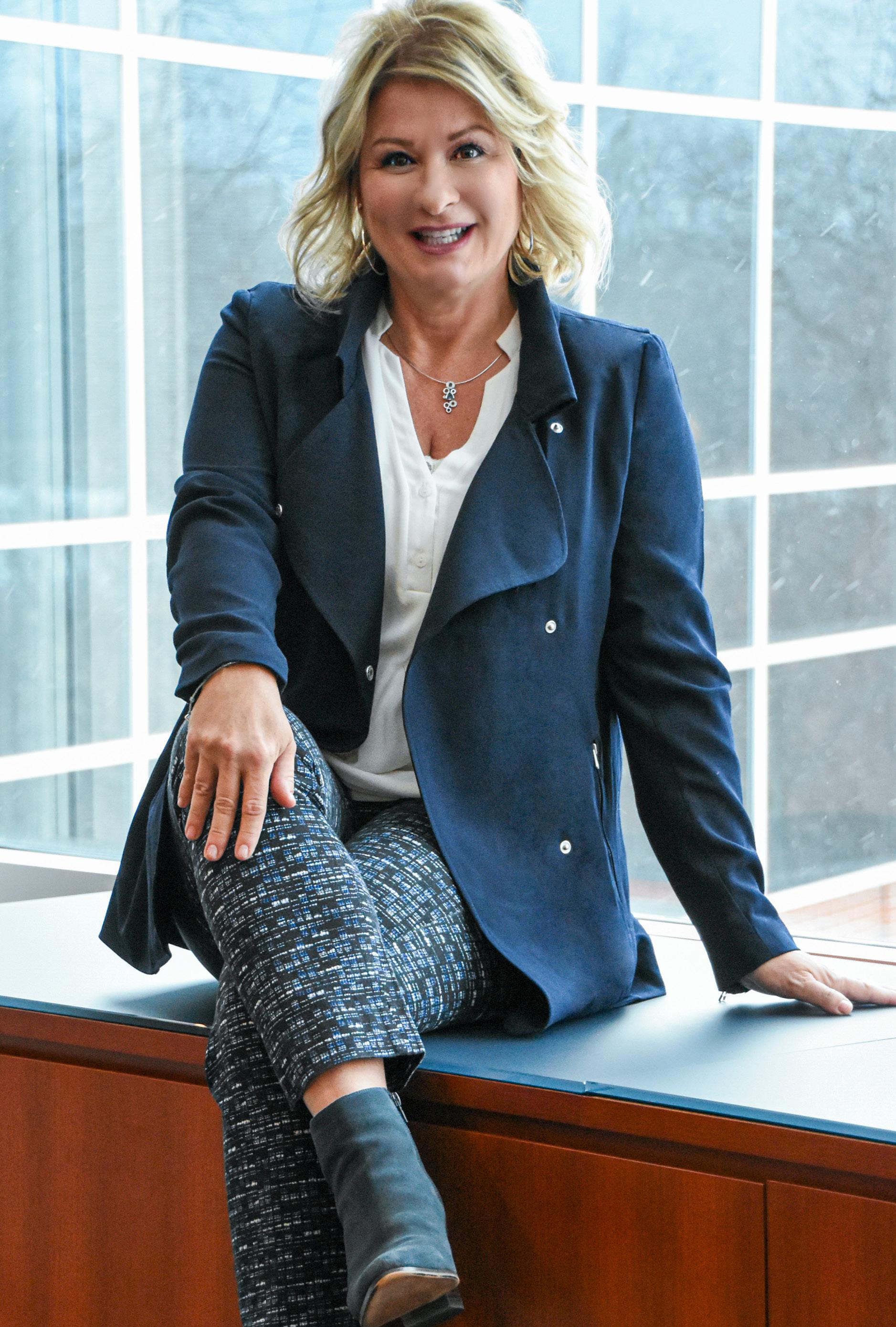
where it’s at and supporting its core beliefs are important in establishing what your benefit strategy and mission statement will be. We developed a mission that has really aligned well with our decentralized culture.”
The global director says it was essential to develop a clear and attainable strategy in establishing the benefits program. “We decided that we did not want to be a market leader in benefits; however, we wanted a market-competitive and value-driven benefit design across the globe,” Behrman says. That meant working hand in hand with insurers and other stakeholders around the world to determine what makes most sense to streamline worldwide, versus what geographic locations might have to be much more locally tailored based on the needs of employees.
Results on Both Sides
The success of the BorgWarner benefits program seems to be working from both sides. Of all employees, 85 percent have nothing taken out of their paycheck for their medical plan. The company’s 80/20 cost-sharing plan isn’t just incredibly competitive as an attraction tool; it’s clearly working.
The company’s “premium point discount system” is a point system where employees can keep the amount of money deferred for health costs out of their paychecks by engaging in behaviors critical for maintaining a healthy lifestyle, like completing a health risk questionnaire or an annual physical or dental exam. “It’s not only an attraction tool, it’s a retention tool,” Behrman says, “because if you look around, you’ll find very quickly that it’s certainly not the norm.”
From the other side, Behrman has also been able to drive significant savings. “When I started, we took a look at the consumer-driven methods that were out there and decided it was time for us to get on board. Year over year, our communication strategy focuses on individual accountability our people have relative to healthcare costs,” the director says.
That effort has kept health costs growing at an average of 4.5 percent year after year, a significant achievement considering wildly fluctuating healthcare costs. A Willis Towers Watson study showed that the program runs roughly 9 percent more efficiently than other members of its peer group, and in BorgWarner’s world, that’s a difference of nearly $5.5 million dollars.
The Feature 19
OUR INVESTORS COME FIRST. WE HAVE THEIR BEST INTERESTS AT HEART.

The Value of the Team Behrman says the success of the healthcare plan should be reflected back onto the people at BorgWarner. “It’s our employees and their engagement that really is the driver in keeping costs low,” the director says. “My team and I deliver the messaging of what’s available within our programs and why engagement in overall well-being is important, including our retirement program. BorgWarner has made an investment to ensure that its people are able to contribute to and move into retirement.”
The numbers, once again, back up the words. Ninetyseven percent of BorgWarner employees are deferring pretax contributions into their 401(k)s. “Our plan uses Vanguard, and our enrollment numbers beat their own in-house plan,” Behrman says.
The benefits director says that the satisfaction she gets from her role is present every day in those around her. “I work with people who are passionate about what they do, and I get to see improvements in people’s health and well-being,” Behrman says.
BorgWarner’s workforce varies from foot-in-the-door first jobbers to sixty-five-year-old lifetime employees who have no plans on retiring soon, and Behrman and her team have been able to help each and every one. “This team has proven to be highly successful, and I think it’s something we should all be proud of.” AHL
“[BorgWarner’s benefits strategy] is not only an attraction tool, it’s a retention tool, because if you look around, you’ll find very quickly that it’s certainly not the norm.”
20 AHL
Vanguard congratulates Michelle Behrman and BorgWarner. It’s been our pleasure partnering with Michelle and BorgWarner to build retirement plan solutions that help ensure their employees are on track for successful retirements. BorgWarner’s combination of smart plan design and personalized communications has generated tremendous leaps in participation and employee savings rates.
Better Healthcare Through Better Benefits
Candace Shaffer on balancing cost, impact, and convenience to put together the best possible benefits package for Purdue University’s massive employee population
“Ilove benefits,” says Candace Shaffer, senior director of benefits at Purdue University. Her foray into human resources came somewhat as a surprise, after she spent more than a decade in early child development and education.
It turns out, Shaffer’s former career has proved a great training ground for the challenges of managing benefits for the giant university—she’s well versed in using data to understand how things will affect individuals and families, and she understands the numerous factors that impact a family’s well-being.
By Stephanie Zeilenga
Shaffer first jumped into the HR world about six years ago when she was hired by Purdue University—her alma mater—to develop, promote, and maintain its family-friendly practices. By 2017, she had been promoted to benefits director, followed by a promotion in early 2020 to her current role as senior director of benefits. “I became fascinated with benefits when I learned about how
The Feature 21
Candace Shaffer Senior Director of Benefits Purdue University
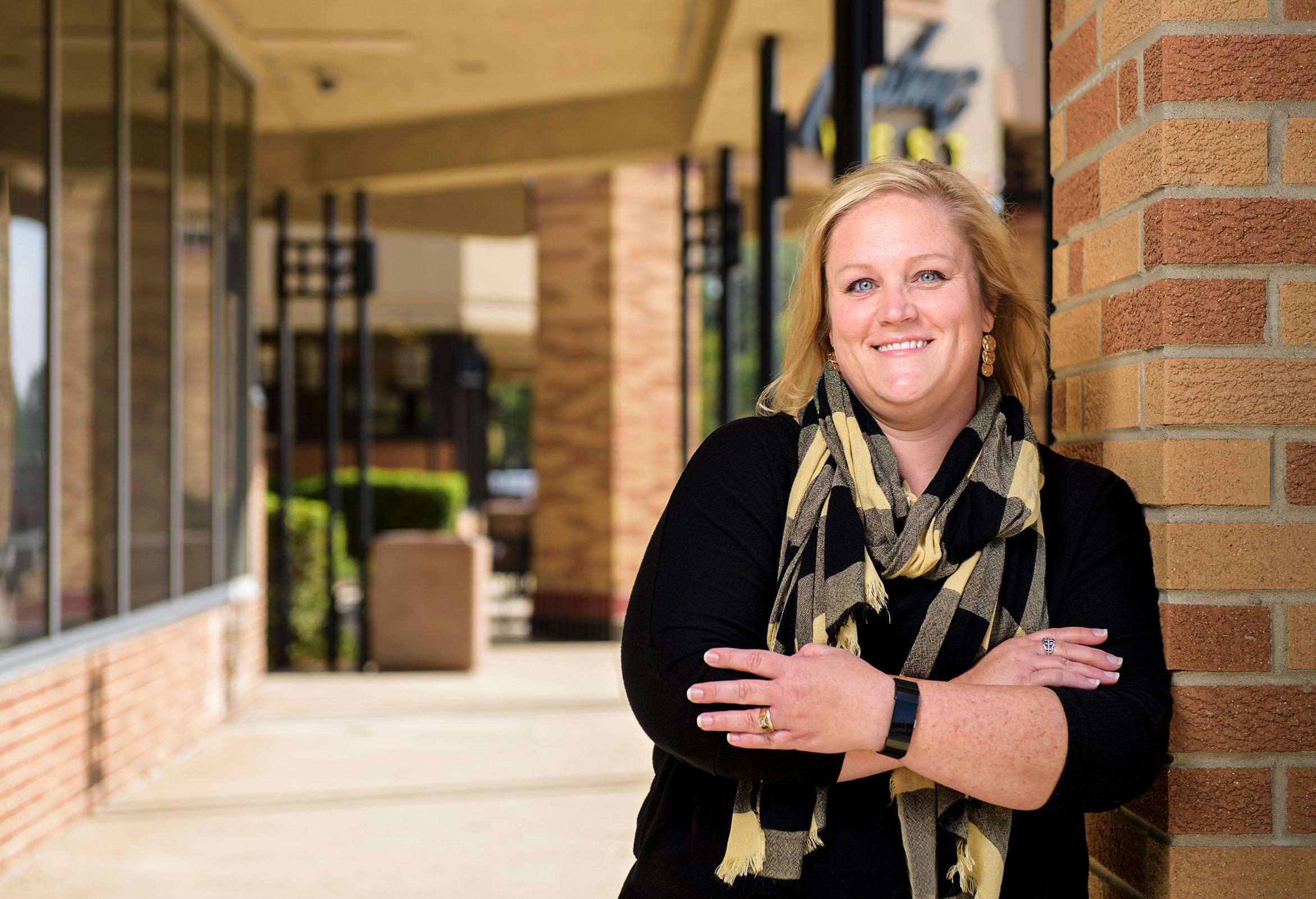
they’re analyzed not only from a financial standpoint but also in terms of their impact on employees and their families,” she says.
A Rand Corp. study in 2019 found that Indiana has higher healthcare costs compared with most states. Shaffer’s main goal is to buck that trend at Purdue while also improving care and convenience for its employees. “We’ve had a challenge on our hands to bend our trend curve and be creative in figuring out how to provide healthcare in a different way,” Shaffer says.
That’s no easy feat, considering the sheer size of Purdue’s population— the university has twelve thousand benefits-eligible employees and about twenty-five thousand members on its medical plan. This number includes just about every type of family you can think of.
22 AHL
Purdue University Office of Marketing and Media
“My challenge is creating a benefit package that works for all of them,” Shaffer says. “We want to make sure the benefits the university provides are family-friendly and accommodating and inclusive for everyone.”
To that end, Purdue recently opted in to Anthem’s HealthSync network, a curated list of providers that Anthem’s algorithms have identified as providing high-quality, comprehensive care at a cost-efficient price. “By choosing a doctor in this network, our employees know they’re going to get quality care at the best possible cost. It can make navigating the healthcare system easier,” Shaffer says.
In 2020, Purdue also added concierge programs for prescription drugs and cancer treatments. Like the HealthSync network, both programs are designed to make navigating the healthcare system a little easier. The prescription program identifies where prescriptions can be purchased for the lowest cost. For cancer patients, the concierge program guarantees they can be seen by a physician within one day. Purdue employees and their families are not obligated to continue care with the program’s physicians;
but if they do, they’ll essentially get a quarterback on their team, helping them coordinate appointments, Shaffer says.
Of course, any changes or additions to Purdue’s benefits go through a meticulous, data-heavy vetting process, spearheaded by Shaffer and her team. “We’re big on data, so whether you’re a new vendor or an established vendor offering a new program, I want to see where you’ve been successful and I want to see the data proving it,” she says. Any proposals for benefits also go in front of a large stakeholder group at the university.
The cost for the university and individuals, the impact to employees and whether it makes their lives easier are all important considerations. “For instance, a couple percentage points of our population gets diagnosed with cancer each year, and it’s a big spend for them and for us,” Shaffer says. “With the cancer concierge program, there was an

POPULATION HEALTH RETIREMENT LHDbenefits com
“We’ve had a challenge on our hands to bend our trend curve and be creative in figuring out how to provide healthcare in a different way.”
The Feature 23
opportunity to significantly impact that group by making treatment less costly and less overwhelming to navigate.”
“Purdue’s use of data has also transformed how they talk with employees about benefits,” says Melissa Cotterill, executive vice president of Westcomm, which partners with Purdue on benefits communication. “It has allowed them to engage specific audiences with information that is relevant and personalized. It is an effective approach to help employees better understand and use their benefits.”
Shaffer’s next big project is revamping Purdue’s Center for Healthy Living, the campus health clinic, by replacing the existing structure with a whole new
facility. The last three years have seen a doubling of patients at the Center, which in addition to treating illnesses and chronic conditions also offers no-cost wellness programs. Data shows that patients who are established at the clinic have lower risk and lower costs by about $2,500 per year, Shaffer says. In other words, a win for all.
“We have to replace the clinic’s physical building, and we’re looking at expanding services,” Shaffer says. At the moment, everything from adding a larger imaging center and lab to adding a pharmacy and bringing in specialists is on the table. “This could be a magnet to really control and contain costs and make things easier for our population, too,” Shaffer continues, noting that hospitals and most local providers are about thirty minutes from campus, which means a doctor’s appointment can take nearly a half day. “I want to create a solution on campus that’s convenient and offers quality care.”
Regardless of how the Center for Healthy Living changes, Shaffer’s goal remains the same: for benefits at Purdue to be relevant, cost-effective, data-driven, and—most importantly—outcome-based.
“When you’re spending the type of money we do on healthcare, it should be outcome-based,” she says. “I don’t want to tell our diabetic population, for example, to engage in a program if it’s not going to be helpful for them or make their life better in some way.” AHL
24 AHL
“Whether you’re a new vendor or an established vendor offering a new program, I want to see where you’ve been successful and I want to see the data proving it.”
Raise the Bar for Wellness Higher
When it comes to work problems, Alyona Richey is here to hear you out. “I want individuals to come to us for help, for resources, for guidance,” says the director of benefits at international law firm McDermott Will & Emery. “I’m here to support all partners—our employees—and also to support the firm as a function.”
Richey, who holds an MBA in finance from Avila University, started her career as a retirement plan specialist. In this role, she provided clients from a wide variety of backgrounds with guidance on retirement planning. She enjoyed many
Guided by personal experiences, Alyona Richey enriches
McDermott Will & Emery’s benefits offerings through a wide-ranging wellness program and parental leave benefits
By Chip Hooper
facets of the position, which required comprehensive training on a number of retirement plans. But it was “helping people and resolving issues” that spoke to her the most and laid the groundwork for her transition into the benefits function, first at former big law firm Howrey, where she worked for seven years, and then at McDermott Will & Emery.
The Feature 25
“In human resources and benefits, you get to work with people pretty much every day. You get to meet them in person. I really love that aspect,” Richey enthuses. “With my passion for working with people plus my passion for constantly learning and expanding my knowledge, I feel like benefits is the perfect fit for me. There are so many opportunities to learn, and especially in this particular role in benefits and HR, it evolves constantly, and you have to keep up with the changes.”
Wellness represents another passion for Richey. So, it is fitting that a top priority among her long list of ongoing projects is rolling out McDermott’s global wellness portal. The portal complements the firm’s existing wellness program, which provides a full slate of offerings related to employees’ physical, nutritional, mental, and social health. Programming ranges from mental health seminars to meditation and yoga classes to walking challenges to retirement resources and financial education curricula designed to aid employees’ fiscal health.


26 AHL
H3 Photography
Photography
Alyona Richey Director of Benefits McDermott Will & Emery
(Running Photo), MobyTheDog
(Portrait)
For years, the firm handled the wellness program internally, creating a calendar and managing the implementation of all programming. As employee participation and engagement increased, however, the need for a sleek, centralized portal became clear.
When choosing a service provider for the portal, Richey and her team kept many considerations in mind. “It was very important to us that the portal was GDPR [General Data Protection Regulation] compliant because we were offering the portal to our international offices,” Richey says. “That was our biggest challenge. We also wanted a stable vendor with a lot of knowledge when it comes to wellness. And it would need to be user friendly.”
After a lengthy search, “we finally found the one,” Richey says. The firm has begun implementing the portal across McDermott’s US, European, and Asian offices.
Another initiative Richey is working on, streamlining McDermott’s parental leave policies, has taken on a “very personal” dimension for her. “My daughter was born in May of 2018. I’m fortunate enough that
we have a very good maternity leave policy, where I was able to take twelve weeks off, paid by the firm, until I returned to work in early August,” she says.
When Richey returned to work and started dropping off her daughter at daycare, she says, “What I learned is you can start daycare at six weeks. It was unbelievable to me. I didn’t know. It was an eye-opening experience.”
Now, armed with this firsthand perspective on new motherhood, “I’ve been looking at various resources that we can provide to our population to help them, to ease the stress of being a parent and offer them support,” Richey says. “I constantly look at various vendors. And we’re looking for other resources as we work on building out our parental leave benefits.”
McDermott gives people returning from parental leave “transition support days,” meaning twenty additional days of backup childcare. The company also offers a milk shipment benefit for nursing mothers who are traveling for business through Milk Stork, which mails mothers a cooler at an address of their choice. Mothers can then opt to either ship the cooler back to their homes or take it with them on their travels.
WHAT IT TAKES TO GO THE DISTANCE
Alyona Richey’s path to completing an ultramarathon
50 Miles to run on race day
8 Hours: target finish time
16 Weeks of training
4 – 5:30 a.m.: the time Richey wakes up to start her training
30 Miles: greatest distance ran in a single day of training
80 Miles ran in weekly training runs
46 Electrolyte Tablets carried on training runs
9.20 mph: Richey’s average pace
“In human resources and benefits, you get to work with people pretty much every day. You get to meet them in person. I really love that aspect.”
The Feature 27
Your success is at the heart of what we do
That’s why so many organizations count on Securian Financial as a long term partner for their Group life and voluntary benefits. Our adaptable, consultative approach puts your success first, so you get the most relevant solutions for your business and your employees, today and always. Learn more at securian.com/ groupinsurance
Yet another benefit that McDermott has introduced is “mindful return,” an online course offered to new parents containing tips and reminders. In addition, new parents can join a private forum with other parents.
“I found personally that being a new parent, I always wanted to hear from others in the same situation and share my ideas and ask questions,” Richey says. It’s comforting to be part of a community of people in similar circumstances, “to know that I’m not the only one with those questions.”
In addition to helping McDermott employees in all aspects of wellness, parenthood, and beyond, Richey spends a great deal of time focusing on her personal wellness. As an ultramarathoner, Richey runs up to eighty miles per week to train for her next race—in this case, the JFK 50 Mile in Boonsboro, Maryland.
long runs take place on Saturdays and Sundays, running up to thirty miles as the race draws closer.
Instead of counting calories, Richey focuses on eating nutritious foods, high in protein and carbohydrates. Favorites include sweet potatoes, peanut butter, and almond butter. She also stays hydrated, drinking plenty of water and carries plenty of electrolyte tablets on her runs to replenish all the salts she loses.
400
“I prefer longer distances,” Richey says. “I used to run marathons a lot, and that was my race of joy. And then I decided to run an ultramarathon, and that was even better. I get out there and I just want to run.”
Richey wakes up “as early as possible” in the mornings to hit the pavement. Her
Aside from continually challenging her physical limits, Richey limbers up her mind by learning Spanish alongside her daughter, who is enrolled in a Spanish immersion daycare. Currently in Spanish 101, Richey plans to push herself further in the intermediate level next year. AHL
securian.com
Robert Street North St. Paul,
55101-2098
Securian Financial Group, Inc. All rights reserved. F93179 Rev 2-2020 DOFU 2-2020 1072814
MN
©2020
28 AHL
“I’ve been looking at various resources that we can provide to our population to help them, to ease the stress of being a parent and offer them support.”
The Total Rewards Scholar
By Keith Loria
With more than twenty years of experience in human resources leadership under her belt, Diane Emery is held in high regard throughout Florida’s academic landscape. As a longtime member on the board of the Independent Colleges and Universities Benefits Association (ICUBA)—a group of independent, not-for-profit academic institutions that come together to provide medical benefits to their employees—Emery has helped advance benefits within several institutions to help staff thrive in their positions.
Emery spent the past fifteen years of her career at Nova Southeastern University (NSU)—a private, nonprofit research institution in Fort Lauderdale. In early 2020, she was offered a job at Barry University under the recommendation of a fellow ICUBA member, a vice president and CHRO at Barry University.
Having spent fifteen years helping to advance total rewards policy at Nova Southeastern University, Diane Emery seeks to do the same in her new position at Barry University
The Feature 29
“I’m looking forward to the change,” Emery says. The new role is similar her job at NSU, though she won’t have compensation reporting up to her.
“It’s a smaller university, and it will be strictly benefits and administration. Instead of four thousand employees, it will be eight hundred,” she says. “It will be hands-on. I will be working closely with the faculty and staff, hopefully to help them make some healthy lifestyle changes.”
Naturally, it’ll be a lifestyle change for her as well.
Emery graduated with a fine arts degree from the University of Tulsa in her home state of Oklahoma and moved to New York City with aspirations of making it in the arts. In between consulting and freelance work, she would do temp work at an office. Eventually, that office went private and they were looking for someone to come in and help set up the HR department.
“I needed to make a commitment to them, and I did, and I left all of my freelancing jobs behind and helped set up this HR department, and that’s how I got involved in this industry,” Emery explains. “A lot of the work that I’ve done, even in New York, was about benefits, and that always interested me.”
Emery moved to Miami and took a job working for Vincam, a professional employer organization, where she was tasked with onboarding new clients and doing due diligence around the benefit plans and coverages. Jobs at a couple of other health-related companies followed before she found a fifteen-year home at NSU.
“When I had first moved down from New York, I did a very small consulting job for NSU—I implemented a benefit admin component of their payroll system—and it was just a three-month thing,” Emery notes. “I stayed in touch with the director and she contacted me years later and said there was a problem in the benefits area, so she asked me to come in and take a look.”
Although Emery began her time there as a consultant, it wasn’t long before she moved into a permanent position, eventually moving up to managing director of total rewards. In this position, she helped create an appropriate wellness and benefit strategy to support the mission of the university.
“It’s an interesting area because it does signal how an enterprise values its employees,” she says. “It’s really personal. Your programs need to be focused on people. But it’s also very compliance-based and process-based because you need to mitigate risk for the enterprise. You have to have employee satisfaction and utilization, and you have to be able to advocate for your employees when they need help.”
Emery starts out by looking at data, as it points her to the areas that need the most attention. This step is challenging because there are different data sets for behavioral health benefits, prescription drug programs, and others.
“It does help you understand the most important things to do and informs the way we develop our program in our wellness area and it informs us about the components of the benefit plans we promote,” she says. “You have to wrap it up and look at performance
“It will be hands-on. I will be working closely with the faculty and staff, hopefully to help them make some healthy lifestyle changes.”
30 AHL
guarantees with your vendors. It’s about people, it’s about compliance, and it’s about process.”
When Emery first started at NSU, she sought to mend the sick leave donation policy, creating a way to move away from the old program and towards a self-funded short-term disability program.
“We were able to provide a better safety net for employees who had been working at the University for at least three months, as the prior program required a year,” she says. “We were able to provide 60 percent benefits for six months and to extend the period of time that the University continued to make premium payments. It was really successful and probably the thing I am most proud of.”
Heading to another mission-driven institution, Emery knows they don’t have a short-term disability program currently, and that’s one of the things she plans on looking at once she begins her job.
“My general philosophy of this work isn’t going to change. I’m still going to be looking at the data, I’m still going to be ensuring compliance to make sure we’re mitigating risk for the enterprise, and we’re going to be taking care of the employees,” Emery says. “The wellness piece of it will be a little different, as the population health data will be different than NSU’s and it’s going to be a little bit different demographically.”
She plans to source some new relationships with vendors and get things moving quickly.
“For me, I enjoy the interaction with people—and not just the employees. I love supervising my staff and it’s important for me to see that they can continue to develop their skills,” Emery says. “I’m also a little bit of a process person, so I’m always interested in trying to understand how to improve the way we administer health and wellness plans, and how can we engage employees better.” AHL

Independence
Lockton celebrates Diane for her innovation and leadership. Lockton has grown to be the world’s largest privately held insurance broker by empowering our associates to focus solely on helping our clients achieve their business objectives. What makes us stand apart is also what makes us better: independence.
changes everything.
lockton.com AHL_Print_Final.indd 1 2/27/2020 9:15:48 AM The Feature 31
As the world’s largest independently held insurance broker, we answer to no one but our clients. This gives us the freedom to do what’s right for you.
Driving a Benefits Strategy
Pamela Ventura, head of benefits for Capital One, looks for solutions that simplify how associates interact with benefits
By Keith Loria
32 AHL
Pamela Ventura is on a mission—to make every one of Capital One’s 50,000 associates feel personally supported and empowered to live their best lives. As the head of benefits, she’s leading her team towards this goal by designing market-leading health, wealth, and well-being benefits that are all delivered through an amazing associate experience.
Ventura’s passion for her role comes from her nontraditional path to the HR world. According to her parents, Ventura knew she wanted to go to law school at a young age—younger than she can remember.
“It’s just what I always wanted. I remember knowing when I went off to college that I wanted to continue on to law school,” she says.
Ventura graduated with a degree in international studies and French from the University of Richmond in 1992 and earned her JD from Wake Forest three years later.
Initially attracted to employment law, she spent two years with the firm McGuireWoods before moving to an in-house legal role at Anthem in 1997. While at the health insurance provider, she was responsible for advising human resources professionals and managers on employment law matters.
“I really liked the company, but I was looking for something different,” she explains. Though she loved the intellectual aspect of law and the relationship building involved in advising clients, she felt she couldn’t effectuate change and see it through to a solution. So, she took on a new role that gave her that opportunity.
In 2006, Ventura made a full-time departure from the law and became Anthem’s director of human resources. In this role, she was tasked with developing a national wellness and health improvement strategy for associates and their families. She worked collaboratively on benefits design to ensure offerings were competitive, cost-effective, and compelling, while demonstrating the wellness program’s effectiveness and return on investment through comprehensive measurement strategy.
After more than twenty-two years with Anthem, Ventura was offered the role of head of benefits at Capital One.
“I had the opportunity over and over again at Anthem to influence change and drive a new strategy or approach, so I wasn’t really looking for a new role when I got the call from Capital One,” she clarifies. “What attracted me to coming here was the focus the human resources team had on the associate experience. They were shifting the thinking behind how HR is traditionally delivered—as a functional area—to be about the experience the associate has as a customer.”
The Feature 33
“We know that when someone feels healthy physically, emotionally, financially, socially, and has a sense of purpose, that’s when they can bring and express their full selves every day.”
Ventura saw a new opportunity to effect change and took the Capital One role.
At Capital One, Ventura is charged with all the benefits, not just healthcare. She has one team that supports global mobility and another that manages the marketing and associate experience for the company’s total rewards program.
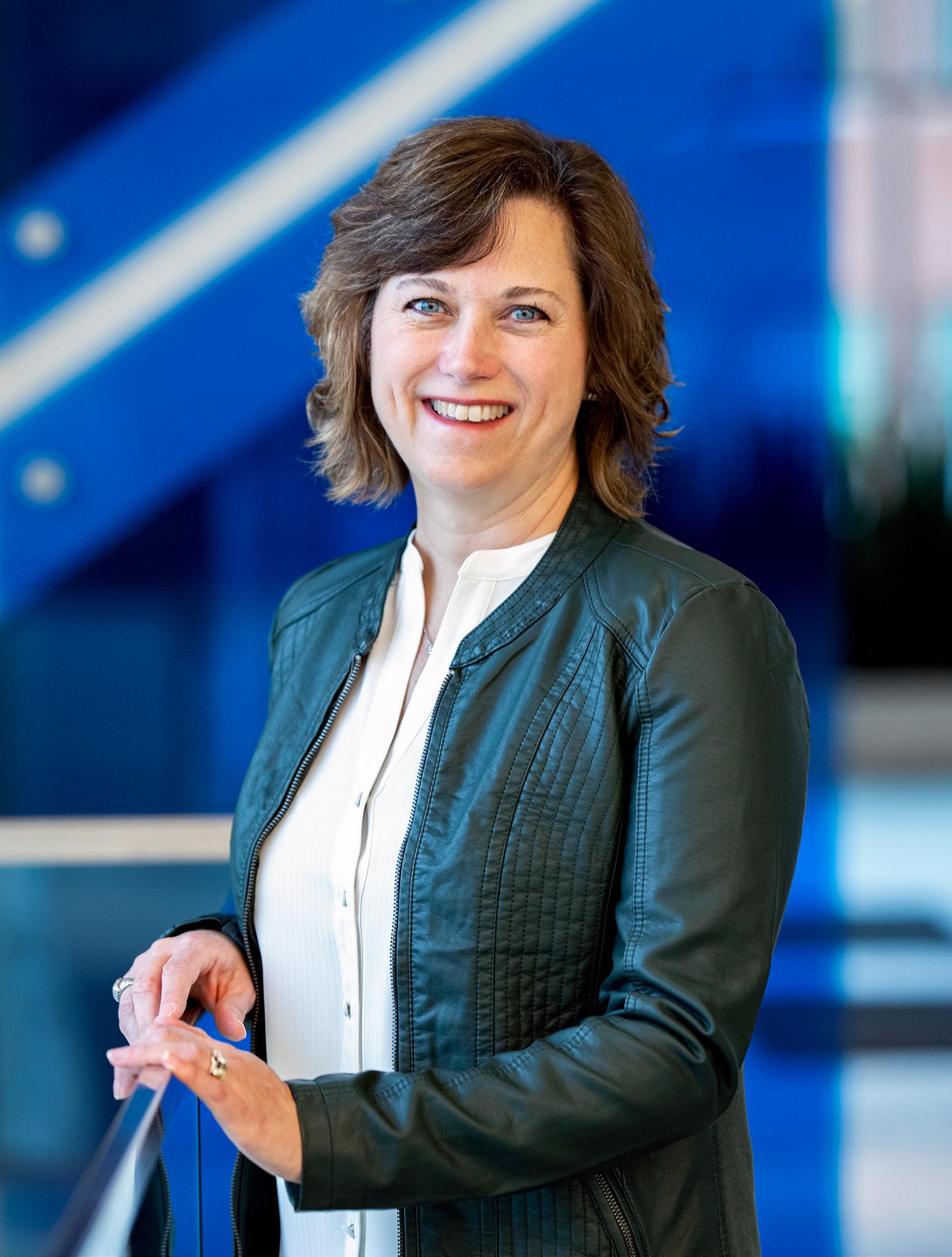
“My experience at Anthem gave me an inside view of the complexity of the healthcare system, and that’s helped me in my role here,” she notes. “I’m now at an
organization where I’ve been able to take a step back from the healthcare ecosystem and look at it from more of an outsider’s perspective. It’s been interesting to see the perspective of leaders from outside the healthcare space and understand in a different way the frustrations of how complex that system is to navigate.”
Thinking back to her first objective with the company, Ventura shares it was simply understanding what the benefits offerings were and the role they played in the company’s broader talent strategy. She says she’s fortunate to have people with a lot of experience in the product development space on her team, which has helped her learn what her associates’ needs are and how the benefits are meeting—or not meeting—those needs.
“We have a really high satisfaction with our benefits, but we want to get underneath that and understand what things are working well and what’s not working well,” Ventura notes. “My first eighteen months have really been about shoring up any immediate gaps we’ve seen in our benefits offering and working with associates to figure out how to more easily navigate the benefits available to them.”
With the latter in mind, Ventura has been looking at solutions that simplify how associates interact with benefits, pivoting the focus to a more holistic well-being and showing that Capital One’s benefits work together to take care of the whole person.
“We’re designing our benefits program to support every aspect of our associates’ and their families’ total well-being,” Ventura says. “Because we know that when someone feels healthy physically, emotionally, financially,
Pamela Ventura Head of Benefits Capital One
34 AHL
Rick Kidd
socially, and has a sense of purpose, that’s when they can bring and express their full selves every day. That sets our associates up to really make an impact on our company and our culture.”
This holistic approach has fed into 2020 strategies for the team, which include building out a financial well-being strategy that supports associates at all levels. “We know Capital One supports its consumers in the financial well-being space, so we just want to be sure our own associates feel the same level of care.”
Ventura’s team is also building out more of a segmentation strategy to figure out how to make the benefits package they offer feel personally relevant to different segments of the associate population.
“Building personalized benefits packages is something that a lot of employers are talking about, but it hasn’t historically been easy to do,” Ventura says. “Capital One is really committed to taking care of our associates, and that’s my passion, too. The prospect of being able to support each associate on an individual level is really exciting. Because that’s really our goal—making sure every associate feels empowered to live their best life.” AHL
Castlight is on a mission to help individuals live happier, healthier lives. Our health navigation platform connects hundreds of health vendors, benefits resources, and plan designs into one comprehensive benefits experience. We guide individuals to the best resources available to them—whether healthy, chronically ill, or seeking medical care.
Great job, Pam!

Navigate employees towards happier, healthier lives Engage and empower employees Improve health outcomes Drive medical cost savings A comprehensive, personalized health and wellbeing experience. castlighthealth.com
The Feature 35
You initiated meaningful change at Anthem to improve the health and wellbeing of our employees, and we’re proud to see you continuing to better lives at Capital One.
The Art of Giving Back
By Sara Deeter
Charles DeSantis couldn’t be more aptly named. To his mind, of course, he is simply a man who has found a purpose in life. But more so, he’s had the gift and honor of working at a values-driven institution where he can do everything in his power to pursue that purpose.
To anyone hearing his story for the first time, DeSantis would seem to be nothing less than a modern-day saint—a man who has made it his life’s work to serve others. A man who has spent years trekking through slums in Nairobi to bring art supplies to children and visiting with families forced to flee from Somalia, Syria, and every other corner of the world. A man who has helped raise tens of millions of dollars in support of those refugees and who considers himself the lucky one to have had opportunities to meet and work with them.
As Charles DeSantis sees it, his calling is to serve others, whether they’re a member of the prestigious Georgetown community or a child living in the slums of Nairobi
36 AHL
Charles DeSantis AVP of Faculty & Staff Benefits and Chief Benefits Officer Georgetown University
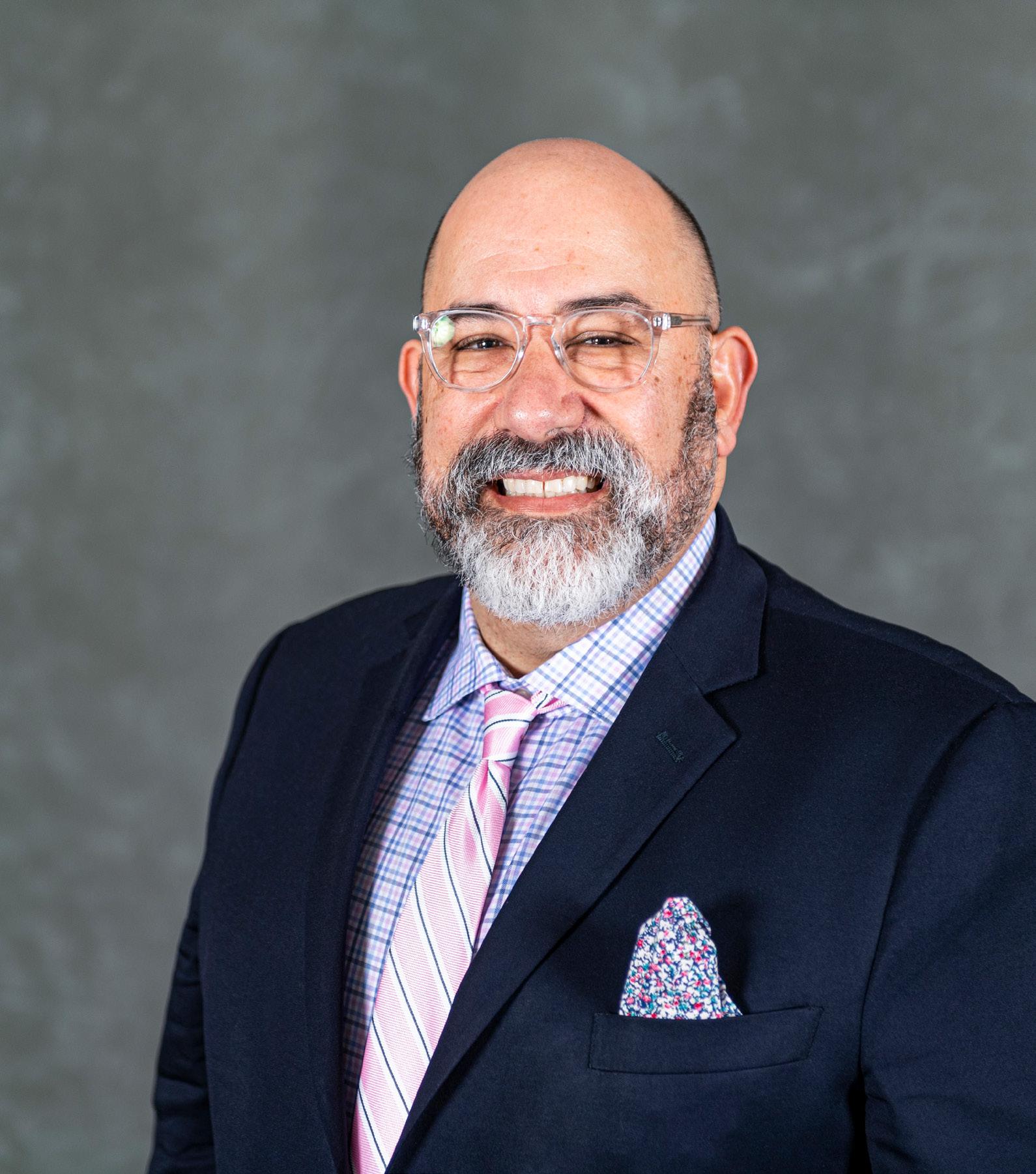
“I was raised with a perspective of gratitude and giving,” DeSantis offers. “My parents had such a tremendous belief in caring for and helping the people of the world, and I think that is what has opened doors for me.”
Over the years, those open doors have led DeSantis all across the country, from the “training grounds” of the Federal Reserve System to top-level human resources positions at Stanford University and Gap Inc. But no opportunity has had a greater impact on his life than the chance to join the benefits team at Georgetown University.
“Georgetown is the oldest Catholic and Jesuit university in the United States, but it really doesn’t matter who you are or what you believe or where you come from. They have a values-based system that anyone can live by,” DeSantis explains. “There is a culture of care and service here, and that is something I can stand behind full-heartedly.”
In fact, as both associate vice president of faculty and staff benefits and Georgetown’s chief benefits officer, it is DeSantis’s job to serve others.
“It doesn’t matter whether I’m serving a faculty member or a facilities worker. I want to make sure that we give everyone across the community the things that they need to do their jobs well and serve the mission of Georgetown,” DeSantis stresses. “They should be able to focus on that work without having to worry about accessing their benefits.”
Since transitioning to Georgetown in 2006, DeSantis has instituted a wellness program, GUWellness, designed to eliminate those worries.
GUWellness focuses on holistic wellness, he explains, and allows him and his
teams to “care for our people wherever they are in their lives, whether they’re trying to purchase a house, practicing mindfulness, or interested in learning yoga or enrolling in parenting classes.”
But in order to meet people where they are on their journeys, DeSantis emphasizes, you have to be in constant communication with them. That is why he holds a monthly benefits Q&A session open to everyone at the University as well as monthly communications about GUWellness offerings and messaging.
“Access to that information is what helps people make the best choices they
ART AND AUTHORSHIP
In addition to his titles as associate vice president, chief benefits officer, husband, father, and painter, Charles DeSantis also holds the distinction of being a published author. He has written two books, one based on his experiences in Africa (Smart, Beautiful, and Important: Teaching Art to AIDS-Affected Orphans in Africa’s Largest Slum) and another about his children (Lucas and Lilly Go to Kindergarten).
Phil Humnicky/Georgetown University The Feature 37
can for themselves and their families,” he says. “That’s why I get out of bed every day—for my family and friends, for the community where I live and work, and for those in the greatest need.”
Of course, DeSantis’s mission to serve those in need has taken him far beyond his home, far beyond the broader DC area.
“Georgetown selects a group of people to go on these Magis service trips every year, and in 2006, maybe three or four months after I came here, I was invited by the head of mission ministry to join the trip,” DeSantis recalls. “The funny thing was, it had always been a personal goal of mine to do work in Africa—I just always thought that I would only get to do that when I retired.”
But when DeSantis and his colleagues landed in Kenya in June 2007, his belief that he was on that trip for a reason began to waver.
“I remember being in this fog of jet lag, walking around and trying to ground myself—it can be shocking, if you’ve never seen third-world poverty before,” DeSantis says. “And I kept having this one thought—why am I here? What is that reason?
“And then I looked up and saw this small child in a sweater walking towards me,” continues the AVP, “an adorable child, walking through the mud and waste of the slum with no shoes. I asked his mom if I could take a picture of him, and then, as I was walking away,
I realized—if there was just for only one reason I was in Kenya, it was for the children.”
All throughout that trip, DeSantis made a point of meeting children in need—children living in poverty, children affected by HIV and AIDS, urban refugee children, and children attending a school in the middle of one of Nairobi’s largest slum, Kibera.
“But as soon as you’re with these children, you forget all the dirt and the harsh environment,” DeSantis says. “Because these children are so hopeful and so beautiful. They believe in the world. They believe in Kenya. And they are just so happy to see you.”
While looking around the school, however, DeSantis noticed that there weren’t any paintings or drawings or other forms of visual art. And to a lifelong painter like him, the absence was jarring. “The headmaster told me that they didn’t teach art at the school because it wasn’t part of the Kenyan curriculum,” DeSantis recalls. “‘But if you bring it,’ he told me, ‘it will be done.’”

MetLife is proud to partner with Georgetown University on designing innovative benefit solutions for their faculty and staff.
We congratulate Charles DeSantis for this well-deserved recognition and for his leadership and dedication to holistic wellness for the Georgetown community.
38 AHL
“That’s why I get out of bed every day—for my family and friends, for the community where I live and work, and for those in the greatest need.”
And in 2008, that is exactly what DeSantis and a Georgetown colleague did. He found donors, collected supplies, and flew back to Nairobi to teach a two-week art course that covered everything from the Mona Lisa to seascapes. And at the end of that session, as the headmaster of the school walked through to see what the children had been working on, DeSantis witnessed something incredible.
“He was looking at the pictures the children had painted, which were all great,” DeSantis says. “But there was this one student who had done an exceptional job, and when I told the headmaster which student that was, he said, ‘This isn’t possible. He’s failing out of school— we were getting ready to expel him.’



“It was so emotional to watch someone with such a huge responsibility on his shoulders have his breath taken away by what this boy had done, and what this boy could do in future,” recalls DeSantis, who has since gone on to found the Kibera Arts Institute and serve as chair of the US Association for UNHCR.
“I was dyslexic as a child, and painting helped boost my confidence,” DeSantis says. “I want to help these children find their confidence and their voices through art because that is something that nobody can take from them. They may own nothing, or next to nothing, but their ability to create is all their own.” AHL
Kaiser Permanente is committed to helping shape the future of healthcare. Our medical teams are empowered by industry-leading, innovative advances in disease prevention and state-of-the-art care delivery. We provide first-rate, affordable care to 12.3 million-plus members in eight states and the District of Columbia. Learn more at kp.org.
HEALTH ISN’T AN INDUSTRY. IT’S OUR CAUSE

Kaiser Permanente’s complete system of care has removed the barriers between doctors, pharmacy, and health plan, so everything is connected. This means better outcomes for your employees’ health—and for your bottom line.


kp.org/choosebetter


Kaiser Foundation Health Plan of the Mid-Atlantic States, Inc. 2101 E. Jefferson St., Rockville, MD 20852 2020ML0065 MAS 3/2/20–12/31/20
Willis Towers Watson is a leading global advisory, broking and solutions company that helps clients around the world turn risk into a path for growth.
The Feature 39
The Wellness Industry Looks After Its Own
How Kristi Abundis is cultivating happier, healthier employees in her role as director of human resources at Nordic Naturals
By Stephanie Zeilenga
40 AHL
After two decades of working in human resources in the acute care hospital industry, Kristi Abundis craved a change. She wanted to be part of an organization that helps prevent the health problems she witnessed every day. She wanted to step away from the highly regulated, unionized hospital industry and land somewhere she could truly make a difference in guiding and supporting employees. That place was Nordic Naturals, which produces omega 3 fish oils and other vital nutrient supplements for the natural products industry.
“It is extremely motivating to work for a company whose mission is to create healthier, happier people around the world,” says Abundis, who joined Nordic Naturals in 2016 and is now director of human resources. “Walking down the halls here, you can feel the pride and passion we have in what we do and what we make—products that are research supported, formulated for results, tested many times, and proven by customers to be effective and great tasting.”
Nordic Naturals’ founding mission of eliminating global nutrient deficiencies has launched the company into another growth phase. It has recently made inroads into the mass market (versus smaller natural products stores) and upped its e-commerce game. It’s also extended its product line, adding vitamins and minerals as well as sugar-free options.
“Our goal is to position ourselves as the optimal health company, where people know they can come for top-quality nutrients for a healthier and more satisfying way of life,” Abundis says. “This is essentially our own brand story, starting with Norwegian cod liver oil. We’re proud of our history, our commitment to sustainability, and our passion for health.”
To support the company’s growth, Abundis has doubled down on efforts to recruit individuals that truly align with the company’s mission and evolving culture.
She’s also expanded her own team, adding a recruiter as well as a culture manager to spearhead employee engagement, employer branding, learning and development, and communication.
Nordic Naturals’ headquarters location—just outside of Santa Cruz, California—is both a boon and a hurdle. “We are extremely fortunate to have our headquarters located on the beautiful central coast, but it is not cheap to live here,” Abundis says. “It’s a challenge to recruit from lower-cost areas, which is pretty much the rest of the country.”
What’s helped is thinking outside the box, such as building a digital marketing team in Los Angeles and partnering with colleges to reach out to alumni. The company also lures top talent with its state-of-the-art work environment, featuring multiple full kitchens to make healthy and affordable eating easier, spaces designed to promote relaxation and creativity, and a sabbatical policy that allows employees to take a threeweek paid sabbatical for every five years of employment.
The Feature 41
“It is extremely motivating to work for a company whose mission is to create healthier, happier people around the world.”
Nordic Naturals’ impressive suite of wellness programs is another attractive perk—and is a significant part of Abundis’s mission to create an environment that nurtures happier employees. In addition to an on-site gym and meditation room, the company offers Fitness

On Demand, virtual on-demand fitness classes. All employees get access, including those who work off-site. Employees can often be seen taking walking meetings around the “Nordic Track,” an outdoor walking path, and many take advantage of the healthy snacks put out every Wednesday afternoon. Employees also have access to a ton of free and discounted products, including a free product of their choice each month, a free product whenever something new launches, and 35 percent off wholesale prices.
Abundis’s emphasis on employee happiness has been recognized by colleagues and partners alike. “Every HR decision that Kristi makes is centered around Nordic Naturals’ employee well-being,” says one close partner, Jessica Locatelli, financial advisor at Morgan Stanley Wealth Management. “Kristi and her team prioritize administering a finely tuned retirement plan that includes ongoing financial education, socially and environmentally responsible investment solutions, and access to individual investment advice. Employee financial wellness is an expanding HR focus, and no one does it better.”
“The well-being of our people is our highest priority,” Abundis says. “Promoting health to our employees creates a general feeling of happiness, positivity, and value in the work we do, and it also helps productivity. While HR can’t be the only ones to make it happen, we can certainly inspire and encourage healthy choices one person at a time.” It may sound soft, but there are real benefits to be had: in the past few years, Abundis says turnover at Nordic Naturals has halved.
One of Abundis’s goals at Nordic Naturals, and everywhere else she’s worked, is to change the perception of HR. (Hint: She cringes and laughs when she watches Toby Flenderson from The Office.)
“HR tends to get a bad rap, with TV shows and movies portraying it as impersonal, conniving, deceptive, ineffectual, and bumbling,” she says. “But it doesn’t have to be that way! My team and I strive every day to be
Kristi Abundis Director of HR Nordic Naturals
42 AHL
“If we have the right people and they know what direction the company is going, we can all move that way together. That’s the key to success.”
supportive and responsive to staff, knowledgeable about our policies and programs, and trustworthy, even when we have to deliver bad news. Often, HR is the only place employees can go to get answers or support, so it’s extremely important that people trust us. Our priority is to achieve our mission of making more people healthier and live a happier, more fulfilling life.” In fact, this mission is one Abundis embarked on once she left the acute care hospital industry.
Abundis has worked hard to earn a seat at the table as a member of Nordic Naturals executive team—which was not a precedent when she started. “When I get a clear line of sight on our business strategies and objectives and can bring that back to my team, we do a better job delivering on that strategy and helping to translate it to what everyone does on a daily basis,” she says.
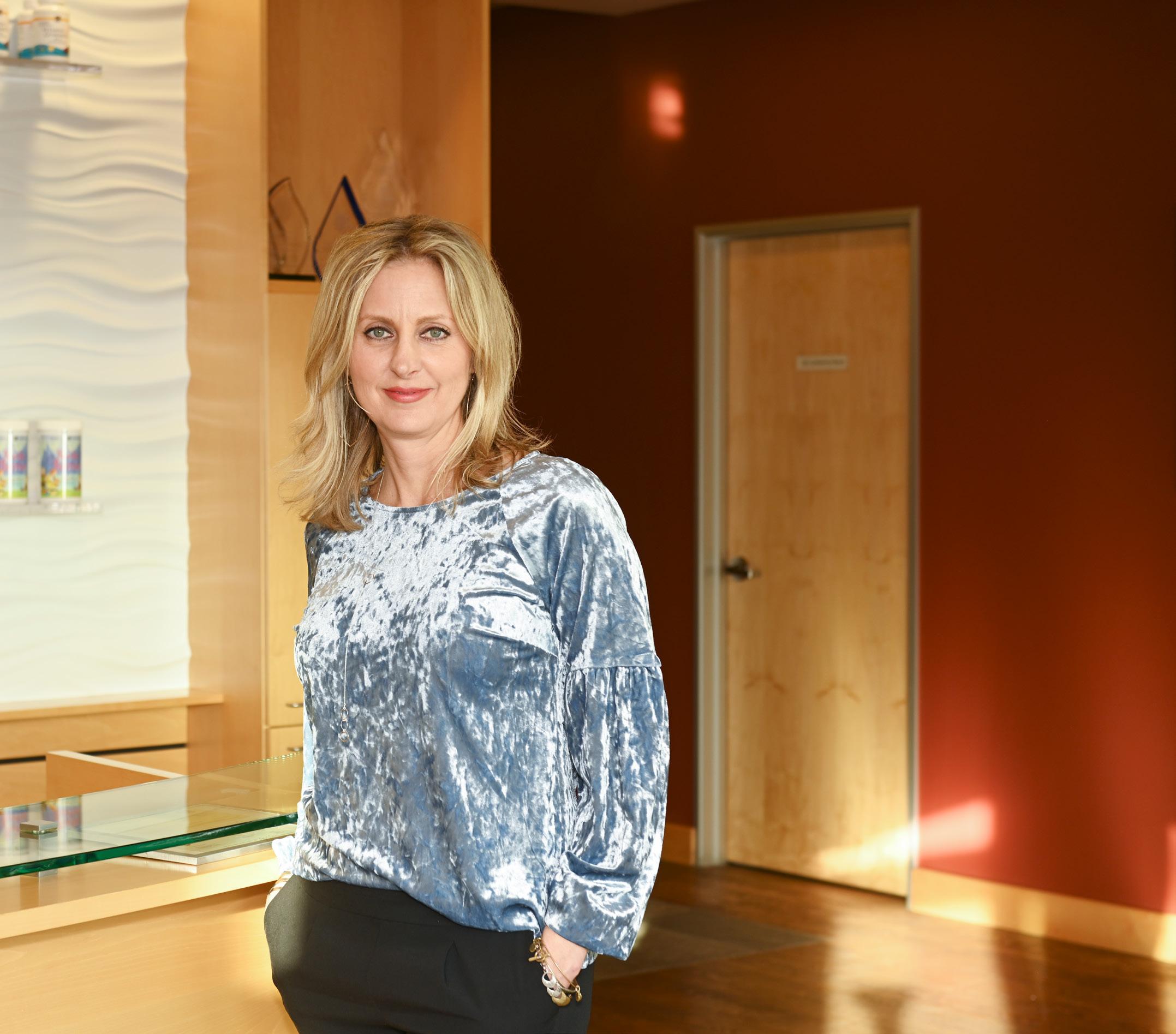
“People are our most valued assets, and if we have the right people and they know what direction the company is going, we can all move that way together. That’s the key to success.”
Inspired by an article she read about the power of positive emotions to motivate and inspire people, Abundis has her sights set on working with company leaders to bring an individualized approach to workforce planning initiatives. “Cultivating positive feelings is not easy because what makes one person happy won’t necessarily have the same effect on the person sitting next to them,” she says. “I’m in the early stages of this project and have found that it will take consistent effort and some follow-through by HR and our staff leaders, but I do believe it will be worth it to cultivate the happiest possible employees.” AHL
The Feature 43
Robert Abundis
Managing Your Fiduciary Liabilities: Do You Need Help?
We know you’re busy managing your business, and that you may not have the time to do the necessary research to make informed investment decisions. Morgan Stanley has the tools and experience to help you make investment decisions for your plan and manage your responsibilities.
Thorough Investment and Plan Design Personalized Approach | Prudent Processes Socially and Environmentally Responsible Investment Solutions
Dependable Relationship Commitment to Extraordinary Service | Ongoing Employee Education Executive Financial Planning | Employee Financial Wellness
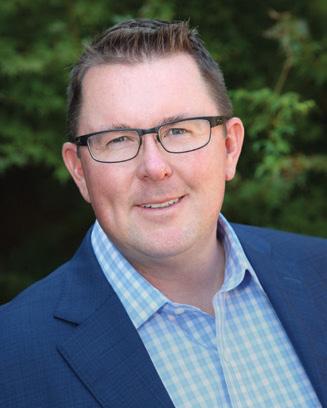






Ongoing Fiduciary Support
Systematic Monitoring and Communication
ERISA 3(21) and 3(38) Fiduciary Service Solutions
Help in Meeting Your Obligations: plan review, audit file, benchmarking, fund monitoring, and so much more
Morgan Stanley Jessica Locatelli Financial Advisor 6004 La Madrona Drive Santa Cruz, CA 95060 831.440.5281

jessica.locatelli@morganstanley.com advisor.morganstanley.com/jessica.locatelli CA Insurance License #0H77343
NMLS #1279644
P. Vaughan, C(k)P™CRPS®
Financial Advisor, Corporate Retirement Director 2725 Sand Hill Road Ste. 130 Menlo Park, CA 94025 650.234.5988
brannan.vaughan@morganstanley.com
advisor.morganstanley.com/the-traum-vaughan-group CA Insurance License #0B80003 NMLS #1270061
Retirement & Pension Plans | 10b5-(1) Programs | Comprehensive Wealth Planning Investment Management | Philanthropy Management
Tax laws are complex and subject to change. Morgan Stanley Smith Barney LLC (“Morgan Stanley”) , its affiliates and Morgan Stanley Financial Advisors and Private Wealth Advisors do not provide tax or legal advice and are not “fiduciaries” (under ERISA, the Internal Revenue Code or otherwise) with respect to the services or activities described herein except as otherwise provided in writing by Morgan Stanley and/or as described at www.morganstanley.com/disclosures/dol. Individuals are encouraged to consult their tax and legal advisors (a) before establishing a retirement plan or account, and (b) regarding any potential tax, ERISA and related consequences of any investments made under such plan or account.
Morgan Stanley Wealth Management Financial Advisors can conduct their business in several ways: individually, as a member of a team of Financial Advisors, or through the formation of a Strategic Partnership with another Financial Advisor or team of Financial Advisors. A Strategic Partnership is an arrangement between a Financial Advisor or a team of Financial Advisors with another Financial Advisor or team of Financial Advisors that has a unique focus or knowledge regarding a specific business concentration, product area and/or client type. If your account is with an individual Financial Advisor, that Financial Advisor services all facets of your account. If your account is with a Financial Advisor who is a member of a team, any Financial Advisor on the team can service your account. If your Financial Advisor is part of a Strategic Partnership, his or her role in that Strategic Partnership may be limited to a specific business and/or product area and may not cover all facets of your account. The use of the terms “Partner” or “Strategic Partner” and/or “Partnership” or “Strategic Partnership” are used as terms of art and not used to imply or connote any legal relationship.
Morgan Stanley Smith Barney LLC. Member SIPC. CRC
The Traum Vaughn Group at Morgan Stanley Brannan
3/2020
2910186
The Path
Every step executives take on their career journeys is pivotal to achieving their current successes. Along the way, individuals accumulate technical skills, foster relationships, and develop the leadership acumen that have turned them into pioneers of the industry.
50.
52.
58.
46. Christy Pehanich Geisinger Health System
Thomas McDonough Teva Pharmaceuticals
Amy West AHRC New York City
55. Mehreen Sherwani Loyola Medicine
Daniel Weber United Surgical Partners International
45
62. Greg Sowers MemorialCare
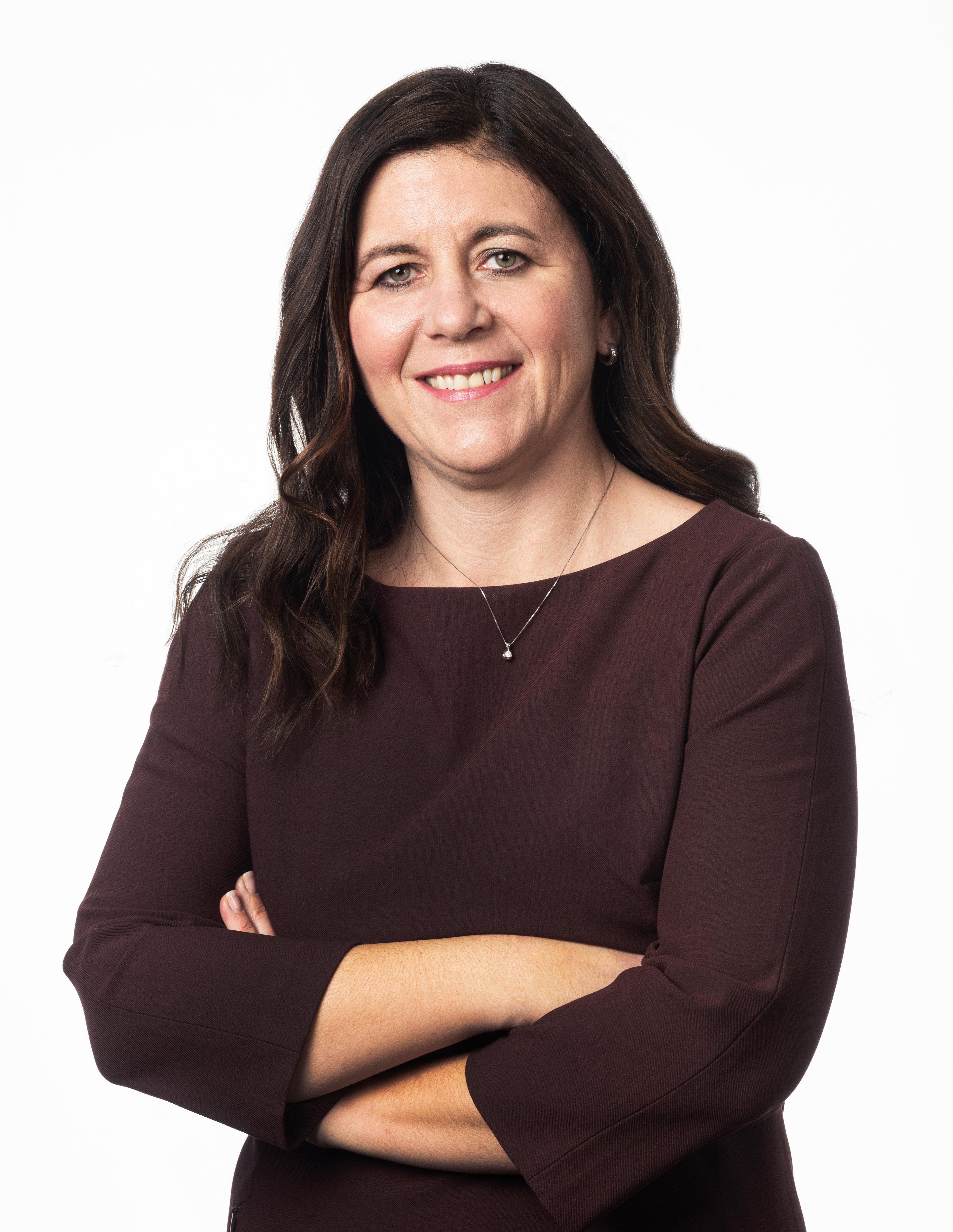 Christy Pehanich
Associate VP of Revenue Management
Christy Pehanich
Associate VP of Revenue Management
Robb Malloy/Geisinger 46 AHL
Geisinger Health System
A Tenure That Keeps Evolving
Christy Pehanich has spent more than twenty years in the healthcare revenue space, but her ability to evolve is why she’s risen so high at Geisinger Health System
By Will Grant
The Path 47
The first week of April 2020, Geisinger Health Plan officials announced that all members hospitalized with a positive COVID-19 test would not be responsible for any deductibles, copays, or coinsurance for treatment during their inpatient stays at Geisinger’s treatment centers.
“As Geisinger continues to monitor and respond to the novel coronavirus pandemic, we want our health plan members to know that cost will not be a barrier to receiving inpatient care when they need it most,” Geisinger Health System (GHS) Chief Medical Officer Dr. John Bulger said in a press release. The move was seen as a progressive yet essential move to combat the worldwide pandemic and grant immediate care to those who needed it most.
GHS was founded more than one hundred years ago to meet the regional needs of its central Pennsylvanian patient population and has gained national prominence since. Twenty-two of those years have included the tenure of Christy Pehanich, who has been with the organization since 1998 and who has been in her present role, associate vice president of revenue management, since 2011.
Pehanich has risen through five different positions at GHS, first as a subject matter expert and senior reimbursement coordinator and gradually into higher positions requiring more breadth, leadership skills, and growth along the way.
Bigger Plans
Twenty-two years means that Pehanich has effectively seen it all, but that doesn’t necessarily mean she knows where it’s going. “As the healthcare organization continues to change and our organization continues to grow, our strategic priorities
change,” Pehanich says. “That alone is enough to continue to pique my interest and keep me fulfilled professionally.”
From 1998 to 2005, Pehanich’s role was in more of a supporting position for the health plan, and as time wore on, she became more interested in working for the plan in a more direct way. “That gave me the opportunity to really become more familiar with coding and reimbursement as well as providing direct education to providing care for a large population and working on process improvements.”
Pehanich would eventually be promoted to manager of professional insurance collections, and the promotions would continue from there. Those promotions required a much different kind of leadership than Pehanich was
used to. In fact, she wasn’t all that used to leadership at all.
“I was very much accustomed to being an independent contributor prior to becoming a manager,” she says. “I really prided myself on being a subject matter expert, but as I moved into the managerial role, it became clear that what got me here wouldn’t keep me here.”
Pehanich says she was able to change her strategy over time, focusing on team development and leadership and valuing “soft skill” development over the tactical hard skills she had previously prided herself on.
The Dollars and Cents of Caring
One of Pehanich’s current initiatives is focused on a problem all too alive and present in healthcare today. “The amount
48 AHL
“I was very much accustomed to being an independent contributor prior to becoming a manager. I really prided myself on being a subject matter expert, but as I moved into the managerial role, it became clear that what got me here wouldn’t keep me here.”
PROFESSOR HEALTH
Christy Pehanich has spent more than twenty years working behind the scenes at Geisinger Health System. She’s also added “professor” to her growing résumé titles. Pehanich is an adjunct professor at King’s College in WilkesBarre, Pennsylvania, teaching a physician practice management course to undergrads.
“It’s teaching the next generation of healthcare leaders, and it’s just very rewarding,” Pehanich says.
but also in assisting in prior balance collection. “We have goals set out right now to collect 100 percent of copays and 3 percent of prior balances at the point of care,” Pehanich explains. “There is obviously a lot of apprehension because they fear the questions that might follow from the patient and their ability to answer those questions. Providing scripting and tools to boost their confidence in having that type of collection has been essential.”
The revenue team has also developed a multidisciplinary denial mitigation workgroup. “Historically, we had focused on mitigating write-offs, and we’ve changed that focus,” she explains. “We’re mitigating denial by looking at the root cause of denial, and what we might be able to do to modify either the process or technology to really understand how to stop the denial from happening in the first place.”
And while the hard dollars and cents of the revenue team might seem black and white in the often very gray world of healthcare, Pehanich says everything her team does calls back to GHS’s mission. “Our brand is all about caring for the population of the patients we serve,” Pehanich says. “Our organizational values align very closely with my own.”
So Pehanich’s team enlisted the patient access staff to begin focusing on not only copayment collection at the point of care,
But that doesn’t mean GHS is immune from the continuously compressing margins in healthcare or the formally flush operating lines for virtually any healthcare institutions of a decade or two ago. “So we’re trying to lead teams toward continuous process improvement and motivating them to drive the work to get it done. I think this is what continues to keep me motivated,” Pehanich says, adamant that as healthcare continues to evolve, so will she. AHL
In healthcare, change is a given. But instead of just reacting to the rapidly changing environment we all face, Christy Pehanich actively works to drive innovations that benefit not just Geisinger, but that lead to best practices that benefit healthcare providers across the country. We’re proud to know Christy, and to help support her mission.
www.visiquate.com

We congratulate Christy Pehanich for her leadership in driving major innovations across the revenue cycle.
The Path 49
Healthy Communities Start at Home
Associate General Counsel Thomas McDonough on his unique path to law and his efforts to improve the well-being of all employees at pharmaceutical giant Teva Pharmaceuticals
By Zayvelle Williamson
Teva Pharmaceuticals is known the world over for improving patients’ lives and fostering healthy communities. But Thomas McDonough, the company’s associate general counsel of employment, labor, and benefits, knows that creating healthy and responsible communities has to start in the halls of Teva itself. For ten years, he has worked to ensure the safety, health, and well-being of all Teva employees.
McDonough has had a “unique” path to his current position, he says. After completing an economics degree at Hamilton College in 1990, the AGC enrolled in an MPA program at the University of North Carolina at Chapel Hill, where he focused his studies on policy analysis. Thus, McDonough was already in his thirties by the time he received his JD from Temple University School of Law in 1998.
Despite being marked as a latecomer to the legal world, McDonough quickly established a name for
himself in the industry. Soon after graduating from law school, he secured a position as an attorney at Wolf Block, one of the largest firms in the United States and one of Philadelphia’s oldest and most respected law firms.
McDonough returned to Wolf Block in 2004 following a yearlong stint as a law clerk for the United States District Court in Pennsylvania and a two-year tenure as an attorney at Morgan, Lewis & Bockius. And it was at Wolf Block, as he began overseeing more and more cases related to labor and employment law, that McDonough found his passion.
To McDonough’s mind, labor and employment law is one of the most challenging and intriguing practice areas that an attorney can specialize in. It serves as an intersection between the law and human issues, he says, and therefore encompasses two of the most complex areas of work in the world.
50 AHL
TEVA LEADS THE WAY
3,500+ products included in Teva’s portfolio
200 million people benefit from Teva’s medicines each day
$380M+ worth of medicines donated to patients across the globe

23 percent reduction in greenhouse gas emissions since 2012
220,000 packs of antibiotics supplied to people in more than sixty countries
In 2010, McDonough’s expertise in labor and employment law earned him an invitation to join the legal team at Teva Pharmaceuticals as the department’s first full-time employment attorney. One of the foremost pharmaceutical companies in the world, Teva is known for producing both generic and specialty medical products.

For more than one hundred years, Teva has striven to enhance the lives of patients and caregivers everywhere. And in the ten years since he started as associate general counsel, McDonough has helped ensure that Teva’s own employees receive that same level of care.
In fact, in 2018, Teva received the EcoVadis Silver Medal in light of the efforts of leaders like McDonough to improve company-wide labor and human rights practices. This medal distinguishes Teva as being in the top 16 percent of pharmaceutical companies in the world and encourages other pharmaceutical companies to emulate the high standards that Teva has set in terms of employee safety and well-being.
To be sure, it would seem that other attorneys working in the labor, employment, and employee benefits space have much to learn from McDonough as well. AHL
Stevens & Lee is proud to congratulate our friend and client, Thomas McDonough, for his invaluable contribution to the pharmaceutical industry. www.stevenslee.com (888) 510-0274 Pennsylvania | New Jersey | Delaware New York | Ohio | South Carolina | Florida The Path 51
Chase Your Purpose
After switching gears from being a Broadway dancer to tapping into her knack for numbers, CFO Amy West feels an incredible sense of fulfillment in her position at nonprofit AHRC New York City
By Sara Verdi
Growing up in the West Village of New York City, Amy West was set on becoming a Broadway dancer. “I had a real affinity for the arts in general, so I trained as a dancer. Of course, like many dancers in New York, I also worked in the food and beverage industry,” Amy remembers, laughing. “The best thing about waiting tables was that I met my husband while doing it, and we’ve been married for thirty-three years.”
Eventually, West realized that dancing and auditioning wasn’t the path she wanted to go down. And after making the difficult decision to step away from her dreams of dancing, West decided to switch up her career direction.
While working at the New York Public Library, West discovered she had an aptitude for organization and mathematics. “They were giving me a lot of accounting work, and one day I thought, ‘Why don’t I find a way to marry accounting with my interest in culture and the arts?’” West explains.
So she returned to school. After graduation, she was quickly recruited by Ernst & Young. While at Ernst & Young, West specialized in healthcare and nonprofits. “Not only was it a great experience, but it solidified my desire to work in the nonprofit sector,” she says. West went on to work with UNICEF USA and the Guggenheim before landing at AHRC NYC, where she is currently executive vice president and chief financial officer.
AHRC NYC is a nonprofit organization that focuses on supporting people with intellectual and developmental disabilities (IDD). AHRC NYC created the first schools, day treatments, workshops, programs, and community residences for this population, and the organization continues to provide services to improve the lives of more than fifteen thousand individuals in the city’s five boroughs per year. To be able to do all of the incredible work that it does within the community, AHRC NYC needs to be backed by dedicated professionals and be in good financial health.
52 AHL
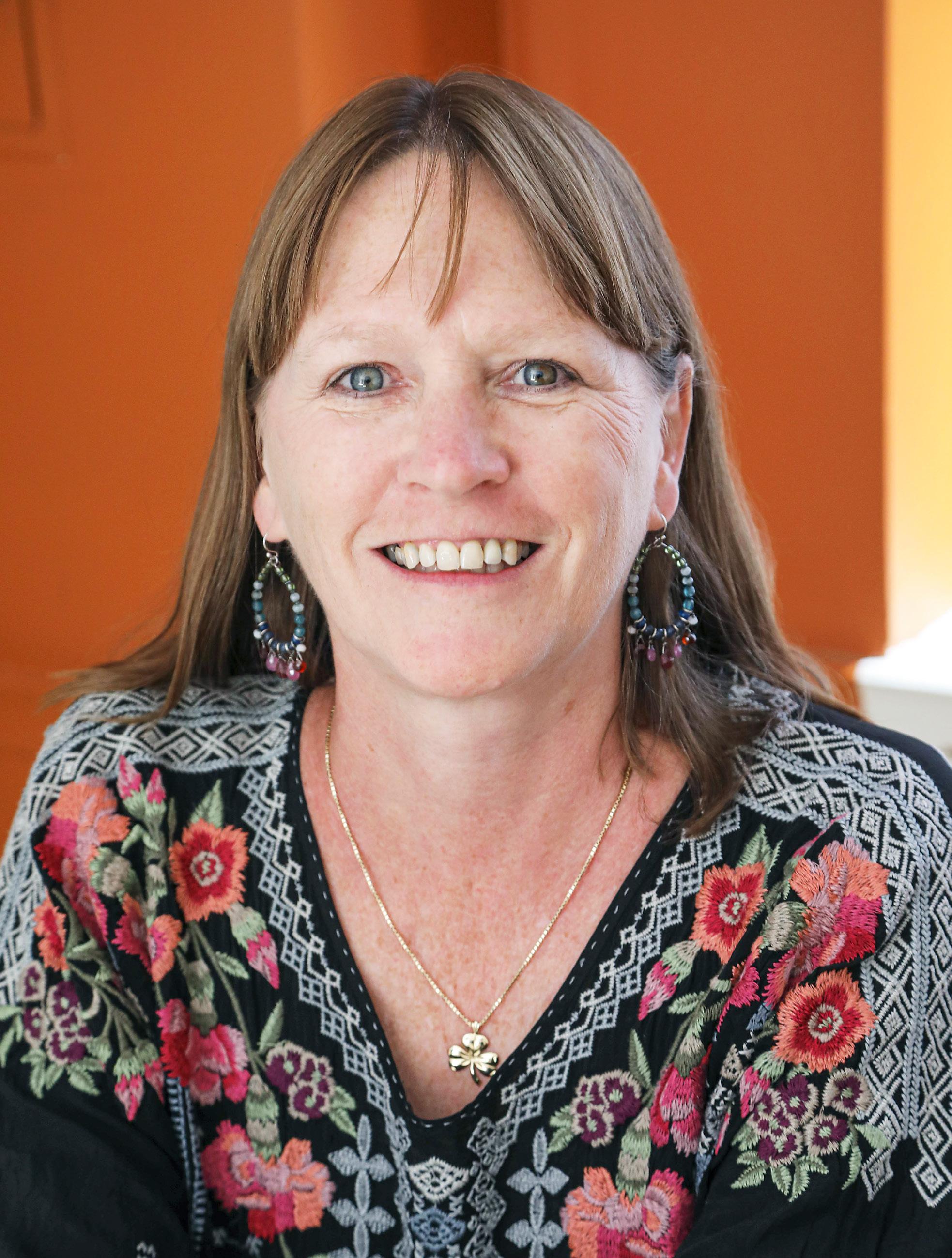
The Path 53
Amy West EVP and CFO AHRC New York City Rick Guidotti/Positive Exposure
“My team plays an important role in our organization’s ability to carry out its mission, and there are really two main objectives that we are working on: maintaining good financial health and focusing on the use of data,” West says. “Within the not-for-profit space, the funding is so volatile, and AHRC NYC is very dependent on state funding. One of the things that I want to emphasize is building our organization’s operating reserve or ‘rainy day fund.’”
regarding people supported and the communities the organization operates in.
Kristy Agliardi, area vice president at Arthur J. Gallagher & Co. and partner of AHRC NYC, believes this data-driven approach is key to helping the company advance. “Amy is passionate about the importance of data and analysis to ensure effective decision-making,” she says. “Constant organizational assessment coupled with a cohesive strategic plan are critical given current funding volatility. Amy views a comprehensive benefit program as a strategic investment in the workforce of today to support the future mission of AHRC NYC.”
Another important initiative that West and AHRC NYC are undertaking in 2020 is a rebranding initiative. “We struggle with this because a lot of people don’t know who we are. Branding is directly connected to building our workforce as well. If people don’t know who we are, chances are we aren’t going to attract the type of talent that we need,” West explains.
AHRC NYC is looking to rebuild their total rewards package, incorporate professional development, and bolster diversity and inclusion. “We want to become the go-to organization for employees, and we want to offer the things that will help get us there,” says West.
She believes that placing a focus on this fund is crucial to the organization’s financial health in the event of economic downturns or the organization’s desire to take advantage of opportunities that might arise. “We are now at a point where funders, regulators, and stakeholders are requiring us to demonstrate our mission effectiveness. With the work that AHRC NYC does, it is difficult to gauge how you are improving the life of people with intellectual and developmental disabilities. In order for us to stay relevant, we need to become a data-driven decision-making organization,” West says. With this focus on data, AHRC NYC is looking to implement an electronic health record (EHR) that serves as a repository of all information and demographics
To West, all of these inner workings circle back to help the IDD communities that AHRC NYC serves. “Financial health will allow us to support the organization in a more strategic way and to take advantage of opportunities that will make us a more agile organization. The EHR will allow us to enhance the programs and services that we provide to the people we support. Data is essential to us as an organization to show us what we are doing right and what we can do better to help who we serve. Rebranding will help us fundraise and enhance our ability to diversify revenue streams and attract talent. And finally, having top-notch talent will provide better support to the people in our programs,” West explains.
Though some of these initiatives are quite new, West is excited for the future of AHRC NYC. “We are only in phase one of a lot of things, but they all are going to help facilitate change,” she says. By October 2020, West hopes that the AHRC NYC will be able to see the end product of initiatives like the rebranding of the organization.
“We have such talented and smart people here now,” she says. “but with this rebrand, we want to ensure that we can continue to attract more talented people so that we can continue to serve the IDD community in the ways that we do.” AHL
54 AHL
“Data is essential to us as an organization to show us what we are doing right and what we can do better to help who we serve.”
The Indispensable Route
Mehreen Sherwani, associate counsel of Loyola Medicine, discusses how a baptism by fire approach to her work awakened a passion for healthcare and collaboration
By Keith Loria
Mehreen Sherwani, associate counsel of Loyola Medicine, never envisioned she would be a healthcare attorney, but in retrospect, it all makes perfect sense.
“I grew up wanting to be a doctor, but the reason I didn’t go that route is because I enjoyed using my analytical skills and writing, so becoming a lawyer became really attractive to me,” she explains. “While in law school, I did not gravitate toward any particular specialty.”
The one thing Sherwani knew for sure was that after graduating law school, she wanted to clerk for a judge. She clerked for the Honorable Justice Thomas E. Hoffman in the Illinois Appellate Court and was inspired by the experience.
“Following my clerkship, I was looking for another challenge and wanted to go into private practice, still not knowing what area of law I was interested in,” Sherwani says. Fortuitously, the judge’s former law clerk, a partner at the law firm L&G Law Group LLP, was looking to hire an associate on the corporate side.
“At the law firm, I did corporate transactional work, and because of my appellate background I also did medical malpractice appellate work, which is somewhat of an odd combination,” she notes. “I really liked working with the healthcare clients. The combination of work piqued my interest in the healthcare environment; specifically, how a health system operates, its distinct culture, and learning all the nuances involved.”
The Path 55
Mehreen Sherwani Associate Counsel Loyola Medicine
Soon, she was advising on risk issues and offering guidance on unique issues for the healthcare clients. Then Sherwani made the decision that she wanted to work in-house for a health system.
That led to her accepting a job as associate general counsel at Ingalls Health System, a smaller community hospital in Illinois, which allowed her to get the frontline experience she was looking for.
“In addition to serving as associate general counsel, I was the privacy officer and director of risk management. I had to learn quickly and triage the issues that came my way. It was baptism by fire, trying to do a lot with very limited resources. It was challenging, but just a wonderful experience for me,” Sherwani says. “I worked there three years, and I knew I wanted to work for a larger health system. That’s when I joined Loyola Medicine, which is owned by Trinity Health.”
In her current role, Sherwani supports three hospitals and is lead counsel for Gottlieb Memorial Hospital, overseeing all contracts of independent physicians and handling medical staff issues, regulatory matters, and day-to-day legal issues. She’s also the attorney who handles medical staff bylaws and medical staff issues for the trio of hospitals.
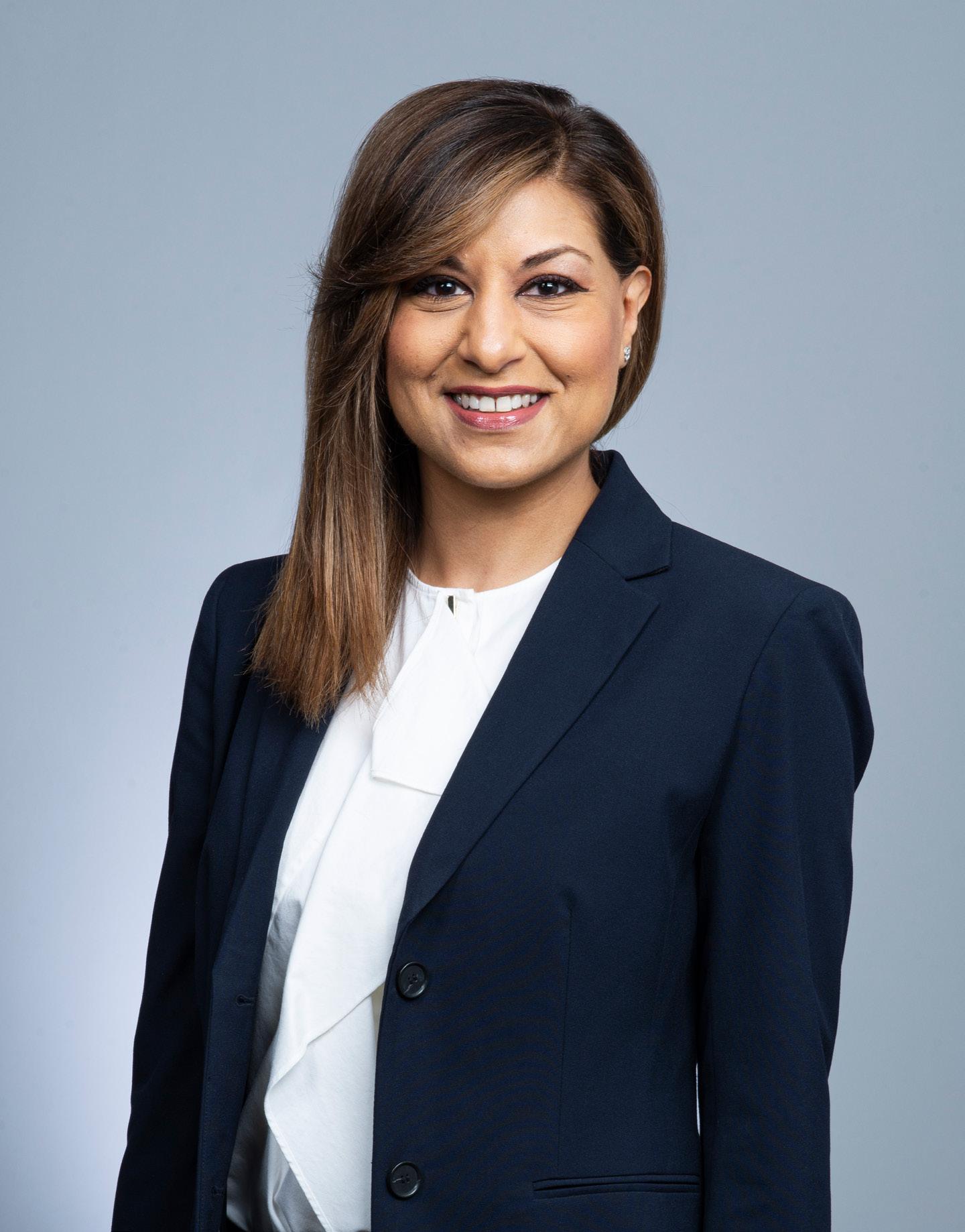
In support of the overall mission, the legal team is together, for the most part, three days a week at Loyola’s main medical center. It’s almost like a boutique law firm environment, allowing for the sharing of ideas and advice.
“Aside from my legal team at Loyola, at the Trinity level, we have specialized
attorneys, so if, for example, there’s a complicated medical staff issue, instead of going to outside counsel, I can go to an attorney in Michigan with whom I can talk through an issue. It’s a great resource because they may have seen something similar at another Trinity hospital and can talk about how they approached the issue,” Sherwani explains. “This expands collaboration further.”
Although she learned great lessons as a private attorney, one of her favorite parts about the in-house position is being able to think creatively.
“We are very fortunate to work as in-house healthcare attorneys in such a dynamic and ever-changing environment. Here, I feel I am very much a business partner in addition to being an
attorney,” Sherwani says. “It is very rare that a client will come to me with a question and I would say no, we absolutely couldn’t do that. We can think outside the box and make something happen by working collaboratively with our business clients and thinking creatively.”
In 2018, Loyola Medicine acquired MacNeal Hospital, a 374-bed, fully accredited teaching hospital in Berwyn, Illinois, which also included Chicago Health System, Chicago Market Laboratories Inc., and some physicians of Chicago Health Medical Group. Sherwani was tasked with helping to integrate the departments into Loyola Medicine.
“We had two of our Loyola attorneys working on the acquisition in a legal capacity, but I was selected as one of
Courtesy of Loyola Medicine 56 AHL
the three integration leads, serving in a nonlegal capacity, in charge of facilitating the integration of four or five different departments,” Sherwani says. “It was a great project for me because I had the opportunity to work with operational colleagues I probably would have never crossed paths with; it allowed me to manage a large project, which I had never done at Loyola before; and it provided me with the opportunity to interface with executive leadership by serving on the integration steering committee.”
She also participated in weekly legal acquisition calls and helped out as a point person to connect the legal and business teams in an effort to eliminate integration barriers, enhancing her role as attorney even more.



“One of my main philosophies, which I’ve held in each of my positions in my career, is to take on every opportunity presented, even if it does not make sense in your career trajectory at the time, work hard, and try to make yourself invaluable,” Sherwani says. “There’s a lot that goes into that. It’s really about trying to learn everything you can—not only from the attorneys you work with but more so your business and operational colleagues. Collaborating with your colleagues, learning the nuances of the culture of your organization, and making yourself indispensable—those are the building blocks which I think can really help propel you forward in becoming a successful in-house healthcare attorney.” AHL

“One of my main philosophies, which I’ve held in each of my positions in my career, is to take on every opportunity presented, even if it does not make sense in your career trajectory at the time, work hard, and try to make yourself invaluable.”
175 W. Jackson Blvd., Ste 950 Chicago, IL 60604 312-364-2500 www.lgcounsel.com L&G Law
our friend and former
Sherwani
insightful legal counsel and
to helping Loyola Medicine
to be a
presence in
The Path 57
Group applauds
colleague Mehreen
for her
dedication
continue
healing
our communities.
Support for the Whole Encounter
Daniel Weber proves the value of revenue cycle management and how changing its processes behind the scenes pays dividends on the forefront
By Keith Loria
58 AHL
Growing up on Long Island with a dad who was a CFO of a small, privately owned hospital, Daniel Weber learned all about billing and reimbursement at a young age, down to how to fill out HCFA [Health Care Finance Administration] forms.
“My dad had a small billing business affiliated with the hospital,” he explains. “I helped out all the time and learned about revenue cycle work probably by the time I was nine years old.”
Today, Weber serves as vice president and head of revenue cycle management for United Surgical Partners International (USPI), based in Addison, Texas. He uses that early knowledge to help track patient care episodes from registration and appointment scheduling to the final payment of a balance. His job involves all aspects of automation, standardized processes, data, and transparency.
“I’m responsible for the receivables today for several hundred surgery centers and hospitals,” Weber explains. “All cash flow and revenue flows through my team. I operate three CBOs throughout the country with several hundred employees in each, making sure we have steady, predictable cash flow to run the business.”
When he came on board in November 2019, he had the opportunity to update USPI’s processes. Weber immediately went to work on adding automation methods, such as standard filing formats to check eligibility for the revenue cycle tool, 835 automated cash applications, and a propensity to pay tool—to name just a few.
The idea is to make processes faster and more automated. Making things run like clockwork gives people more time to focus on the practice of medicine rather than chasing money.
“I’m holding the payer accountable, and sometimes it is hard, but I’m all right with that,” Weber proudly states.
It’s a job that’s not too surprising, given his background and drive. Weber studied finance and accounting in college and saw himself as a future entrepreneur, always asking what people needed and identifying what gaps existed to think of ways to fill those needs. He then transferred those skills to Wall Street and became an equities trader.
“The biggest problem I saw while I was a trader was we had an institutional client in New York Hospital who was having a reimbursement issue,” Weber notes. “I played an instrumental part in fixing that.”
That’s when his entrepreneurship senses started tingling. He founded WEB ER Inc., a specialized physician
management company focusing primarily on the Manhattan market.
“It was trying to fix a problem that was not cyclical—something that is not economically sensitive and something large in scale,” Weber says. “What I realized along the way is that there is no road map for how to do this well, so I decided to pave my own path. I started building revenue cycle teams and putting processes in place and learned how to become an asset to the CFO.”
Within ten years, Weber was working with myriad physicians and practices in the tristate area and saw this as a great opportunity to sell his business. Because he had limitations due to his exit strategy, he pursued an opportunity within the biotech industry at Enzo Life Sciences and provided revenue cycle management for them. From there, he moved on to Caris Life Sciences, followed by Progenity. Then he got a call from USPI and saw this as a perfect opportunity to get back to his roots: working with physicians and hospitals.
The Path 59
“They understand that I have their best interest in heart. I am trying to teach them to be better managers and leaders, versus just doing the job.”

Romy Modlin 60 AHL
Daniel Weber VP and Head of Revenue Cycle Management United Surgical Partners International
Now, Weber partners with USPI’s IT department along with his leadership team to standardize revenue cycle processes and save the business money and time. More than that, refining the department with a fine-tooth comb allows USPI to readily extend its mission forward during times of growth. All the while, Weber believes that the impact his team makes in revenue cycle may be behind the scenes, but it shouldn’t be overlooked.
Weber calls the revenue cycle a strange business because most people don’t know much about it, yet he considers it one of the most important part of a healthcare organization. “I figured that out twenty years ago, and it keeps evolving and getting bigger and better for me,” he shares. “It’s super important, it adds a lot of value, and anytime you can do it really well in any healthcare organization, you become one of their most valuable people.”
Throughout his career, Weber has always maintained a strong interest in mentoring younger generations and showing them the value of revenue cycle careers—much like his unique early entry into the field.
“I hire smart recent grads and teach them about rev cycle because they don’t teach this in a meaningful way at universities today,” he explains. “I give people with accounting and finance degrees the opportunity to work for a year in different parts of the rev cycle, teaching them how to do the reporting, the metrics, and how to create transparency in the organization.”
His team at USPI understands Weber’s “secret sauce” for success, while he also brings in these young graduates to work their way up to the top.
“My team has a great dynamic. I’m motivating all of them to do better,” Weber says. “They understand that I have their best interest at heart. I am trying to teach them to be better managers and leaders, versus just doing their job.” AHL
Delivering the Power of Experts & Automation Optimized Revenue Cycle Management

Addressing Your Top-Line Financial Agenda
VWi RCM is all about accelerating revenue, compliance, processes and technologies to change in weeks not years. VWi scales quickly to optimize your margin & revenue through deep expertise in RCM business models and payer channels. VWi experts are connected with our network of over 2000+ clients and bring a deep knowledge of how to accelerate productivity and financial outcomes. We build the solution for our clients and remove the high cost of infrastructure and processing investments. We deliver the experts and the tools as a managed solution, so you gain through our investment. ROI delivered, revenue leakage contained, and your competitive edge through experts and automation.
www.vwinc.com
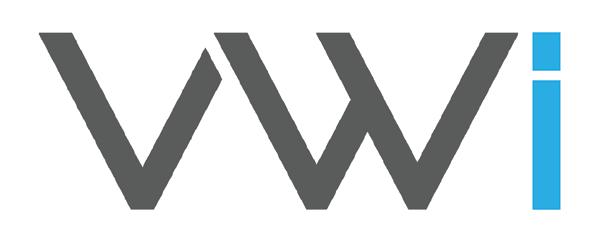
Meet Your RCM Expert: Kristy Carino | (941) 363-5200
moreinfo@vwinc.com
“It was trying to fix a problem that was not cyclical—something that is not economically sensitive and something large in scale.”
The Path 61
Shepherd of the Company’s Dollar
By Sara Verdi
Greg Sowers never thought he’d be practicing law within the healthcare space. “Everything that I had built my hopes and dreams on centered around entertainment law,” Sowers explains. Directly after law school, he started his first job at a sports and entertainment firm in Hollywood. “I had all of this really cool work coming in, I had passes to all the sporting events, I got to sit on some huge sponsorship negotiations—this job gave me exposure and experience to things that I never would have been able to do on my own.”
Though he only stayed with this firm for four years, Sowers learned how to hone one of his most valuable assets while with them: his negotiation skills. “While working for this firm, I tried some negotiation tactics against experienced negotiators, and I got destroyed by them,” he remembers, laughing. “But I learned from failure
and became a pretty solid negotiator during those four years.” Several years down the line, those negotiations skills are what landed him an offer from his current employer, MemorialCare.
“A recruiter somehow saw my résumé and asked if I would be interested in meeting with MemorialCare’s general counsel,” Sowers explains. “I told them that I didn’t have a lot of experience within healthcare, but they really liked my contracting and negotiations skills. They thought that they could use that skill set, and the healthcare part they would help me learn along the way.”
That was just over twelve years ago. “I didn’t really choose healthcare; it chose me,” he jokes. Sowers currently serves as MemorialCare’s senior counsel, providing legal support for its supply chain.
As senior counsel of MemorialCare, Greg Sowers understands the importance of using data and teamwork to push the bottom line forward
62 AHL
MemorialCare is a nonprofit integrated health system that includes four leading hospitals, two award-winning medical groups, a health plan, and convenient outpatient health centers, urgent care centers, imaging centers, breast centers, surgical centers, and dialysis centers throughout Orange and Los Angeles Counties.
Throughout his tenure at MemorialCare, Sowers has used his prior experience to strengthen and leverage his negotiations skills, build a culture of understanding surrounding a flexible work schedule, and demonstrate value from a cost savings perspective. To achieve some of these things, Sowers believes it’s imperative “to disrupt the norm.”
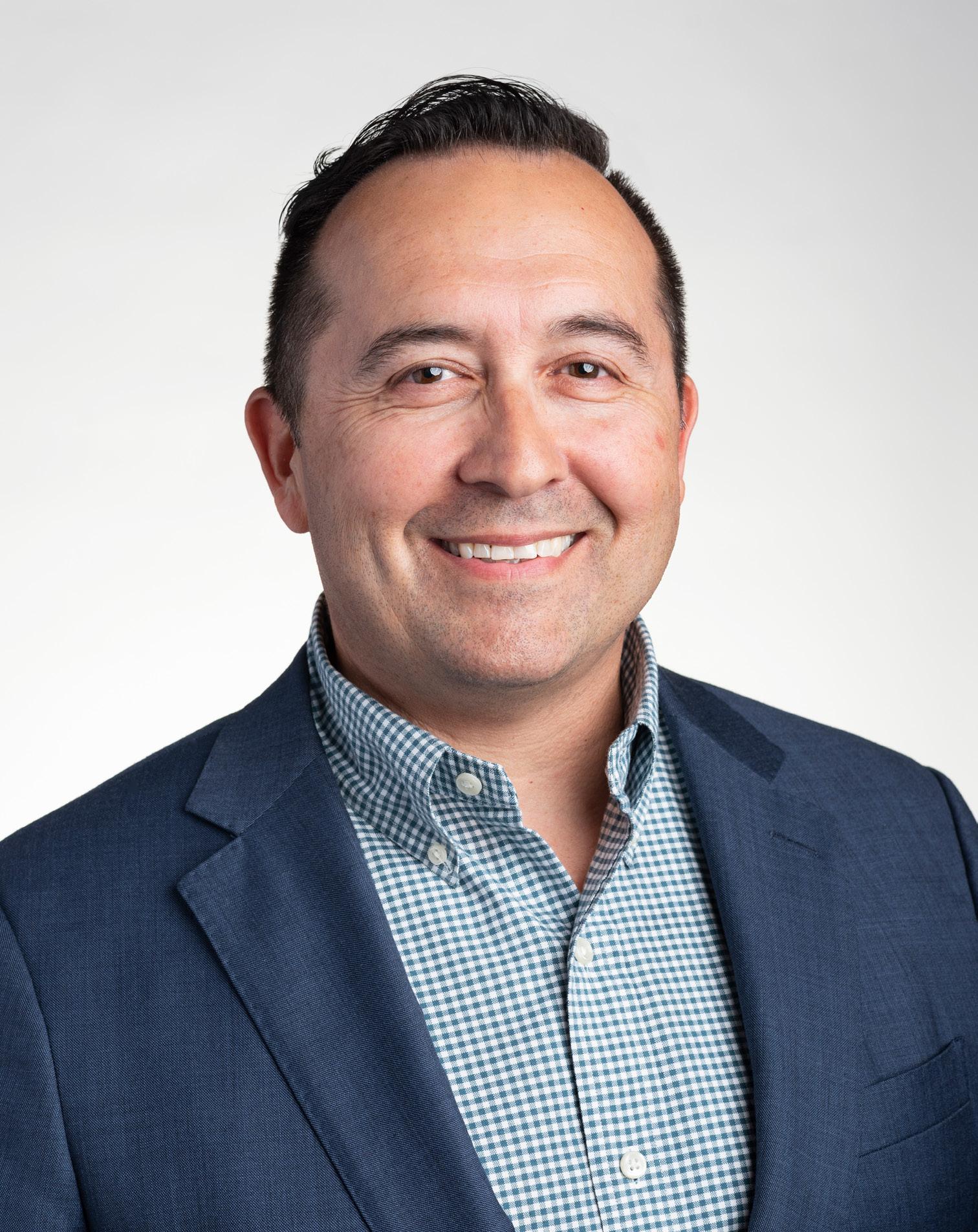
“I have a legal responsibility at the organization to mitigate and avoid risk, but I also need to show value by delivering continued cost savings. What I had noticed after a few years at MemorialCare was that the product and services vendors were kicking their feet up and not being challenged to work for our business. Once I was
able to retrieve reliable benchmarking data, we discovered that these vendors were charging us five to ten times more than their competitors,” Sowers explains. “Data is pretty powerful, and I, as senior counsel, have to watch out for the bottom line.”
Sowers worked collaboratively with his supply chain leadership to convince the executive team to support challenging these vendors to lower their prices to market value. These suppliers had been providing goods and services to MemorialCare for many years before Sowers arrived, however. So most of their business was premised not on the quality of their products or services but on their strong relationships with the health system’s most senior physicians.
“Disrupting the culture to produce business accountability was challenging,” he says. “The team received a lot of pushback for years, but changes needed to be made to ensure that fairness was developed between customer and supplier that would ultimately permit business to thrive—and of course, this was disruptive.”
Courtesy of
The Path 63
Greg Sowers Senior Counsel— Supply Chain MemorialCare
MemorialCare
Creating the future, together.

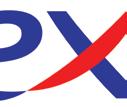
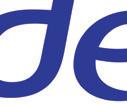
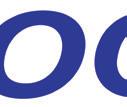
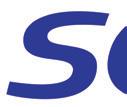



Naturally, to make the seemingly disruptive path lead to the most prosperous end position, Sowers needs his team to be behind him along the way. He emphasizes the importance of collaboration and collective effort. “At my company, it takes a village,” Sowers says. “I am part of a team. We focus on collaborating with executive management and making friends with the physicians to make it known that we don’t want to take things away from them; we want to support them while being shepherds of the company’s dollar.”
To execute this type of collaboration and problem-solving, Sowers has had to get a little creative with his solutions. “With this, being creative meant being inclusive. When I came in, I made plenty of mistakes,” he notes, laughing. “I sort of started out on the wrong foot by telling people they couldn’t do certain things from a financial, contractual, legal standpoint. But I learned that the best way to do this was to show people the data and get them involved. If I can show people where there is risk and show them both data and the law itself, we can problem solve and work through things.”



When discussing his creative strategy, Sowers circled back to the importance of bringing his team into his process. “Everything I do is as a team. To some extent, my department is a democracy,” Sowers says. “It is so valuable to ask the people I work with about their opinions on issues. It gives them ownership to the solutions we are trying to create.”
With some of MemorialCare’s more recent, pressing campaigns—for example, the distribution of virtual health applications—Sowers is relying on his team for an expedited process. “There’s a lot of risk with these online platforms, but we’re going to analyze the risk, complete some background checking, protect against the high-risk issues, and move forward,” he says. “We cannot always be bogged down by all the reasons that we normally can’t do something, rather we need to look at all of the reasons that allow us to be innovative, move forward, and get this done.” AHL
“I didn’t really choose healthcare; it chose me.”
Sodexo is building a human-centered healthcare enterprise, powered by science and insights to improve quality of life.
us.sodexo.com 64 AHL
FOOD AND NUTRITION SERVICES HOUSEKEEPING SERVICES FACILITY MANAGEMENT CLINICAL TECHNOLOGY MANAGEMENT
The Issues
National and even global forces have an unmistakable impact on an executive’s work. Whether it’s a legislative change or an industry-disrupting technological breakthrough, executives must constantly adapt their business strategies to keep their company thriving.
66. Erich WonSavage Mental Health Center of Denver
70. Melissa Gonzales Medela
73. Andrew Lukowiak, Angela G. Huskey, Dave Henderson Millennium Health
76. Paul Lambrecht Inspira Health Network
65
79. Lori Braender Aquestive Therapeutics
A Culture That Brings You Back
Director of Human Resources Erich WonSavage returned to the Mental Health Center of Denver because of its people-centric atmosphere. Now it’s his job to bolster it.
By Keith Loria
66 AHL
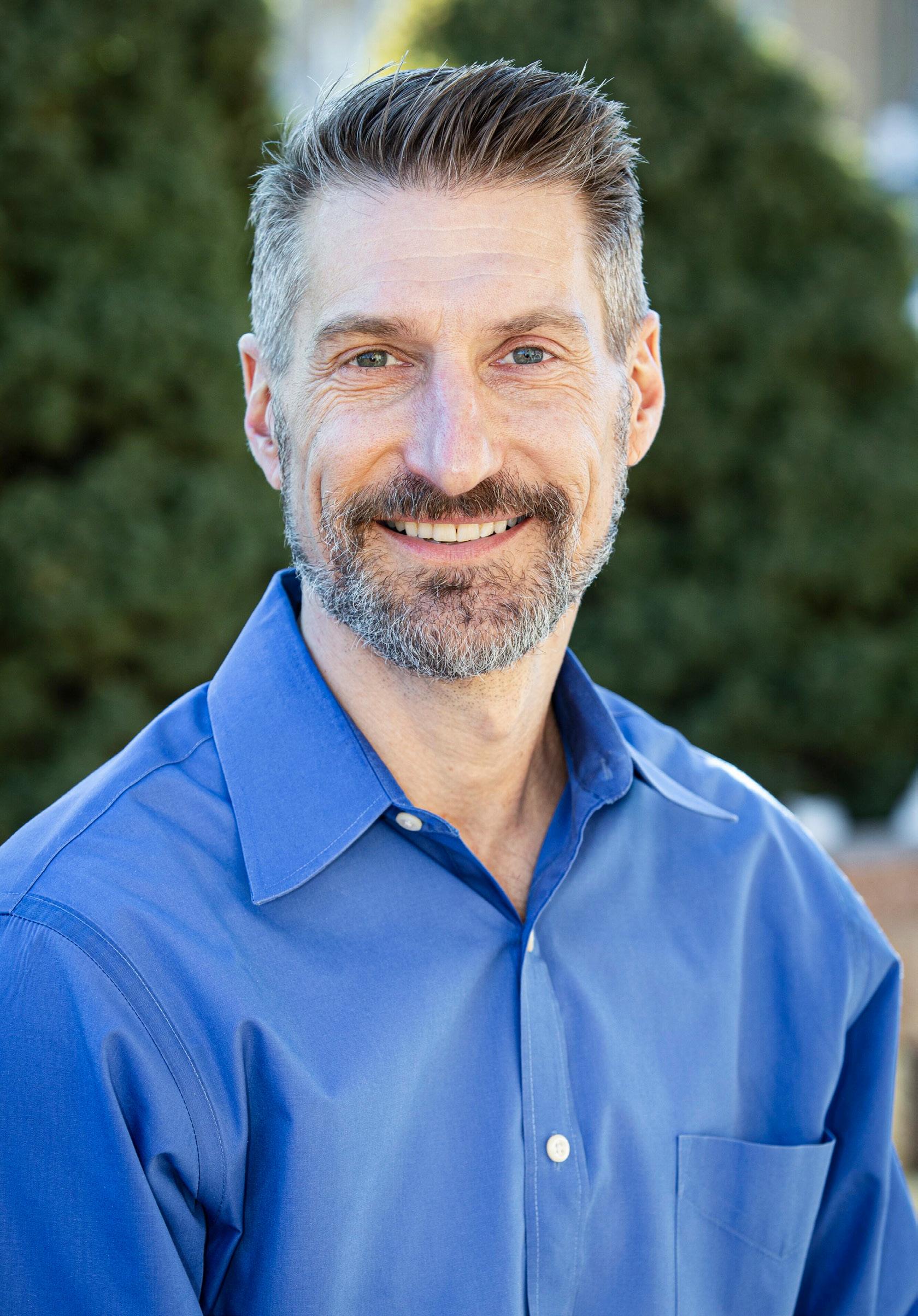
The Issues 67
Erich WonSavage Director of HR Mental Health Center of Denver
Courtesy of Mental Health Center of Denver
A self-described “boomerang employee,” Erich WonSavage returned to the Mental Health Center of Denver (MHCD) in 2018 to take on the role of director of human resources.
He started his career as a recruiter at MHCD back in 1999, working his way up to HR manager and staying seven years. WonSavage then left to join the public sector and spent the next twelve years working in Colorado for the likes of the City of Littleton, South Suburban Parks and Recreation, and the South Metro Fire Rescue Authority.
“MHCD kept growing and growing,” WonSavage shares. “I knew what their work culture was like, so when they opened this opportunity, I happily came back as the HR director. I knew their culture was very people focused and employee focused, and that was something that meant a lot to me.”
In fact, the healthcare not-for-profit was selected as one of the Denver Post’s Top Workplaces in its annual list for seven years in a row—and this is an award initiated by the employees itself.
“It says a lot about what they do and how they treat their employees, and I always knew that at some point, it would be a very good thing for me to come back and work in this culture again,” WonSavage says.
In his current role, WonSavage helps foster that culture throughout the organization, which consists of approximately eight hundred employees across thirty-five sites.
“We try very hard to focus on our employees’ wellness,” he says. “We also work toward equity and fairness. We think about how things will impact not just the one situation or moment and resolve that, but if we make a decision, how it will ripple through the organization and be viewed by all employees.”
Additionally, his department thinks hard not only about the employee experience but the management experience as well.
When he first came back, one of the areas WonSavage looked to improve upon were the pain points involved with MHCD’s hiring process.
“Healthcare is notorious for having a lot of credentialing, background checks, and things that a lot of organizations in modern times have done away with or do a lot less,” WonSavage says. “We’re changing the candidate’s experience and making sure the application is broken up into smaller pieces so that they stay engaged in the recruitment and hiring process, rather
than having to do everything up front and hope for the best.”
That means starting with the résumés and some initial questions and asking for the work history as applicants get further on, which speeds everything up and makes things more convenient for those going through the recruitment process.
WonSavage has recently implemented Greenhouse, a nimble applicant tracking system that allows for the customization of the hiring process and allows the interview to be conducted electronically.
Another big project coming up is the development of new pay grades for a number of MHCD employees to stay in compliance with new state and federal laws.
“We are looking into putting together a pay plan and incorporating that into our hiring practices. To us, that’s about equity,” he says. “We also feel it’s fair to have a pay philosophy that we can explain, and so we are in the process of pulling that market data and
68 AHL
“We think about how things will impact not just the one situation or moment and resolve that, but if we make a decision, how it will ripple through the organization and be viewed by all employees.”
making decisions on how we will build these pay grades for our nonunion folks.”
In spring 2020, WonSavage and his team had to factor in the COVID-19 pandemic and how that impacts MHCD and its employees. “We’ve learned to do a lot of work remotely and learned to do that quickly, so it was a big shift in how we do our work and connect with people,” he shares in a March 2020 interview.
One of his goals for 2020 is to increase MHCD’s relationships with schools and universities. Another is to educate employees about the various career paths within mental health.
“One of the things we are about is creating connectedness—whether that’s the mental health component when working with people we serve, or within the organization, where we have employees coming together to create social teams and groups, such as a group of employees who join up for a 5K or marathon or participate in a bowling league,” WonSavage notes. “We are hardwired for this connectivity, and that is really becoming an extension for us with what we are doing with some universities.”
MHCD is working directly with schools who have social work, psychology, and licensed addiction counseling programs so they are ready to get into the work market as soon as they graduate. Part of the relationship is helping students find jobs relevant to the degree they are seeking, and some of the schools allow the jobs to count toward their internship requirements.
“If the school wants us to, we will come into the classroom and speak about what it’s like to work in the industry,” WonSavage says. “I think that provides a little more real experience for school programs and helps the student know what it will be like when they start a job in the mental health field.”
And he wants them to see the MHCD difference, where the organization provides development teaching, management training, and other opportunities for those in the organization looking to advance in their careers.
Plus, it puts a big focus on employees having balance in their lives. “We talk about being mindful and getting out to do other things outside of work,” WonSavage says. “We’ve recently hired an additional full-time case manager who doesn’t have a caseload of their own and floats from team to team, bridging the case load for people on vacation or on leave. This helps reduce the stress of returning to work feeling behind and provides better-quality care to the people we serve. Things like that make people enjoy being part of MHCD.” AHL
The Issues 69
The
Parenthood Partner
EVP Melissa Gonzales on Medela’s mission to help every woman in America along her own motherhood journey
By Sara Deeter
Every woman’s journey into motherhood is different. Some women breastfeed for months, some for years. Some have health insurance that covers all critical equipment (like breast pumps), and others have insurance that covers only a few of those products. Some women go back to work after a few weeks, and some re-enter the workforce after months or years. But no matter what a mom’s experience looks like, says Melissa Gonzales, Medela is there to help.
As executive vice president of the Americas at Medela, a family-owned
company dedicated to enhancing the health of moms and babies alike, Gonzales works to ensure that every woman across the US has the support, resources, and solutions she needs to be the mother she wants to be.
A Medela veteran of nearly twelve years, Gonzales served in a number of leadership roles before securing her current role, including vice president of sales and channel management and executive vice president of North America. But long before she joined the top ranks of Medela, Gonzales was in a very different line of work.
“I began my career as a nurse,” explains Gonzales, who obtained her nursing degree from the University of Illinois at Chicago in 1989. “That has really given me a full understanding of the health and clinical side of our business, as well as the complexity of all our products.”
All of Medela’s products are very technically advanced, Gonzales notes, and are developed based on the latest research on the mechanism of suckling, the human body, nursing patterns, and more.
But whether they’re an engineer or a business leader, everyone at Medela shares a passion for women’s health and
70 AHL
well-being as well as work/life balance.
“Medela’s mission is very personal to everyone here,” Gonzales says. “We wake up every day knowing that we’re saving lives by going to work.”
In fact, Gonzales and her teams at Medela save more than lives—they also bring awareness to the health benefits of breast milk, which helps save the nation approximately $1.9 billion in healthcare costs.
“The benefits of breast milk are incredible,” Gonzales says. “It’s one of the only medicines that can reduce the risk for four of the most common and costly
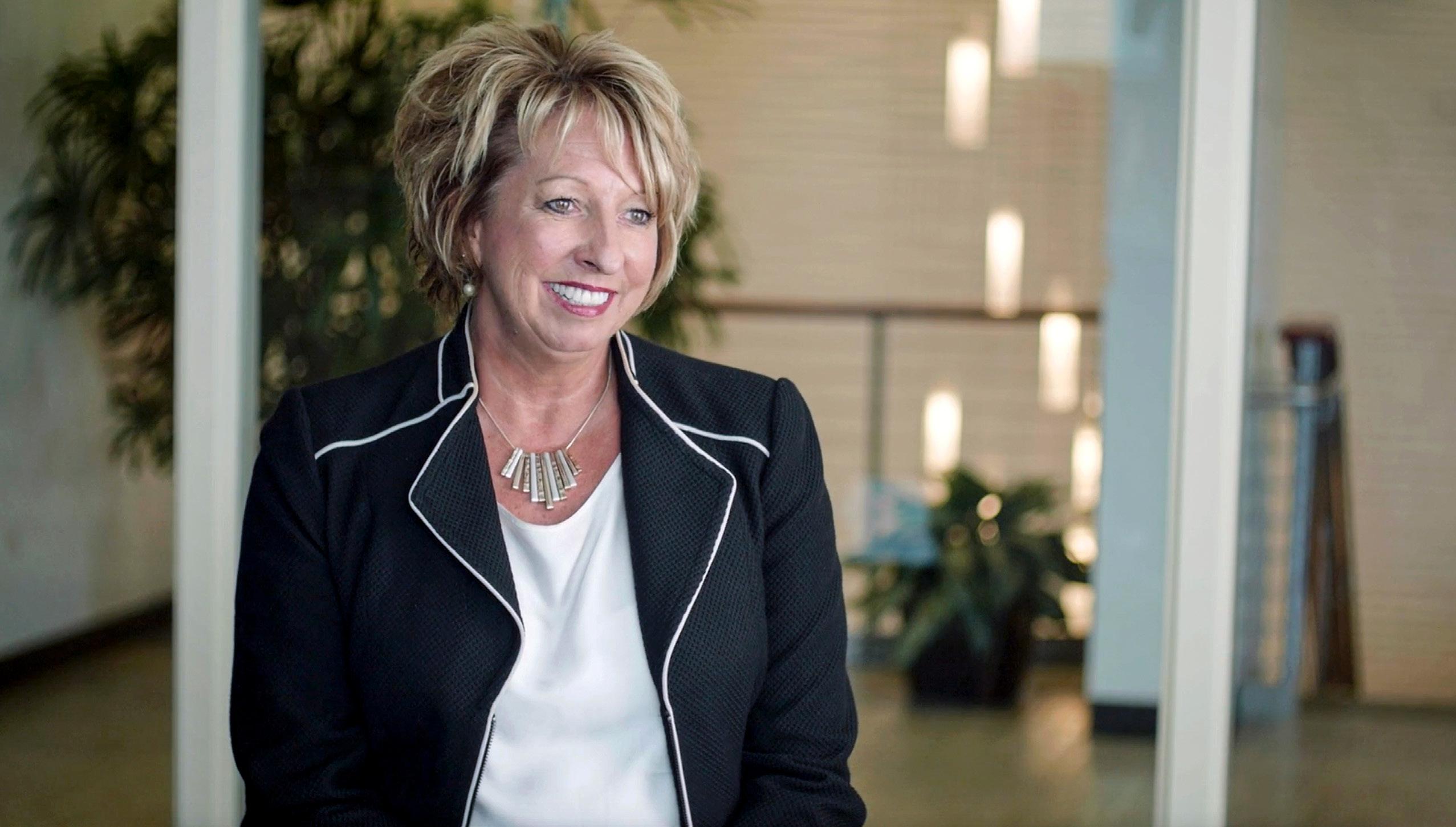
The Issues 71
“We look at how we can work with big employers to help raise their awareness of what they can be doing to lay a foundation of support for parents who are going back to work.”
Jason & Blue
Melissa Gonzales EVP of the Americas Medela
childhood conditions—ear infections, gastroenteritis, respiratory infections, and intestinal infections—by 50 percent in the first year of life.
“Yet we know that nearly 60 percent of moms don’t breastfeed for as long as they intend, and they wean for a number of reasons, including returning to a workplace with inadequate policies or support,” Gonzales continues. “And two-thirds of new moms go back to work after giving birth, some returning to a workplace with inadequate policies and support. So, although 80 percent of moms start out breastfeeding, less than half stay on that journey past three months.”
For close to sixty years now, Medela has worked to help moms overcome those challenges and benefit from the many physical, financial, and emotional advantages of breastfeeding. “We try to look at the issue from every angle,” Gonzales says, “including legislation, advocacy for the benefits of breastfeeding, and ensuring parents’ access to support, supplies, and services.
“And on the other side of it,” she adds, “we look at how we can work with the big employers to help raise their awareness of what they can be doing to lay a foundation of support for parents who are going back to work.”
Through programs like New Moms’ Healthy Returns, Medela Cares, and The Moms’ Room, Medela provides customizable, single-source solutions to mothers and employers.
“Employers want to help support moms who are returning to work— they know that if they can enable their workforce, they’ll have a better chance of retaining those women—but it becomes difficult because they don’t know how to create something that is simple to use as well as comprehensive,” Gonzales says.

And that’s where the New Moms’ Healthy Returns turnkey solutions come in. “We provide everything that
MELISSA GONZALES’S SHORT GUIDE TO PARENTHOOD
1. Be your own best advocate. “There is a ton of support out there, but you know best about what you want and what’s going to work for you. You have to voice those things.”
2. Ask for help. “Ask your employer, your clinician, or people in your community—they want to help you be successful, they just don’t always know how.”
3. Know what you need. “There is so much information out there about what’s available to you, or what you should be doing as a parent. Take the time to sort through the noise and distraction to figure out exactly what you want your parenting lifestyle to be, what your support system looks like, and what your capabilities are.”
moms need throughout pregnancy and during their baby’s first year,” Gonzales says, “from 24/7 virtual support, breast milk shipping services, and access to education, a support community, key resources, and lactation professionals.
“Those are just short-term solutions, of course,” she adds. “In the long term, we have to solve these problems on the legislative level. And though we are far behind other countries, we are making great strides in improving the federal policies that—like our holistic benefits packages at Medela—provide parents with the flexibility, access, and supportive cultures that they need to be successful.” AHL
72 AHL
NewMomsHealthyReturns.com
Give your employees the support they need to successfully transition back to work after baby.
New Moms’ Healthy Returns™ offers best-inclass technology, resources, and accessories specifically designed to help you create the family-friendly workplace culture you need to attract and retain top talent.
Saving Lives in the New Millennium
The arrival of CEO Andrew Lukowiak ushered in an era of collaboration that has differentiated Millennium Health as the leader in its field By
Will Grant
In January 2020, the specialty drug testing laboratory Millennium Health announced that it had joined forces with the US Department of Health and Human Services (HHS) to provide real-time data to help combat the ongoing drug overdose epidemic in the US.
In a press release from January 7, 2020, Assistant Secretary for Health Admiral Brett P. Giroir, MD, was quoted as saying, “The donation of this data is a critical tool for reducing the occurrence of the substance use epidemic and reaching the people who need help most. With frequent reporting of drug testing data, HHS can work with city, county, and
state public health officials to provide resources that will help reduce crisis points and save lives.”
The data provided on an ongoing basis was the successful result of Millennium Health’s Emerging Threat Intelligence Program. This real-time information regarding illicit and prescription drug use trends contrasts with the data traditionally used to study drug epidemics, which is often months, if not years, old.
Differentiating Factors
Millennium Health’s collaboration with HHS and its frontline technological innovations are, in part, a result of
CEO Andrew Lukowiak’s arrival in March 2018. “The company already had a bestin-class reputation as a drug testing specialty laboratory, so we made the strategic decision to add customer-focused, clinically meaningful analytics solutions to further differentiate our organization,” Lukowiak recalls.
“For me, it was how to take two of our most talented professionals in the organization and create opportunities for them to combine their expertise,” he adds. “By setting a vision for the company that could only be achieved through concerted efforts, our team has been able to provide high-quality clinical content to our
The Issues 73
customers through both peer-reviewed clinical publications and an innovative customer platform.”
Lukowiak is speaking of Chief Clinical Officer Dr. Angela G. Huskey and Chief Information Officer Dave Henderson, who he believed could be responsible for how data could be used to support clinicians, policy makers, first responders, and all others at the front line of the nation’s drug overdose crisis.
“The way Andrew’s message was translated was that while we were individually doing great work, how could we
work together to combine our efforts as a shared agenda?” Henderson says. “When you start sharing your agenda in a collaborative way from the beginning vision to the end product instead of in a piecemeal fashion, that’s when you are able to establish a huge differentiation for your organization.”
Huskey noted that until the collaboration began, her highly experienced clinical team lacked access to complex analytics tools that would enable them to address broader questions related to national healthcare concerns. The digital
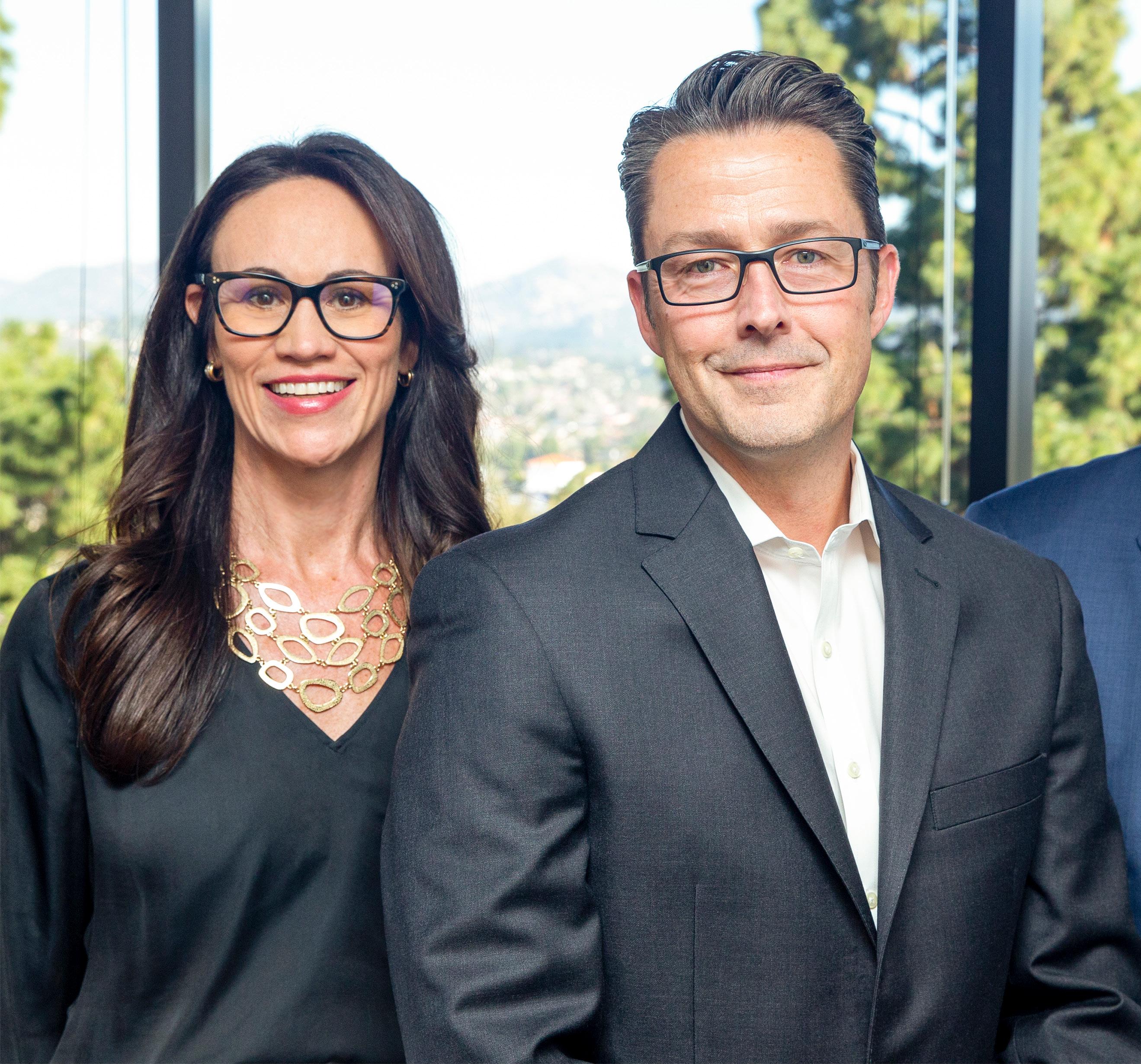
collaboration was the missing piece that allowed them to accomplish this.
“Our peer-reviewed publications and scientific reports, including our first and second volumes of the Millennium Health Signals Report and our two studies published in JAMA Network Open, offered the ideal opportunity to show our strength and differentiation to our customer base, payers, and strategic partners.”
Making Tech Accessible
Part of the collaboration between Henderson’s and Huskey’s teams
74 AHL
Andrew Lukowiak, PhD CEO Millennium Health
Angela G. Huskey, Pharm.D, CPE Chief Clinical Officer Millennium Health
Jenna Curammeng
also meant transforming Millennium Health’s purpose-built order management platform. “This is a much different approach than we’ve taken in the past,” Henderson explains. “What you see is clinical expertise expressed through technology, and that’s something that only comes from this type of collaboration.”
Huskey agrees. “Dave’s team has built the ability for our customers to see things like trends in their areas around drug use. That’s just one example, but it’s an important one that illustrates how our
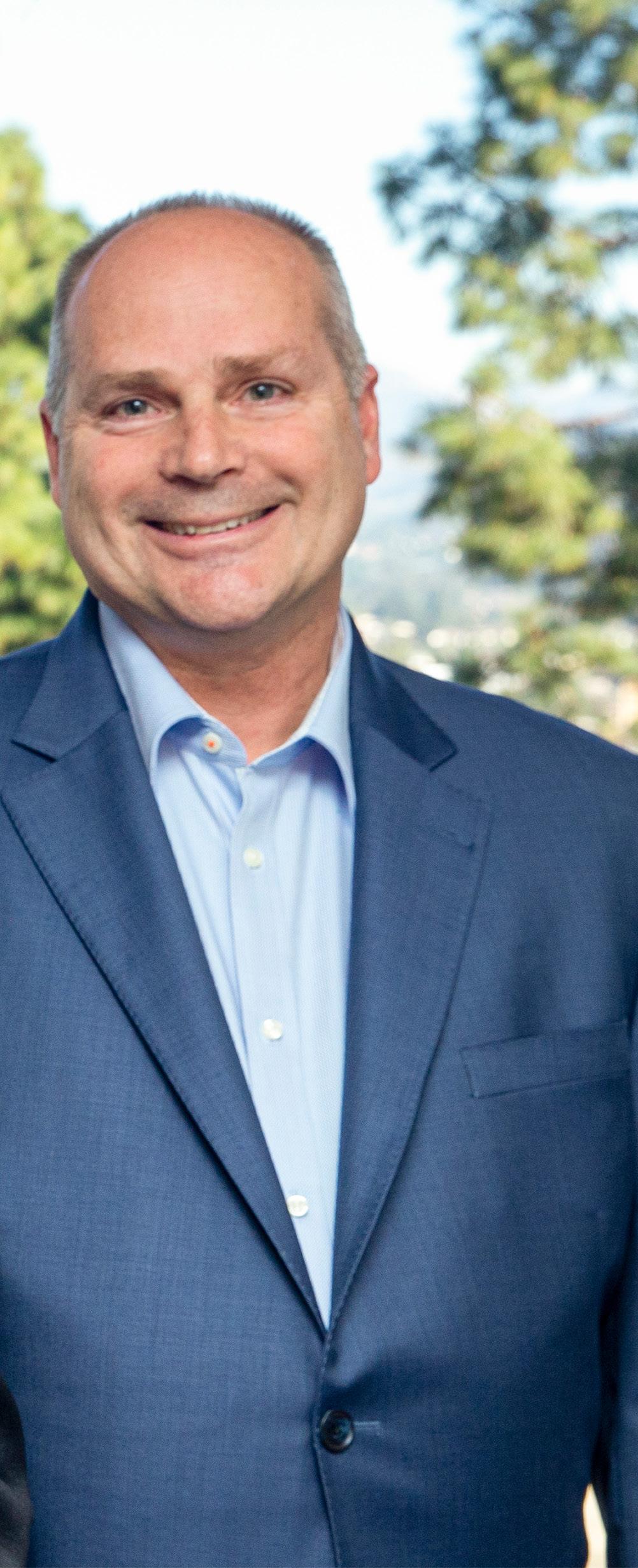
customers can use our services to make better clinical decisions.”
To Save Lives
The purpose of providing partners, payers, and customers with more readily available time-sensitive data is simple. “The reason we do what we do is to help those fighting the substance abuse problem,” Huskey says. “This data helps drive quicker decision-making so that resources can be deployed more thoughtfully, and lives can be saved.”
“Up until now, clinicians, regulators, and other responders have often had to use data that was months or even years old: coroner’s reports, drug seizure information, and hospital overdose records to monitor our nation’s overdose epidemic,” she adds. “Today our real-time reporting, in combination with these more traditional methods, should allow public healthcare agencies to respond to changes in illicit drug use in a timelier fashion.”
Lukowiak says that the outcome of this internal partnership is more than just another “big data” initiative, a term he
suggests has become overused and lost its intended meaning.
“This is really about beginning with a focused, well-defined clinical need and having the discipline, persistence, and expertise to extract the specific data that will meaningfully address the problem at hand,” Lukowiak says. The process relies on our analytics and informatics teams analyzing data in partnership with our clinicians and our clinical team’s ability to get feedback on the work from key opinion leaders and high-quality, peerreviewed publications.”
“This collaboration has resulted in a clinically relevant, high-value analytics platform that we believe is truly unique to our industry,” he adds. “Our goal is to bring attention to trends in drug use and misuse detected by our testing services and provide resources that professionals caring for patients can use to help better identify and treat our family members, friends, and community members who are coping with the devastating disease of addiction. As a company, our priority is, and will always remain, the patient.” AHL
The Issues 75
“For me, it was how to take two of our most talented professionals in the organization and create opportunities for them to combine their expertise.” –Andrew Lukowiak
Dave Henderson CIO Millennium Health
Safety at the Forefront
Inspira Health’s Paul Lambrecht works to enhance patient safety while reducing preventable harm
By Keith Loria
Paul Lambrecht started his career as a paramedic in 1987 at Woodbury, New Jersey-based Underwood-Memorial Hospital, so it’s no surprise that patient safety is of chief concern to him. When he found himself with an opportunity to step into management in 1992, he gladly accepted a role as director of paramedics knowing he could make more of a difference.
From there, Lambrecht found several opportunities to take on additional
clinical areas, and by 2001, he was overseeing the paramedic program, emergency department, respiratory care services, and was involved in other interdisciplinary initiatives such as quality teams and safety management.
In 2006, he advanced into hospital administration, becoming vice president of clinical services before the 2012 merger of South Jersey Healthcare and Underwood-Memorial Hospital. This union became Inspira Health
76 AHL
Network, the region’s leading network of healthcare providers, delivering the full continuum of primary, acute, and advanced care services.
Today, Lambrecht serves as vice president of quality and patient safety for Inspira.
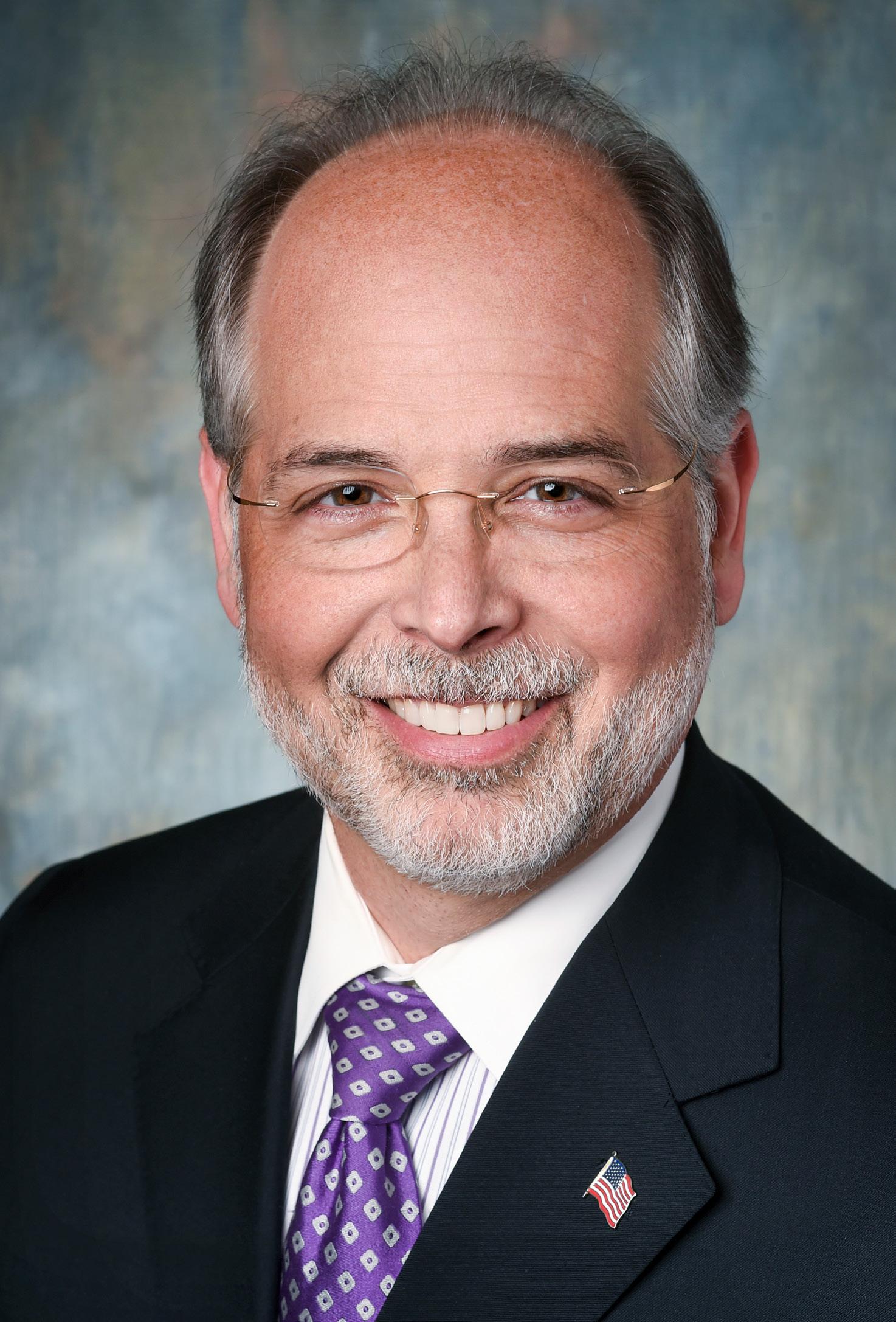
Under Lambrecht’s realm, his departments are responsible for quality and patient safety, infection prevention, and accreditation/regulatory affairs. He also serves as the management staff for
the quality and patient safety committees of the hospital and network boards of trustees.
“When we came together as a network in 2012, we had a lot of conversation as we developed our strategic plan around what’s going to define Inspira and how we were going to set ourselves apart from the competition,” he notes. “It was important to us how we were going to define what Inspira stood for to our patients.”
That meant patient safety and high-quality care were right on top of that list, and Lambrecht began thinking about how to take those programs to the next level.
“We had come to the merger with successful quality and patient safety programs, so we wanted to look at how to leverage that work and take it to the next level,” Lambrecht shares. “At that time, the president of the Joint Commission had written an article that highlighted high reliability work. I had done some research on high reliability in other industries and thought about how to apply that to healthcare.”
In August 2015, Inspira made the decision to move forward and begin the transformation into a high reliability organization.
“I began talking to other hospitals in the region who had done this work, and who they worked with to accomplish it, and that’s how we decided on engaging with Healthcare Performance Improvement (HPI),” Lambrecht says. “High reliability is not something that’s successful as a grassroots type of effort; it really needs to be top-down driven to set the expectation that zero is the right number, and our goal is to eliminate patient harm.”
At the outset, Inspira needed to come up with a baseline of safety event measurement, and looked at a three-year snapshot of safety events that occurred throughout the organization to get a feel for where errors were occurring and how to best build the safety tools that would ultimately be used across the network.
“One of the initial strategies was to engage the frontline providers and the frontline staff,” Lambrecht explains.
The Issues 77
Paul Lambrecht, FACHE VP of Quality & Patient Safety Inspira Health Network
Craig Terry
A Trusted Partner for High-Quality Post-Acute Care
“If we just put together a program that we would roll out and teach everybody, there would not be a lot of buy-in. But by bringing the frontline staff, leaders, and physicians to the table and engaging them to help select and build the tools we would use going forward, that would add credibility to what we were trying to achieve.”
Beginning at eight o’clock each morning, Inspira conducts daily safety briefings across the network, so leaders and staff can gain situational awareness of any issues that have occurred or are anticipated for the day. Significant safety issues may result in “starting the clock,” which would require follow up or resolution of the issue by a set time that day.
“By ten o’clock every morning, there is complete situational awareness of where our safety risks are across our entire system,” Lambrecht says. “While that might seem like a big thing, it’s little incremental parts of that process which gives us our awareness. And with any risks identified, immediate action can be taken and we know what the resolutions are.”
Inspira prescribes to safety absolutes known as “Red Rules,” and if anyone observes them being violated, the staff are able to stop the process.
“One of our ‘Red Rules’ is patient identification. Our policy is we use two patient identifiers to confirm positive ID with every patient interaction,” Lambrecht says. “Whether it’s a food service aid brining in a tray at lunchtime or a phlebotomist in the lab coming up to collect lab specimens, we’re always checking the two identifiers constantly. That allows for a heightened awareness and makes for a safer environment.”
One of the tools Inspira promotes is SBAR, which stands for situation, background, assessment, and recommendation. Lambrecht notes it’s a structured way for a staff member to summarize the message they want to send and helps with timely and effective communication.
They also use an ARCC tool, which stands for asking a question, requesting
a change, voicing a concern, and using the chain of command. This tool allows staff to safely escalate a concern using the lightest touch possible.
These safety tools are all in place at Inspira’s new Mullica Hill medical center, a 210-bed acute care community hospital that opened on December 15, 2019. Lambrecht notes these principles are critically important for ensuring the new center is as safe as possible.
“Our goal is to continue to grow and sustain the work we’ve done,” Lambrecht says. “Over the course of four years, we have successfully reduced serious preventable harm by 90 percent. That’s something we are very proud of; however, the work is never done. Our goal is to get to zero harm.” AHL
BAYADA is a joint venture partner of the Inspira Health Network, creating solutions for post-acute care needs across a wide spectrum of services. Our expertise in home health, hospice, and pediatric nursing, delivered across 360 offices nationwide, help address the complex problems health systems and patients face in the home.

78 AHL
Ensure seamless patient transitions to home, better outcomes, and strong financial performance with BAYADA. Contact BAYADA at 856-382-8088 or learn more at bayada.com/ partnerships.
“Over the course of four years, we have successfully reduced serious preventable harm by 90 percent.”
Progress for Patients
Lori Braender on the efforts Aquestive Therapeutics has made to achieve FDA approval of therapies that are easier for patients to receive By Will Grant
Therapeutics
In February 2020, specialty pharmaceutical company Aquestive
announced that the US Food and Drug Administration had accepted the company’s new drug, Libervant, for the management of seizure clusters.
The company specializes in advancing late-stage proprietary product pipelines to treat central nervous system conditions and provide alternatives to more strenuous and invasive administered standard-of-care therapies. The successful approval of the drug would mark it as the first oral diazepam-based therapy approved for management of seizure clusters for refractory epilepsy patients.
“The FDA filing acceptance for Libervant is an important milestone in our mission to provide epilepsy patients with a broader array of treatment options that represent major contributions to
patient care,” CEO Keith J. Kendall said in a prepared statement. “Aquestive is committed to helping people affected by seizure clusters through bringing important and innovative products to the market. Epilepsy patients have been underserved for some time with little choice beyond device-based products, such as rectally administered gels and nasal sprays.”
The announcement comes on the heels of Aquestive’s completing a private $70 million investment and credit refinancing last summer from Madryn Asset Management, with $15 million of the investment focused on the commercialization and advancement of its proprietary products, pipeline candidates, and other general corporate purposes.
Both of these high-profile developments have fallen under the purview of Lori
Braender, who has served as senior vice president and general counsel at Aquestive since 2018. Braender came to the company after accruing thirty-five years of firm experience at Day Pitney, where she was a partner and chaired the firm’s life sciences practice group.
“Lori, who headed Day Pitney’s life sciences practice prior to joining Aquestive as general counsel, has always combined common sense with tenacity and passion on behalf of her clients. This has continued in her new role,” says Thomas Zalewski, a partner at Day Pitney.
The lawyer specialized in advising clients at pharmaceutical organizations, medical device companies, biotechnology firms, hospitals, and healthcare institutions on regulatory requirements, contractual arrangements, and other life science business considerations and
The Issues 79
Always there for you.
Lori is a true leader, working to help Aquestive advance medical technology and improve the lives of patients.
healthcare transactions. So her coming in-house at Aquestive was no surprise.


“I’m honored to join the Aquestive team,” Braender said at the announcement of her hiring. “The company’s unique business model and technology deliver meaningful solutions to patients, and I look forward to contributing to the success of these efforts.”
Braender has stayed busy at Aquestive, working to continue building the pipeline for hopeful FDA approval. That included the 2019 approval for Exservan Oral Film as treatment for amyotrophic lateral sclerosis (ALS). The therapy simply dissolves on the tongue, making it easier for ALS patients to imbibe a dose of Rilutek, the only current FDAapproved treatment for the disease.


Around the same time, Aquestive announced the proposed offering of $35 million in common stock to the public. These developments are enough to keep any legal team busy, but Braender has also made time for work off the clock.

For more than 100 years, Steptoe has been known for our strong representation of clients and our creative and practical advice.
Along with her day-to-day responsibilities, Braender has served as a trustee for the Green Hill senior living community, which was founded in 1866. The nonprofit established soon after the end of the Civil War states its goal as follows: “to enhance the quality of life for seniors in inviting surroundings, encouraging respect and dignity from a caring staff who take pride in their life’s work.”
“What has impressed me the most about Green Hill during my tenure as a trustee has been to observe firsthand the passion and commitment that Green Hill has toward the seniors of the community,” Braender said at an event celebrating its 150 years of service. “To understand the care and attention Green Hill staff give to the families and caregivers as they traverse the difficult terrain of planning and giving needed care for their loved ones has been truly remarkable.” AHL
80 AHL
We salute Lori Braender for her dedication and achievements at Aquestive Therapeutics
Day Pitney.
BOSTON CONNECTICUT FLORIDA NEW JERSEY NEW YORK WASHINGTON,DC www.daypitney.com
It is our pleasure to provide legal services to Aquestive Therapeutics and we wish Ms. Braender continued success.
Steptoe is proud to recognize Lori Braender, general counsel for Aquestive Therapeutics.
ATTORNEY ADVERTISING www.steptoe.com
The Reason
Some executives feel the importance of their work because they have experienced its impact firsthand. Shaped by their mission to help others or by their personal experiences with healthcare, many executives are drawn to the industry from a sense of empathy and a desire to make a difference for others.
82. Elizabeth Feeney GlaxoSmithKline
86. John DiNome American Academic Health System
89. Christopher DeLuco Memorial Sloan-Kettering Cancer Center
92. Erin Coffey Asante
95. Ashley Garry Eli Lilly and Company / ArTara Therapeutics Inc.
100. Kim Honeysett Varex Imaging Corporation
81
The Legal Piece of the Puzzle
Assistant General Counsel Elizabeth Feeney ensures the legal department fits into the bigger picture of GlaxoSmithKline’s culture and mission
By Sara Verdi
Elizabeth Feeney’s desire to create enduring connections with her clients is not only what initially encouraged her to find an in-house legal role but is also what brought her to GlaxoSmithKline (GSK) more than seventeen years ago.

“In private practice, I often felt like just as I’d get to know people, or really understand their business model, the particular matter would end, and all the knowledge I’d gained really wasn’t useful anymore,”
she says. “Now, I have the opportunity to keep building on the working relationships I have rather than immediately moving on to the next thing when a piece of litigation ends.”
In fact, Feeney believes that her work as an assistant general counsel in GSK’s dispute resolution and prevention group has been successful largely due to the trusting relationships she has established within the workplace.
82 AHL
“I hope to build rapport with people so that the next time something comes up or they have a question, they feel really comfortable picking up the phone and calling me. This is one of the parts of the job that I really enjoy: doing that sort of proactive counseling work within the business and not just being reactive when a subpoena or a lawsuit comes in,” Feeney explains.
Feeney believes that working from a place of understanding—both about the
business and what employees are hoping to achieve—is one of the most important aspects of working as an in-house lawyer.
“To quote a colleague, we [legal] do not want to be known as the ‘department of no.’ While certainly there are times when you have to explain why a particular approach is inadvisable, wherever you can, you want to be able to talk about alternatives or make suggestions rather than just throw up obstacles,” she says.
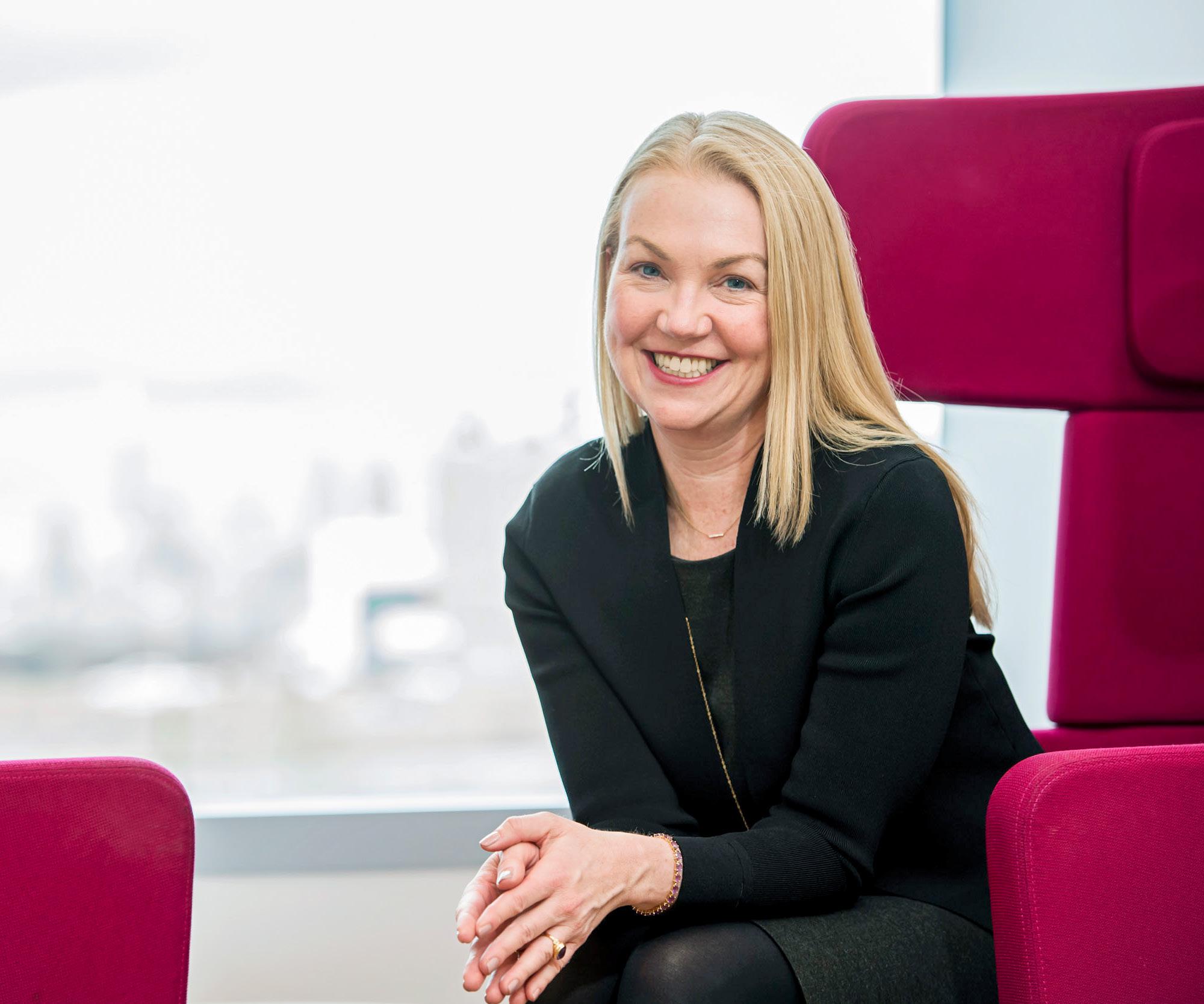 Elizabeth Feeney Assistant General Counsel GlaxoSmithKline
Elizabeth Feeney Assistant General Counsel GlaxoSmithKline
The Reason 83
Rebecca Henasey
As such, Feeney is focused on approaching legal matters with an attitude that seeks to understand, build trust, and offer practical, pragmatic solutions. “Ultimately, GSK’s goal is to help patients. And fortunately, the businesspeople here recognize that legal shares that same goal, and they want legal at the table to help make decisions. To be told you’re a ‘value add’ to discussions— that’s really the best compliment you can get from your colleagues.”
Colleagues like David Coulson of global law firm Greenberg Traurig, whom Feeney supervised for a decade in high-stakes litigation, attest to her people-focused, well-rounded leadership style. “Elizabeth is a creative problem-solver and exceptional leader,” says Coulson. “She has the uncanny ability to see the big picture and pragmatically assess risks within the context of GSK’s business objectives.”
Currently, much of Feeney’s focus is on cybersecurity, particularly helping GSK minimize the potential litigation risks that can arise as companies embrace new technology. In addition to leveraging the strong relationships she has developed
during her tenure at GSK, Feeney believes that success in her role comes from vigilant observation of how other companies manage cybersecurity breaches.
“We do a lot to monitor what is going on with other litigation cases that arise from data breaches. Sometimes, companies are sued or faulted for the quality or substance of their responses, and we try to learn from those instances so that if we are ever in a similar situation ourselves, we aren’t caught up short,” she explains. “You constantly have to be thinking through different scenarios and have a plan in place to properly respond to however these scenarios unfold.”
Having a solid plan in an emerging, ever-evolving area like cybersecurity comes with some difficulty, however. “Technology moves so quickly, and you really have to work to stay on top of the trends. You can’t ever be complacent,” Feeney says, “but you have to be willing to acknowledge that there is going to be some degree of uncertainty, no matter how prepared you think you are. It’s really important that you’re able to work in that ambiguous space and be levelheaded about it. It’s a terrific challenge,
but that’s something I really like about it—you’re not working in a very settled area of the law, so there’s a lot of room for fresh, innovative thinking.”
Mixing up the kind of work she does is a key to Feeney’s longevity in GSK’s legal department. “The job is constantly evolving,” she says. During her tenure, Feeney has handled mass torts, FCPA investigations, and securities litigation; supported major divestitures and acquisitions; and trained hundreds of GSK employees (including the former CEO) on the principles of clear, concise, accurate business writing.
Currently, Feeney also sits on GSK’s disclosure committee, which, among other things, is responsible for GSK’s annual report and securities filings. Serving on the disclosure committee has been another integral means for Feeney to broaden her knowledge of the company as a whole and to establish ties with colleagues in other corporate functions, as well as another opportunity to wrestle with some thorny legal issues. “I think it’s probably obvious that I relish a challenge,” Feeney says, laughing.
In that spirit, Feeney just recently wrapped a successful term as cochair of GSK legal’s global inclusion and diversity initiative. To her, diversity and inclusion is “having a workforce that really reflects back the communities in which we work. That means seeing historically underrepresented groups represented here, and not just in the workforce but also in senior and leadership positions.”
“One of the things that we did that was pretty innovative was a reverse diverse mentoring project, where members of the legal leadership team each took on a junior mentor who was diverse to them in some way—either in terms of gender, race, ethnicity, sexual orientation, generation, geography, and so on. People found it really eye-opening and valuable on both sides of the mentor/mentee equation—it allowed people to gain a perspective that
84 AHL
“You constantly have to be thinking through different scenarios and have a plan in place to properly respond to however these scenarios unfold.”
they wouldn’t ordinarily have on how the workplace feels to someone differently situated than themselves.”
Naturally, Feeney’s dedication to promoting underrepresented groups inspires her mentees to carry on the mission and excel in their own careers.
“Elizabeth proves that she can achieve great success in her career while also helping others to advance and succeed,” says Jennifer Ilkka, partner at Faegre Drinker. “As a young female partner navigating the challenges of business development in ‘Big Law,’ I was the fortunate beneficiary of the support and commitment Elizabeth generously shares with those lawyers that have captured her trust through demonstrated competence and reliability, regardless of their age, gender, race, or other diverse characteristics that all too often can impede advancement in the legal profession. Her dedication, in particular to the promotion of women to lead attorney or first-chair trial roles, is proof positive that GSK’s devotion to diversity and inclusion is not just public relations, but actual practice.”
Feeney believes that diversity is key to any successful organization, especially a legal department, where the ability to view an issue from all sides is invaluable. “If everyone is coming at a problem from the exact same approach, it makes it difficult to pressure test your ideas and come up with a comprehensive solution,” Feeney maintains.
Feeney is clear that diversity itself isn’t enough without encouraging a culture of inclusion—something that fits neatly with her history of building strong working relationships. “There’s a quote from Vernā Myers that states, ‘Diversity is being asked to the party and inclusion is being asked to dance,’ and I think that is absolutely right. It’s not just having people who look or sound different show up in the office; it’s actually making sure that they all truly feel like part of the team.” AHL
Taking Leadership to New Heights
Faegre Drinker salutes
Elizabeth Feeney, Assistant General Counsel, Dispute Resolution & Prevention Group for GlaxoSmithKline. We acknowledge Elizabeth’s steadfast leadership and her many contributions to GSK and the broader healthcare industry.
Faegre Drinker is among the leaders in pharmaceutical and medical device litigation. Drawing on collective decades of related experience, we successfully represent clients in complex mass tort, class action and commercial litigation disputes throughout the country.





We applaud Elizabeth’s courageous leadership and professional excellence to help make GSK one of the world’s most innovative, best performing and trusted healthcare companies.
Greenberg Traurig partners with health care companies to achieve their business, legal, and public policy goals.

faegredrinker.com © 2020 Faegre Drinker Biddle & Reath LLP. All Rights Reserved.
LEARN MORE AT GTLAW.COM 2100 ATTORNEYS | 41 LOCATIONS° GT_Law Greenberg Traurig, LLP GT_Law GreenbergTraurigLLP Greenberg Traurig is a service mark and trade name of Greenberg Traurig, LLP and Greenberg Traurig, P.A. ©2020 Greenberg Traurig, LLP. Attorneys at Law. All rights reserved. Attorney advertising. Contact: David A. Coulson in Miami at 305.579.0500. All rights reserved. °These numbers are subject to fluctuation. 33572 Greenberg Traurig Congratulates Elizabeth Feeney of GlaxoSmithKline The Reason 85
The Next Mountain to Climb
John DiNome helped shepherd a health system through bankruptcy. It’s time for the next great challenge.
By Will Grant
John DiNome is ready to start a new chapter, and there’s just no way to say he hasn’t earned it. DiNome came to American Academic Health System (AAHS), affiliated Hahnemann University Hospital, and St. Christopher’s Hospital for Children in Philadelphia as chief human resources officer and assistant general counsel in 2018 to essentially help a health system work through its absolute worst-case scenario.
It entered bankruptcy in 2019, and DiNome was tasked with helping wind down multiple organizations in a time when most of the regulatory agencies were
claiming that more beds and physicians are needed, not fewer. The best the CHRO and attorney could do would still eventuate a negative outcome, but he would do his best to soften the blow.
In helping to pass on ownership of St. Christopher’s Hospital for Children to continue operating as well as help place a number of the 2,700 employees who had lost their jobs at Hahnemann University Hospital, DiNome has tried to do right by each person he’s had to look at from across his desk. “Some people had been there six months; others had been there for thirty-five years,”
86 AHL
DiNome remembers. “It’s a human tragedy, but in these very difficult circumstances, I think this is the only kind of ‘victory’ you can get. The team we built did our best.”
DiNome’s difficult dual role was stressed exponentially by the rapidity of the hospital shutdown. “We had ninety days to close down safely and securely,” the CHRO says. In that time, the leadership team was able to sell the children’s hospital, one he says is now able to thrive under new ownership, and close down the adult hospital with no patient harm or errors. It may seem like a hollow victory, but for a man who came to the health system at the worst possible time, it’s one that should be recognized.
Dual Expertise
As AAHS continues to work through its bankruptcy with DiNome on board, he’s also anxious to put a truly unique skill set to work. A labor and employment law expert who is also able to effortlessly transition into human resource issues, DiNome is a rare asset who is hoping his unique skill set—not to mention his willingness to tackle the most challenging of circumstances—might find a new home in the unknown.
The CHRO and attorney has spent two decades of law firm experience working with in-house counsel and human resource professionals, advising them on the full spectrum of labor and employment issues. He’d even go manage labor and HR for his clients as secondments of sorts to further increase his expertise. “It gave me some in-house experience, but it also gave me a hunger to pursue it further,” DiNome remembers.
Eventually going in-house for DiNome was natural, and his reasons for doing so highlight a desire to go deep instead of going broad. “The biggest
A LONG-LASTING COMMITMENT TO SERVICE
John DiNome has built a dual expertise in both employment law and HR, but he’s also devoted a great deal of his time to service. DiNome is the board chair of the Travis Manion Foundation, a veteran services organization that seeks to provide opportunities of empowerment for veterans to work in their own communities. DiNome has also spent nearly twenty-five years (many as a board chair) on the Congressman Donald Norcross Service Academy Review Board, which helps select finalists for the four main military service academies. DiNome himself is a West Point graduate.
“I’m just looking for an opportunity to work with senior management on strategy for growing its organization from a people perspective.”
The Reason 87
Accessible Care begins with Accessible Staff
The GHR Healthcare family of brands help healthcare facilities across the country meet their staffing needs.

From Nurses and Therapists to IT Professionals and Revenue Cycle Specialists, we provide flexable workforce solutions for any situation:
Per Diem
Contingent Travel
Direct Hire
MSP

RPO
Helping you help others.
Rob Bechtold | 800-879-4471 www.GHRHealthcare.com
thing for me was that I was really drawn to working with just one team, with one goal, with one strategy,” the CHRO says. “I wanted to help grow and develop a business and help in dealing with challenges: legal, HR, or otherwise.”
DiNome’s legal background is rare for a CHRO, but it shouldn’t be. “Just knowing the underlying law behind a human resource or labor issues is so helpful,” the CHRO says. “Discrimination, disability accommodation, or family medical leave—these topics are all grounded in statutes, regulations, and case law.”
But it’s not understanding the legal lay of the land that has made DiNome so effective in a dual role. He’s proven to be an effective trainer of future leaders. DiNome has spoken nationally on a multitude of different panels as well as training within his own organizations. “Training isn’t always formal,” DiNome says. “Sometimes it’s just sitting down with a colleague and walking them through potential pitfalls or issues that might come up in litigation. I’m always willing to have that conversation.”
The Next Phase
DiNome says that looking ahead, he’s hoping to find an organization that can leverage the expertise he has spent decades amassing. “I’m just looking for an opportunity to work with senior management on strategy for growing its organization from a people perspective,” the CHRO says. “I’d like the opportunity to grow and train a team to make them into an effective organization for labor relations and human resources. I’m always looking to make the workplace a better place, incrementally.”
The future is, at present, unknown for DiNome, but anyone who is willing to endure the challenges of working through the closing of a hospital system seems to have earned the right to tackle any mountain that may be in view. AHL
“I wanted to help grow and develop a business and help in dealing with challenges: legal, HR, or otherwise.”
88 AHL
The Why Behind Connection
VP Christopher DeLuco fosters thoughtful decision-making to unite all employees during times of change at Memorial Sloan-Kettering Cancer Center
By Keith Loria
Christopher DeLuco, vice president of revenue cycle management and clinical practice for Memorial Sloan-Kettering Cancer Center, one of the world’s premier cancer centers, oversees the physician billing operation and hospital billing operation. But more than that, he brings two important segments of healthcare together, balancing the physician’s world and the hospital world every day so the two units connect and run smoothly.
“From when a claim gets submitted to when a check comes in and gets posted, that whole line
of work focuses heavily on accounts receivable and ensuring that all the elements of cash flow side operationally are met,” he says. “While the two billing worlds I deal in have different rules and requirements, the core unit is typically one instance, so being able to connect those dots and see how they cross over the different operational functions is how I spend my day.”
He began his career at Memorial SloanKettering in 2005, spending nine years as operations manager and associate director in the physician billing department. But he
The Reason 89
left to join Montefiore Health System in 2014, noting it was a new experience in a much different environment, as it was not focused on cancer.
In 2019, DeLuco returned to Memorial Sloan-Kettering, and believes his decade of experience has changed his outlook and view of cultural assessment and needs within his department.
“One of the things I try to do well is ensure we are communicating directly with everyone on the team and doing it as soon as possible,” he shares. “If we’re planning a redesign structural plan, we want to physically get in front of the team in one room and in small groups to talk about what we’re thinking about, why we’re planning it, and how we will continue to communicate with them.”
One common challenge in this business, he says, is that people are always trying to reorganize and change things all the time, but there’s an emotional impact that takes its toll as workers are unsure about what it means to them.
“One of the things we’ve found is by being fully transparent on what the plan is and push why we’re doing it,” DeLuco says, “it helps the team understand the decision-making process and makes them more comfortable in asking questions. With a clear and definitive plan, they know what’s coming next.”
He’s seen a positive reaction from this and adds that he wants to avoid the mass email communication, which is impersonal and doesn’t explain the “why” as well as meeting in person does.
Christopher DeLuco VP of Revenue Cycle Management & Clinical Practice Memorial Sloan-Kettering Cancer Center
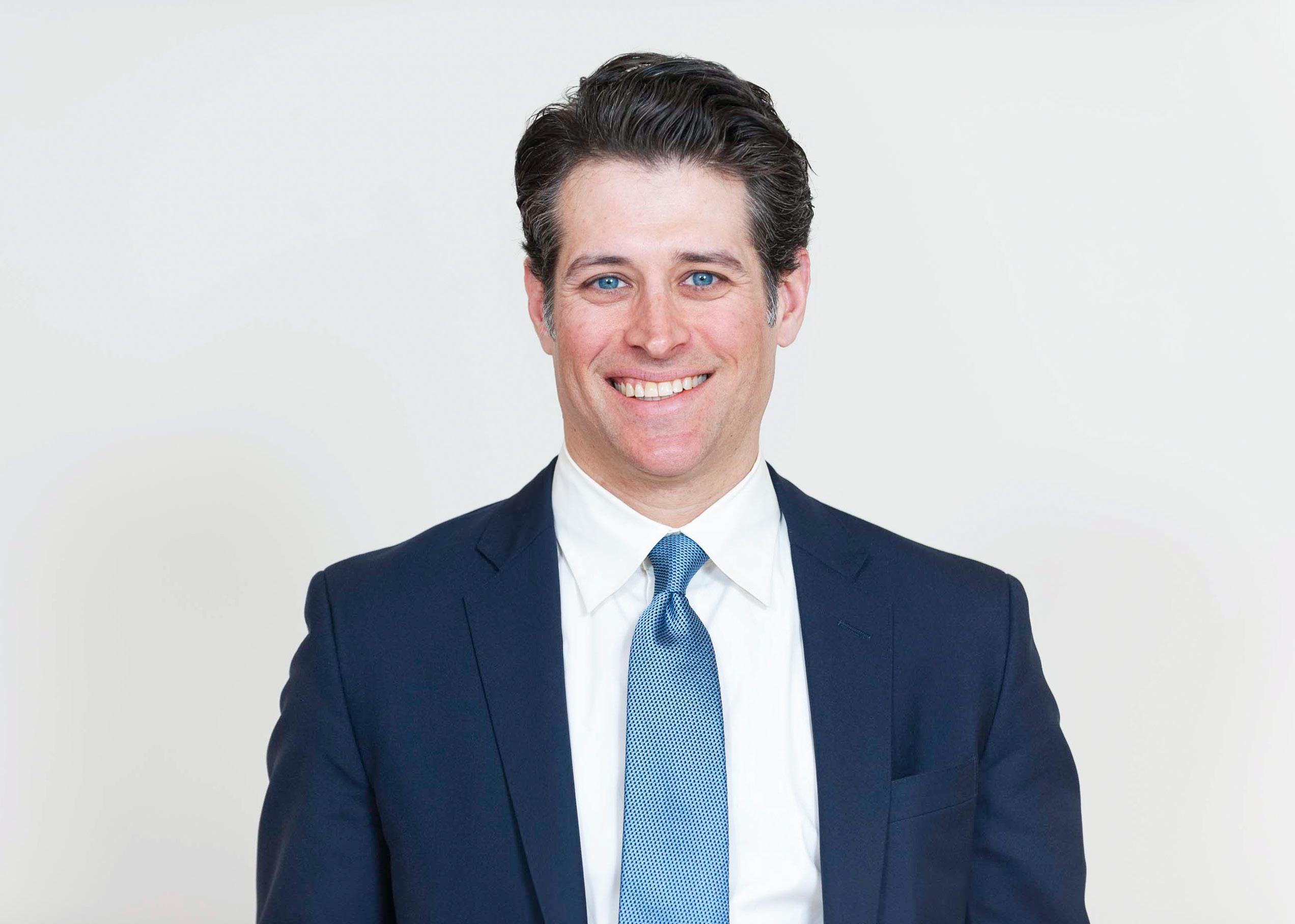
“The team has been responsive to undergoing new training, taking on new tasks, and it’s made the whole process a lot easier to the point where retention has been really strong,” DeLuco shares. “They are committing to us through the change, and I think that’s what will give us success in the long run.”
For instance, he’s currently leading a change on the hospital billing side that will see the unit transform to a new model. When looking at the organizational structure in use, it didn’t make complete sense to DeLuco, and he wanted to create a holistic approach that would better align and make the workflow easier for the staff and partners involved.
“Chris’s vision, leadership, insights, and energy have been extremely
90 AHL
Ethan Kavet
important,” says Randy Notes, partner of healthcare revenue cycle at RSM US LLP. “He and his team have been essential partners to RSM in rolling out specific, value-added revenue cycle initiatives.”
Even before he knew what the final process would look like, DeLuco started meeting with staff in December 2019 and talked about what was planned and organized an open forum where people could ask questions, share ideas, and understand what was going to happen. From temps all the way up the chain, people would weigh in on the potential change, and it made the transformation that much more successful.
DeLuco has revised the revenue cycle process to further drive efficiency by creating revenue cycle huddles. So,
instead of an official meeting every week or two, he organizes smaller meetings where people sit on sofas and chairs (never the table) and huddle around key metrics to talk about what the goals are for the days ahead.
“It’s short-term, narrow-focused information sharing, and that’s been able to bridge a lot of the gaps across the leadership structure,” DeLuco explains. “You could have the supervisor sitting next to the assistant manager or the director and myself. We’re all having the same discussion so there’s more transparency. We do it for just thirty minutes, so it requires us to be very direct and efficient and allows for information to flow across all departments.”
Across both teams, DeLuco leads approximately 250 staffers. He feels that being a good leader comes down to understanding why one makes the decisions they do and being able to share it with everyone.

“You don’t want to push down tactics, but rather share an overall strategy. Having both parties at the table and being able to articulate why goes a long way,” DeLuco says. “Often, the concern I see is how we’re going to do something and not understanding the why. By bringing them all to the table, we answer that.”
Looking ahead, DeLuco says there are a lot of tasks done that are routine yet take up a lot of time, and Memorial SloanKettering is turning more to automation.
“We are turning more to robotic processing. We want our staff to do more thoughtful analytical work and invest in more of the complex problems we face,” he says. “We don’t want to be investing our valuable intellect into easy tasks where you just hit the button at the same time each day. We’ll be moving forward on that and creating further efficiency through these robots in 2020.” AHL
PUT OUR HEALTH CARE INSIGHTS TO WORK FOR YOU. Experience the power of being understood. Experience RSM. rsmus.com/healthcare Improving your revenue cycle can enhance the patient experience. Visit rsmus.com/aboutus for more information regarding RSM US LLP and RSM International. The Reason 91
“Often, the concern I see is how we’re going to do something and not understanding the why. By bringing them all to the table, we answer that.”
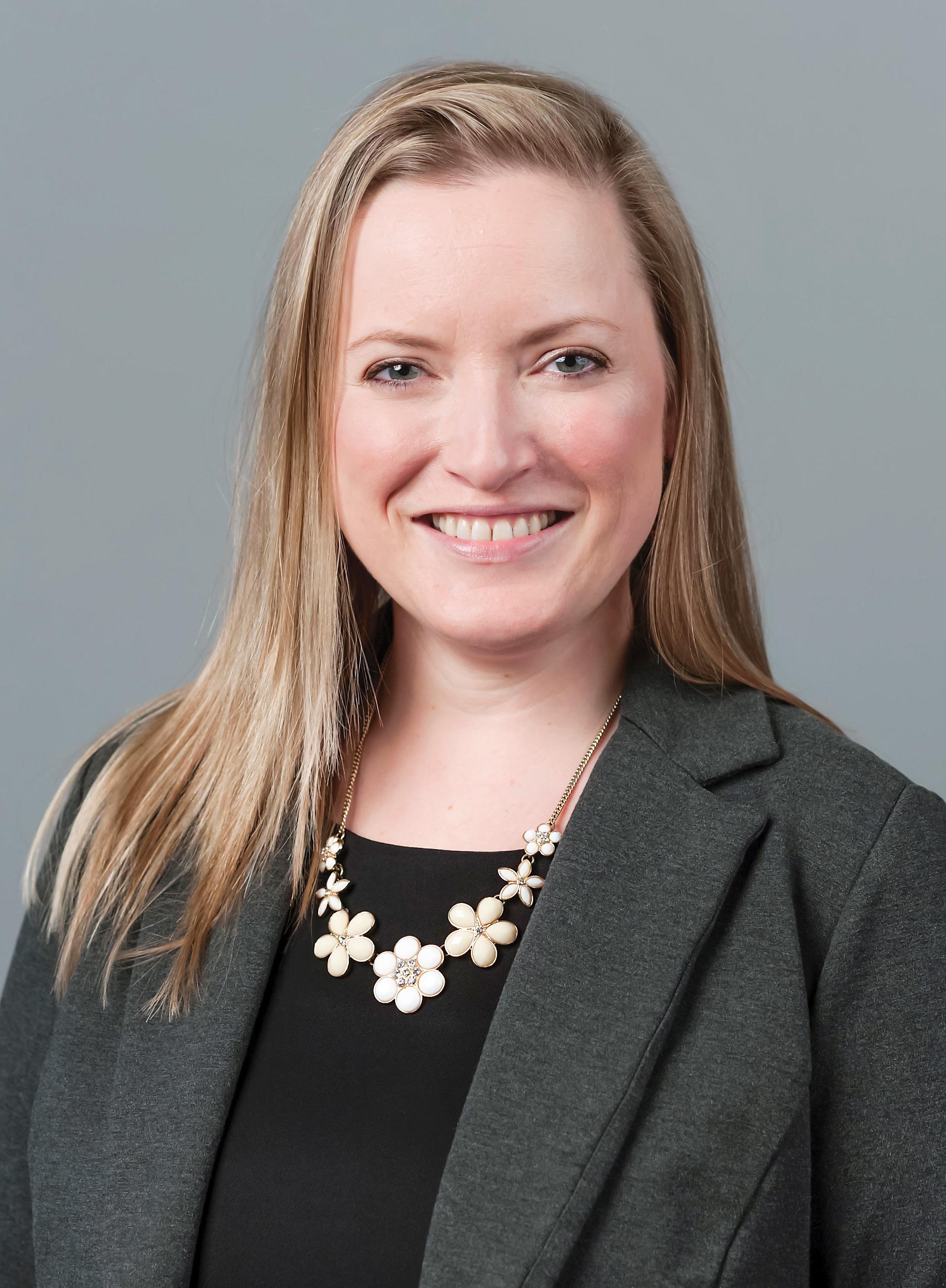
92 AHL
Erin Coffey Director of Revenue Cycle & Patient Access Asante Courtesy of Asante
A Greater Reward for Revenue Cycle
Dedicated to patient advocacy, Erin Coffey has found she can change the entire patient experience from behind the scenes as director of revenue cycle and patient access
By Cora Berg
When Erin Coffey was nineteen years old, she had a job in patient access, registering patients for imaging. She saw her boss constantly responding to complaints from both staff and leadership. “I remember thinking, ‘Who would want this job?’” she says, laughing.
Years later, to her own surprise, Coffey chose a role dedicated to patient access at Asante, a healthcare provider for nine counties in southern Oregon and northern California. There, she serves as director of revenue cycle and patient access. “The patient relationship is the start of healthcare,” she says. And her job is to decrease barriers for patients.
Choosing patient access over more black-and-white areas, like compliance, is not the first adjustment Coffey has
made in her career in healthcare. Growing up, she explains, she accompanied her chronically ill grandmother to medical appointments. “Her complaints were never taken seriously. I decided I would be a doctor,” Coffey says, adding that she was inspired by a desire to treat patients better.
It came as a shock when, after earning a scholarship for a premed degree, she joined a hospital rotation and discovered a deep aversion to blood and needles. “How will I be a doctor if I can’t handle blood and needles?” she remembers thinking. Happily, Coffey eventually discovered other pathways into supporting patients.
Since taking the role at Asante in January of 2018, she oversees revenue cycles for preservice patient experience. This includes referrals and authorizations
and new systems that have decreased imaging registration from an average of five minutes to just two. With the support of her boss, Greg Wojtal—a man she credits with helping her discover her own capacity instead of delineating limits for her—she has launched a patient financial advocacy team.
Using Wojtal’s experience and ability to ask great questions, Coffey designed a structure to bring financial advocacy closer to the patients that need it. After a great deal of cross-training, Asante can now support dual Medicaid/Medicare enrollment and financial assistance applications on-site: a huge help to many patients.
“I’m focused on how to support with people today,” she says. She leaves policy
The Reason 93
to others, instead considering how to help patients navigate current realities. “Not all patient and family experiences are the same,” she says. She understands the complex response needed to support Asante’s range of users. Coffey partners with Healthcare Business Insights (HBI) to help unify the training. She also relies on modules from HBI to help achieve this goal and drive value-based decisions. “They encourage the greater purpose of healthcare,” she says.

Beyond representing Coffey’s dedication to patients, the patient financial advocacy team originates from an exciting cultural shift happening across Asante. Coffey says that in 2019 Scott Kelly shifted roles and became president and CEO. In this capacity he is asking the organization to reevaluate how to remove barriers for Asante’s patients and community.
Understanding a need to fight silos, she explains that previously, there was a traditional “not my circus not my monkeys” attitude across departments with people not wanting to rock the boat or share fault. “That idea will not help patients,” she says. “Now, if there is an error, we all work together.”
“Changing human behavior is exhausting—and it’s wonderful,” says Coffey, laughing. She also describes leadership’s push to encourage people to ask for help—something that can be challenging but is important for employees to feel safe in doing.
She uses a recent scheduling difficulty as an example, explaining that, with all hands on deck, she was able to use new tech solutions and generate ideas that she might not have come up with on her own. “My background is more volume, more people,” she explains. She’s thrilled to be in an environment that prioritizes not only patient ownership of health, but new modes of problem-solving. She is being encouraged to think collabo -
ratively and like a business owner, and also asks her team to work that way.
“Asante is remarkable,” she says. “The executives live and breathe the mission. There is passion, from the cafeteria workers to the directors.” She includes her own team in this description: the 180 staff members who work in patient access and the nine patient access leaders. “They bring great dreams and hard work to their roles,” she says. This year, the patient access leaders are focused on “separating opinion from fact” and, with Coffey’s guidance, developing individual goals to tackle.
Though she does not have MD after her name, Coffey does have MBA/MPA and uses that knowledge, and the knowledge of the entire Asante team, to deliver the healthcare experience she wishes her grandmother had. Coffey knows that she only hears about things when they don’t work. But for the patients, that is the way she wants it. “If we do it right it will be seamless,” she says. AHL
94 AHL
“The patient relationship is the start of healthcare.”
High Performance Through Diversity
Inspired by his childhood experiences, Ashley Garry upheld Eli Lilly’s mission for healing its community while promoting its employees. Now, he’s taking that passion to ArTara.
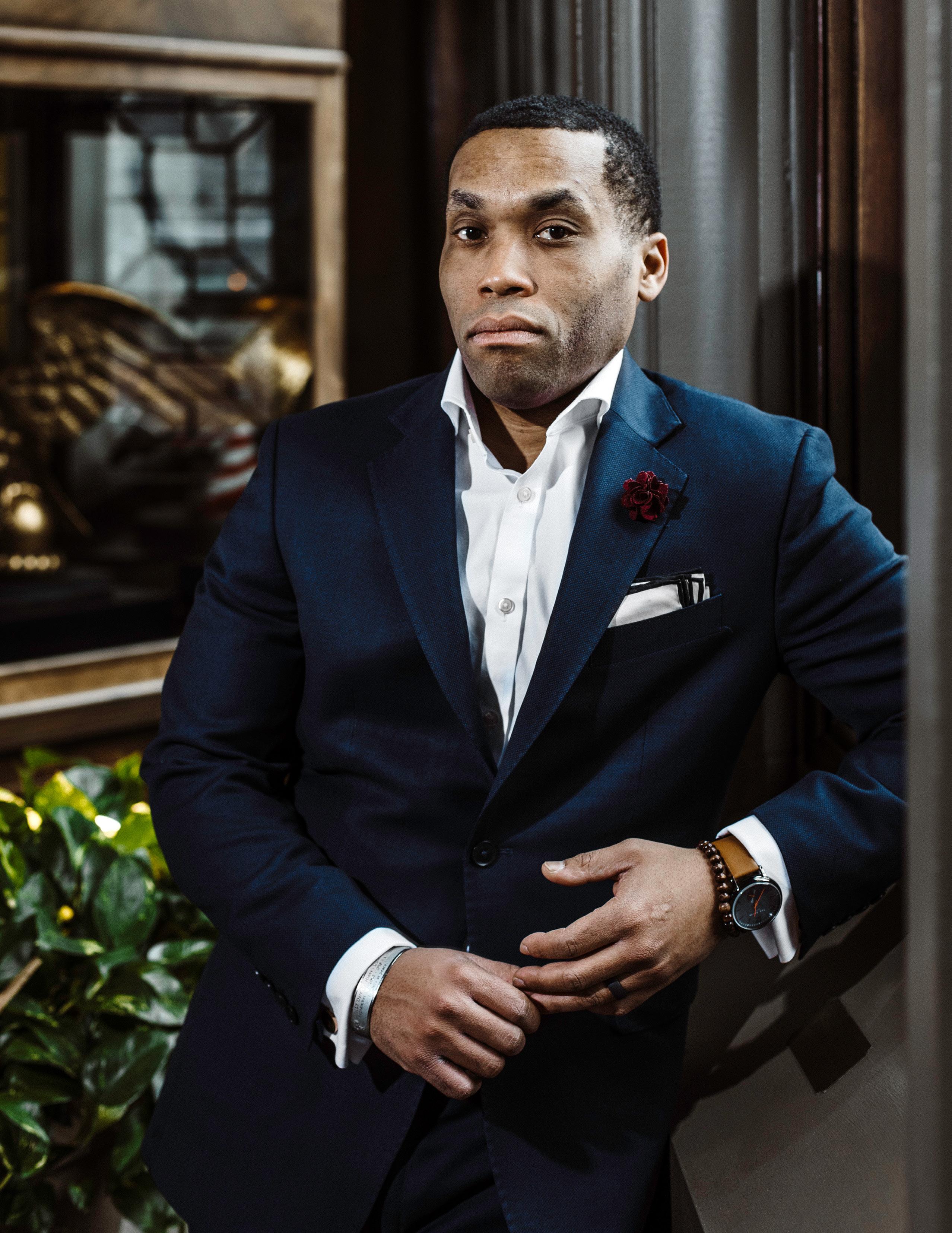 By Sara Verdi
By Sara Verdi
Portraits by Gillian Fry
The Reason 95
Ashley Garry’s path to practicing law within the pharmaceutical industry was influenced by more than just a professional interest. Garry was raised by his grandmother in South Carolina. Throughout his childhood, she suffered from two main health conditions: muscular dystrophy and diabetes.
“For me, I look at the pharma industry and places like Eli Lilly that provide options for diabetics, and they are so critical because it would not have been possible for my grandmother to raise me, to prolong her life, or for me to even know her without these products,” Garry explains. “That planted a seed in me that this is a space worth fighting for, and that there are really, truly good things happening in this field.”
Before arriving in his role as counsel for litigation and legal compliance at Eli Lilly, Garry did some investigations work, white collar crime work, and commercial shareholder demand work. “I had a number of things that I was interested in working on, but pharmaceuticals was really the focus for me,” Garry says. “I was really attracted to that type of litigation.”
“I knew that I wanted to do pharmaceutical law after doing that program, and I had a great impression of Lilly.” So, after graduating from Cornell Law School and accruing court clerkship and law firm experience, he jumped at the chance to interview when an opportunity opened up at Lilly. A few weeks later, he relocated from DC to Indianapolis.
“I came to this company because I really believe in the work that we’re doing in treating patients. The more that we can advocate for how our products work and how they treat patients, the more we can defend the merit of these products,” Garry says. “Given my family history with diabetes and the good work that this company is doing within the industry, those types of wins on the litigation side are very important to me.”
The products Lilly has provided diabetic patients has opened new pathways toward healing, helping them adjust to the major lifestyle changes that come with diabetes. That said, treatment and healing options that Lilly produces keep the entire person in mind.
“Our diabetes franchise is a place where we have been a pioneer and a leader for over a century now, and we have some great products, specifically Trulicity, which is a treatment for Type 2 diabetes,” Garry says. “I think that working in a place where employees are thinking about how to treat people holistically or different ways that our products can touch someone’s life gives a lot of purpose to our work, even on the litigation side. We’re in the business of making patients’ lives better.”
In addition to helping fuel the mission of Lilly from a pharmaceutical standpoint, Garry strives to provide others with the opportunity to experience the company the same way he did as a student by promoting the diversity and inclusion that runs deep within Lilly’s fabric. Garry specifically focuses on bolstering this mission through intentionality.
Coincidentally, Garry visited Eli Lilly while in law school years before he would come to work for the company. “I visited Lilly as part of a program for diverse law students to get some experience and to learn about the company, its culture, and how it operates,” he says.
“When I think about D&I, I like to use the word ‘intentional,’ especially when it comes to our team and talking to our external partners,” Garry explains. “I think that D&I can be a struggle for some places because they are not intentional about how they do it. If you were as intentional about your diversity plan as you are about your business plan, or even half that, it might be easier for people to hit certain targets.”
Garry also places attention on how enhancing accessibility helps fuel D&I efforts. “I am always willing to work with our partners on diversity initiatives. I try to set the
96 AHL
“We are committed to building a team that is diverse, a team that looks like the customers and patients we serve, and a team that reflects our company and the people we work with.”
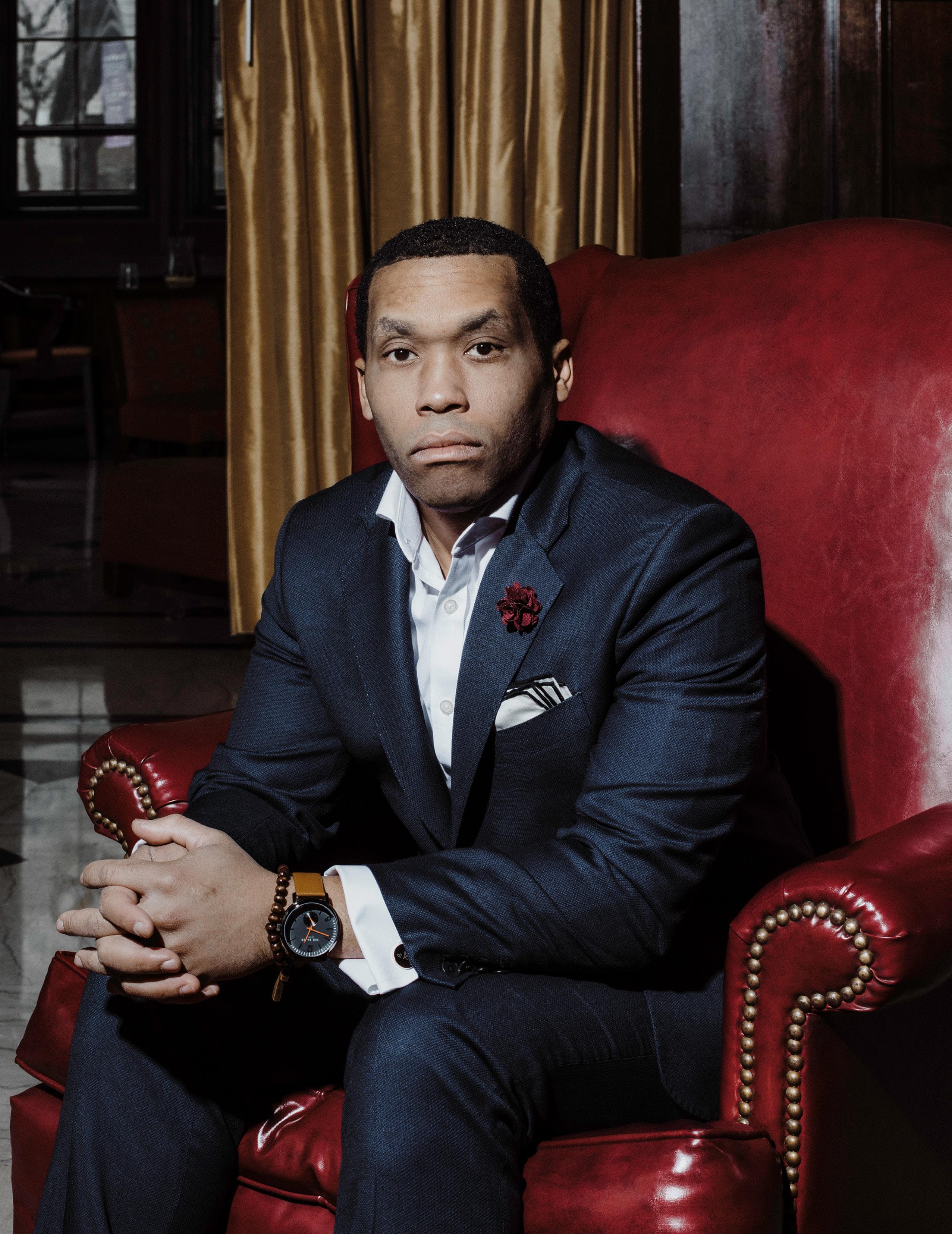
The Reason 97
Ashley Garry Senior Legal Counsel and Corporate Secretary ArTara Therapeutics Inc.
tone that struggling through an issue is not a failure or something to hide, if anything, I want people to be able to come forward so that we can use our resources and experiences to be helpful.
“It’s all about being intentional and having a team that is diverse,” he continues. “A diverse team is a high-functioning and high-performing team, and that’s where inclusion really comes in. It’s important that of
that team, everyone feels like they can bring their whole self to work. To quote a senior leader at Lilly, if people cannot bring their whole self to work, it’s not as if they don’t have good ideas; it’s just that you won’t have access to those good ideas.”
Garry believes that dedicated work is backed by both diversity and inclusion and getting people to be close to the work that they’re doing. “If you put people on a
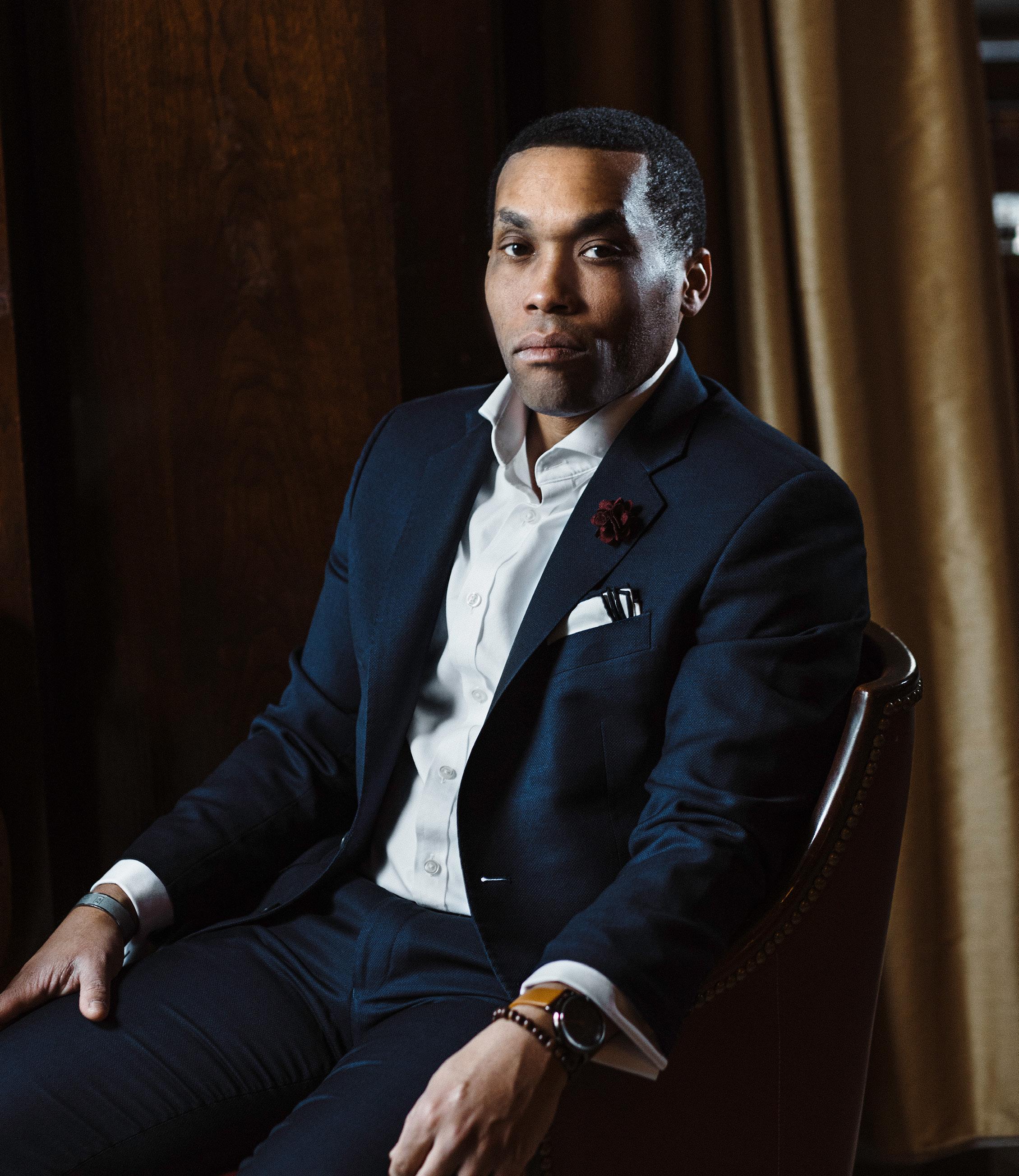
98 AHL
team, but you don’t give them work where they feel like they really get to do anything like have client access or brief senior management, for example, they won’t be close to their work. You have to place an emphasis on that and take time to get people involved.”
Garry strives to create an environment where people are not only comfortable but also reflective of the communities Lilly serves. “We are committed to building a team that is diverse, a team that looks like the customers and patients we serve, and a team that reflects our company and the people we work with.”
In March 2020, Garry joined ArTara Therapeutics as senior counsel and corporate secretary. “I was attracted to ArTara because of the company’s focus on patient-centered drug development and reliance on diverse, inclusive, and high-performing teams,” he says. He is excited to continue his work advocating for patient-centered products while creating diversity and inclusion opportunities. AHL



Weil, Gotshal & Manges LLP: “Ashley is a superb lawyer who is adept at quickly getting to the most important issues. We are honored to partner with him and all of our colleagues at Lilly.”
—David Lender, Global Cochair of Weil’s Litigation Department
Weil, Gotshal & Manges LLP weil.com
Weil is honored to partner with Ashley Garry and the entire Eli Lilly team
The Reason 99
“For me, I look at the pharma industry and places like Eli Lilly that provide options for diabetics, and they are so critical because it would not have been possible for my grandmother to raise me, to prolong her life, or for me to even know her without these products.”
Building a Perspective Spectrum
After successfully spinning off Varex Imaging from its parent company, Kim Honeysett is helping all voices be heard and respected
By Billy Yost
The through line of Kim Honeysett’s career is creativity. Straight out of law school, Honeysett entered a firm whose practice focused on helping innovators bring their ideas to a commercial reality. The firm was grounded in innovation and the power of new ideas. When Honeysett moved in-house, she realized that she could add value by finding new ways to help her M&A team move through deals quickly and pilot new potential methodologies of achieving business results.
Honeysett is still dedicated to the power of thinking outside of her role as senior vice president, general counsel, and corporate secretary at Varex Imaging, a company she was cotasked with spinning off from parent company Varian Medical Systems in 2017. As a mentor, a leader, and a learner, Honeysett is dedicated to empowering all of the perspectives that can help achieve better results and more rewarding careers.
The spin-off of the GC’s current company is one Honeysett looks on as career defining, especially since she had been with the parent company for more than a decade prior to that. “That project offered me so
much experience—it was truly invaluable,” Honeysett says. That process effectively gave Honeysett the opportunity to build her entire team from scratch, an accomplishment she sees as even more relevant than the spin-off itself.
“My team is, by far, the thing that I am most proud of,” the GC explains. “I’ve been able to handpick nearly everyone on my team. We knew we were going to be a small group that had to be nimble and efficient, and I think each of us is very business-minded and is focused on finding the best results for our clients.” Honeysett says she knows her team is successful because of how often members of other departments within Varex come by to bounce ideas off her team.
The Value of Perspective
Honeysett mentions the word “perspective” at least two dozen times during her interview. It’s not just a talking point. Her commitment to the power of diverse voices—in whatever capacity that may mean—drives her leadership and own personal development.
100 AHL
“My previous role with Varian was where I first had the strategic development and leadership experience that exposed me to the importance of diversity of thought and inclusion,” Honeysett says. “That’s where my passion for ensuring that multiple perspectives are considered was developed. At higher levels in the organization, I had the ability to influence more people and realized just how important it is to have a variety of thought and experience in making decisions.”
Diversity of thought and experience can mean more than the assumption of D&I as only an issue of gender or ethnicity. “If you have an engineer, a lawyer, or an HR perspective in a business meeting, each of those people is going to bring a different and important perspective. We all have something unique in our lives that informs our perspectives and that should be valued and respected,” the GC explains.
Being What You Always Wanted
Honeysett has also taken it upon herself to pass on what she’s learned because, for a long period of time at the start of her career, she wanted professional mentors who
Kim Honeysett SVP, GC, and Corporate Secretary Varex Imaging Corporation
GLOBAL PERSPECTIVES
Kim Honeysett is the mentor and leader she wishes she’d had during her own rise. In helping to recognize more perspectives at Varex, the GC has helped develop a departmental rotational program that will include an exchange with the company’s US, Germany, and China offices.
“All of us can be more sensitive to other perspectives,” Honeysett explains. “Doing business internationally, we can incorporate the experiences of those lawyers and business partners into our processes and procedures and help bring a global mind-set to what we do every day.”
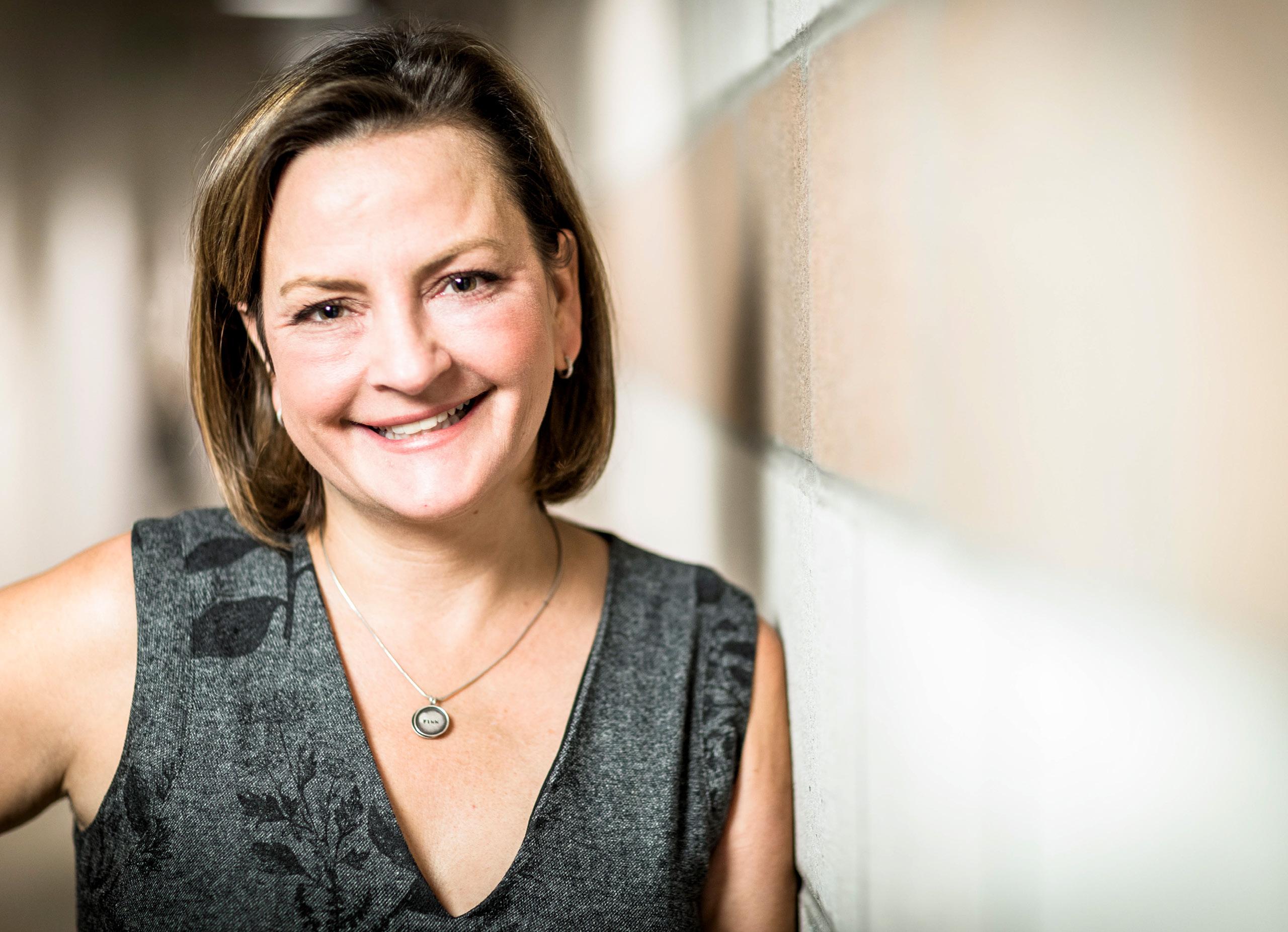
The Reason 101
Courtesy of Varex Imaging Corporation
Kim Honeysett
were willing to do the same. “I found myself in the role of wanting to learn more and to gain more experience, and now I have the opportunity to lead initiatives that are able to bring to others what I wish I would have had more of,” Honeysett says.
Along with acting as a sponsor for the D&I team, the GC was an inaugural mentor for Varex’s mentorship program. “To be in a place where I can share the knowledge I’ve gained is so exciting,” Honeysett explains. “Sometimes I feel like I’m getting more out of the experience than my mentees because they bring such interesting and fresh perspectives. It’s an honor to be part of the program.”
Perspective and creativity are both embedded in how Honeysett views her department as different from the norm. “It’s always easy for a lawyer to say, ‘This is what the contract says in black and white,’ but the tough part is finding a way to help your client figure out how to get to the place that they want to get to in the most reasonable, effective, and compliant way possible,” Honeysett says. “I want my team to be the Department of How.” She says her team is focused on being in discussions early and aiding, not hindering, in any way they can.
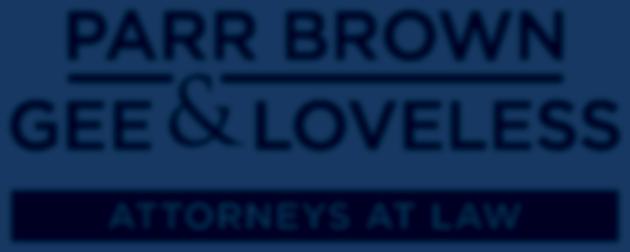
“The legal team is uniquely positioned to make connections throughout the company because we interact with so many different people within the organization,” says Honeysett. She recently revamped the legal vision to include creativity, innovation, and being those connectors to the entire company. It all comes back to diversity of thought.
“It’s well established that any group of people makes better decisions when different perspectives are considered and incorporated,” the GC says. “As a company, we can do more and grow more when we include that diverse talent and when that talent knows their perspectives will be taken seriously.” AHL

WE CONGRATULATE
AND CELEBRATE OUR PROFESSIONAL SERVICES RELATIONSHIP WITH Varex Corporation. PARR BROWN HAS PROUDLY PROVIDED CORPORATE AND LITIGATION ADVICE TO HEALTH CARE INDUSTRY CLIENTS FOR OVER 45 YEARS. 101 SOUTH 200 EAST SUITE 700 SALT LAKE CITY, UTAH WWW.PARRBROWN.COM
“It’s well established that any group of people makes better decisions when different perspectives are considered and incorporated.”
102 AHL
Dorsey congratulates Kim Honeysett on this honor and is proud to partner with Varex Imaging. Dorsey is an international law firm with deep experience in the healthcare industry. With more than 150 lawyers working for hundreds of healthcare clients, Dorsey brings an informed perspective to healthcare transactions and disputes.
The Business
Healthcare is a constantly evolving industry that demands executives to plan ahead. Often, this means business leaders need to address department- or companywide issues to remain focused on driving innovation and devising strategies to maintain a high level of care.
104. Denelle Waynick UCB 107. Viktoriya Torchinsky-Field Cigna 111. Sheila Brodbeck Pfizer 113. Donald LeGower Bristol Myers Squibb 116. Cole Elmer BJC HealthCare 120. Darren Snellgrove Janssen Pharmaceuticals 122. Amy Garner West Tennessee Healthcare 103
Denelle Waynick on how uniting a team on more than one playing field allows UCB to fulfill its goals
By Keith Loria
Evolve with the Environment
The expression “out of the mouths of babes” is apropos for the early childhood of Denelle Waynick. She told people all the time that she wanted to be a lawyer, even though she didn’t quite know what that meant.
Her career path was very focused and intentional, and after graduating with a degree from Rutgers University, the self-proclaimed “Jersey Girl” headed to Washington, DC, for law school, graduating from Howard University School of Law in 1991.
Waynick calls her time at Howard one of the most pivotal points of her life as it largely helped shape who she has evolved into from a professional perspective.
“Being in an environment of predominantly African American soon-to-be professionals and professors, and being educated in those storied halls, helped define and shape my perspective not to just succeed but be impactful,” she explains. “The word ‘impactful’ is a good one to describe what I try to be every day and also what I do in my role.”
Today, Waynick serves as US general counsel and global head of enterprise risk management for UCB, a Brussels, Belgium-based global biopharmaceutical company which invests more than 20 percent of revenue in cutting-edge scientific research to meet unmet patient needs.
Waynick’s journey to the position and her niche as a healthcare attorney included stints at private law firms; time as the New Jersey chief of staff of the department of law and public safety; and legal director for Schering-Plough, which was the beginning of her in-house career in 2003.
“Throughout my journeys, what became fairly evident to me was having the right balance with family and recognizing opportunities to trailblaze from a first amendment perspective,” she shares. “When I made partner at the end of 1999 [for Gibbons PC], it was the first time there had been an African American partner in the history of the firm. I don’t take those types of accomplishments lightly.”
104 AHL
Denelle Waynick US General Counsel and Global Head of Enterprise Risk Management UCB

What attracted her to in-house counsel life at first, and one that continues with her work at UCB, is the ability to see the whole picture of the business.
At UCB, Waynick has successfully led her team during the company’s recent reorganization, embracing change throughout the transformation and aligning her team’s legal strategy with that of the company.
“It starts with building trust and bringing my authentic self to the table every day,” Waynick says. “It requires me to be vulnerable, open, and lead by example. That means when there are challenges, I need to recognize that I need to think a different way and be intentional about working in a different environment. I also need to be thoughtful in my actions and what it means for the organization.”
A hallmark of her leadership skills is recognizing that everyone doing things the same way is not necessarily productive, and instead, instills a culture where people’s different beliefs are valued and respected.
“People recognize that they can have a different reaction, but at the end of the day, we will be aligned to the common goals and objectives. We may not agree, but we are going to get there together,” Waynick says. “Them observing me, helps them; it’s like I am bringing them along.”
The reorganization has created a split in how UCB supports clients, with the executive committee reducing its number of members. The business unit reorganized itself such that two persons are responsible for all the operation from a therapeutic and geographic perspective.
“That consolidation, from a legal department, means we needed to align,” Waynick explains. “Now, there is one head lawyer leading a team supporting neurology, and the same for immunology. We have divided the team based on how the executive committee has fallen.”
The great news is that it has created opportunities for those who were once under Waynick’s management to
William F. Earle III The Business 105
establish their own management capabilities. One of her biggest passions is the development of people and her team, noting that’s where she draws her energy.
“It’s the experience and guidance that I can bring to them that I really feel creates the biggest impact,” she says. “The connection we have as a US team is as strong as ever and the reorganization has not been able to shake that. That gives me an enormous amount of pride.”
The global part of her job is to recognize risks not only trending in the industry but those that are emerging. In addition, assessing what is in the ecosystem that could come to fruition and take the company off its ten-year strategic path.












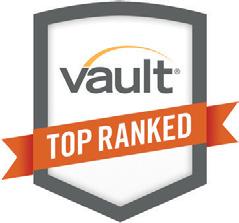

In addition to bringing her legal team together, Waynick is a natural champion for diversity and inclusion and has been instrumental in expanding the global footprint of UCB’s efforts in this area.
In her legal department, she has been very intentional to ensure any recruiting reflects a diverse array of candidates to further foster a sense of appreciation for differing points of view.








“This is not a profession, or an industry, dominated by African American females, so it is incumbent on me and others to reach back and give back to ensure the opportunities—whether I created them myself or in part provided,” Waynick explains. “Do those who look like me, think like me, grew up like me, feel like they are included and have a place in this industry? It’s about trying to level the playing field. It goes beyond that it’s the right thing to do. It’s reflective on the society in which we live.” AHL

www.constangy.com
#1 Firm For Women
#2 Firm For Women
Top 5 Firm For Women
Congratulations to Denelle Waynick, VP of Legal Affairs, US General Counsel and Global Enterprise Risk Management at UCB, on the well-deserved recognition by American Healthcare Leader.
Best Law Firms For Women
106 AHL
“Do those who look like me, think like me, grew up like me, feel like they are included and have a place in this industry?”
Every Big Picture Starts with Smaller Pieces
As Cigna and Express Scripts come together as one company, Viktoriya Torchinsky-Field uses her unconventional thought leadership to help bring a wider vision to her team
 By Will Grant
By Will Grant
The Business 107
Olya Vysotskaya
Cigna Healthcare’s $54 billion acquisition of Express Scripts at the end of 2018 was completed at a truly miraculous rate, considering the two companies employed considerably more than thirty thousand employees each. The combining of one of the nation’s largest providers of health services with one of the three largest pharmacy benefit managers opened a monumental chapter for Cigna.
“Together, we are establishing a blueprint for personalized, whole-person healthcare, further enhancing our ability to put the customer at the center of all we do by creating a flexible, open, and connected model that improves affordability, choice, and predictability,” Cigna president and CEO David M. Cordani said in a statement. “By approaching each individual as a whole person—body and mind as one—we are empowering and supporting customers to take control of their total health and well-being.”
But the deal was just the beginning for Cigna Vice President and Chief Counsel of Litigation Viktoriya Torchinsky-Field, who joined Cigna in 2008. At that time, the company was on the cusp of its strategic shift to becoming a full-fledged global health services company, and the world of healthcare has only continued to increase in complexity since. Throw in an industry-disrupting acquisition that fundamentally reshapes a health services provider, and it’s easy to see how the changes could be disorienting for teams and their members. But TorchinskyField sees it another way entirely.
The Puzzle Pieces
“There is tumult and uncertainty around healthcare from every single direction,” Torchinsky-Field says. “Imagine if you were handed a box of a thousand puzzle
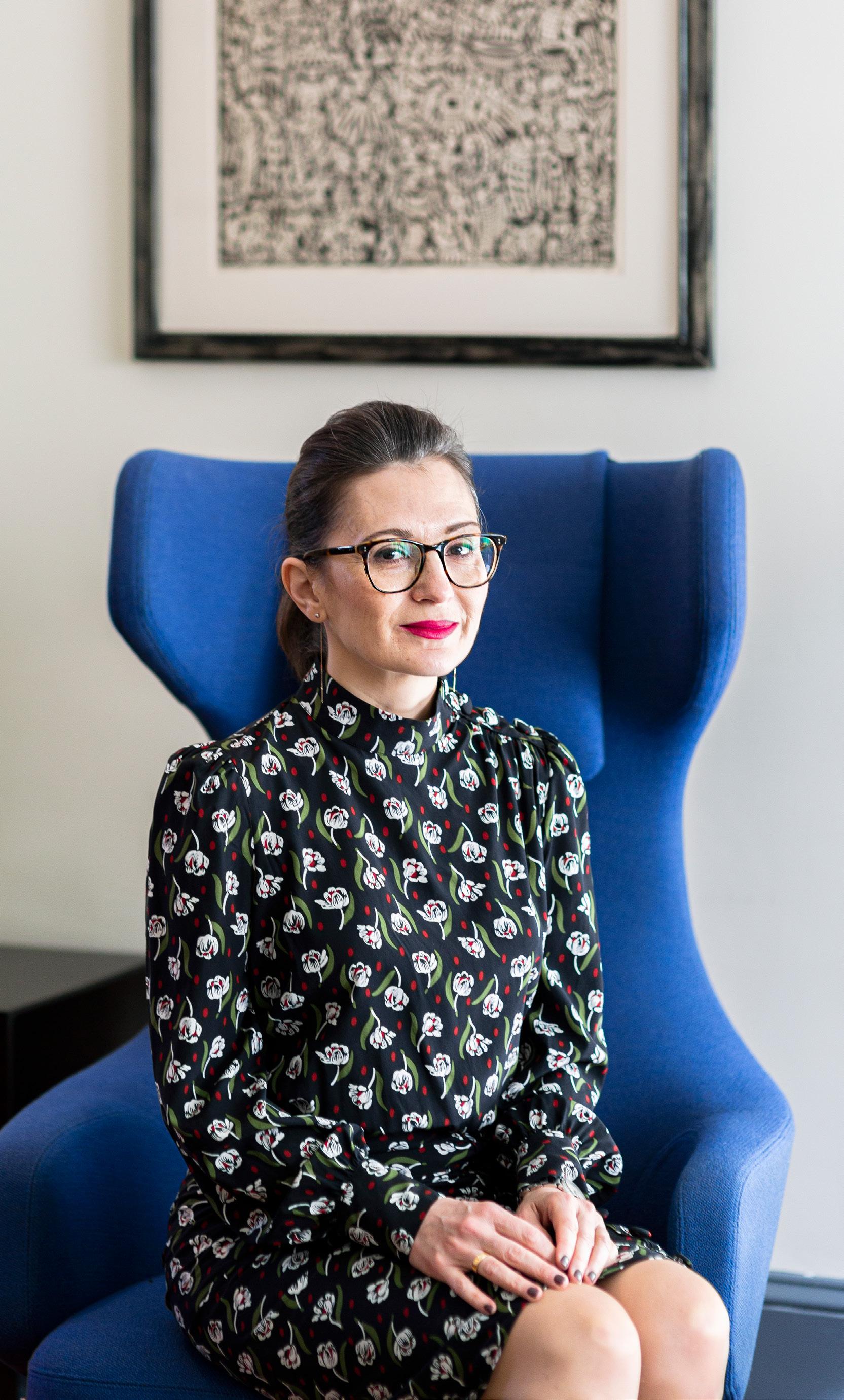 Viktoriya Torchinsky-Field VP and Chief Counsel of Litigation Cigna
Olya
Viktoriya Torchinsky-Field VP and Chief Counsel of Litigation Cigna
Olya
108 AHL
Vysotskaya
pieces and you’re told that it’s a Picasso painting. But you don’t know which one or which period. It’s not going to be straightforward, and it will most certainly be unconventional. They all have to fit together, with each piece in its place, with no pieces left over at the end. That’s our challenge.”
It’s that creative approach to not only the integration of a new partner but also the approach to healthcare at large that has made Torchinsky-Field’s thought leadership a priority in her role. “From partnering with our amazing government affairs team or our media and communications team, to working with our business lawyers who are plugged into the crucial details and our regulatory lawyers who are watching every state and all the federal government moves: it informs the outline of what I think the puzzle is and, frankly, is an exciting role for me,” she says.
Culture, Strategy, and a New Cigna
Keeping all of those parties aligned and in concert is an inherently tough issue
to tackle, but it’s part of a broader initiative to align vision, strategy, and values.
“If we all know what our strategy is, if our priorities are the same and we have shared values, I think the only outcome of putting those pieces together is that culture and strategy are holding hands.”
The acquisition of Express Scripts has been a success for Cigna, but integrating such a large organization hasn’t been without its challenges. “There are cultural differences that need to be addressed, and then there is the time it takes for stakeholders to get to know their new legal colleagues, who are in a supporting, but very important, role for them,” Torchinsky-Field says. “That takes effort from my team to make sure we gain the confidence of our new colleagues and, through this process, come to be perceived as a key business partner in all circumstances. It takes time for in-house litigation counsel to become part of the inner circle. That process is crucial. And it can be bumpy.”
Torchinsky-Field says she leads her team with a twofold philosophy that has
taken time to develop and communicate effectively. “When the company is confronted with a problem, the litigation team comes in with the initial goal of getting to the source of this dispute and figuring out how to address it, either through defensive or affirmative means, or both,” she explains.
“But there’s another goal that my team is entrusted with as I see it and direct it— to look for the root cause of a problem, figure out if there’s ongoing risk, and develop a plan to mitigate that going forward,” she adds.
Culturally, that may be a new, deeper charge for new members to the litigation team, the VP admits. “What we’re seeing now is that our high-impact and complex matters have evolved from a simple issue or two, to be dealt with efficiently, to requiring a 360-degree role in addressing a multifaceted problem—and we need to approach it as such.”
Cigna emerged as a champion for its clients and customers during the COVID-19 health crisis. TorchinskyField’s “radical flexibility” approach to
“If we all know what our strategy is, if our priorities are the same and we have shared values, I think the only outcome of putting those pieces together is that culture and strategy are holding hands.”
The Business 109
Charting the Course
Faegre Drinker salutes

Cigna Chief Counsel
the sudden shift to work from home enabled the team to get a head start on preparing for an unprecedented wave of added challenges. “Counterintuitively, it turns out that the pandemic accelerated Cigna and Express Scripts’ integration and our coming together as one team. We ‘took off our team jerseys’ and got down to business together even as we all developed new remote working skills,” she says.
Thought Leadership When It’s Needed Most
The evolution of Torchinsky-Field’s leadership is rooted in twelve years of adapting to the increasingly large swings of the healthcare debate in America. The complexities and demands of the evolving healthcare system mandated a much more holistic response from her team.
“We could see a problem originate from a prelitigation demand or a lawsuit or complaint that’s filed in court,” she explains, “but it could also, and frequently does, evolve to include a consumer complaint, or an attorney general of a state opening an investigation, or a Department of Justice issuing a civil investigative demand. There are many, many more.

“Being strategic for my team means being able to anticipate and prepare for any or all of those levers being activated by external forces with respect to any particular problem that lands on our desk,” she continues. “Most of the time it doesn’t actually come to pass, or most of these levers aren’t activated. But increasingly we’re seeing that they might be.”
It’s the legal leadership embodied by Torchinsky-Field that elevates the litigation role to one much more ingrained in Cigna’s holistic approach to healthcare. She isn’t certain exactly what the puzzle is going to look like yet, but she’s ensuring that every piece is accounted for—and ready to be placed. AHL
faegredrinker.com
© 2020 Faegre Drinker Biddle & Reath LLP. All Rights Reserved.
in the changing
care landscape.
of Litigation Viktoriya Torchinsky-Field on her contributions to Cigna’s successful merger and integration with Express Scripts. An accomplished lawyer and corporate visionary, Viktoriya leads her team in overcoming challenges and finding opportunities
health
We salute Viktoriya Torchinsky-Field and Cigna for promoting innovative medical solutions and advancing diversity and inclusion across the healthcare and legal professions. www.hklaw.com Philadelphia, PA | 215.252.9600
Thank You for Making a Difference in Our Community and Beyond
Copyright © 2020 Holland & Knight LLP All Rights Reserved
110 AHL
Carolyn P. Short Partner Head, Philadelphia Regional Litigation
Building Hope in Half the Time
Pfizer aims to have a COVID-19 vaccine to human trials in a fraction of the time it originally forecasted
By Will Grant
On April 9, 2020, Pfizer Chief Scientific Officer Dr. Mikael Dolsten told CNBC that the company had identified its lead drug to treat coronavirus and planned to fasttrack its clinical trials. The move pushed them up from an end-of-year forecast to sometime in the third quarter. If Pfizer were to succeed, the light at the end of the tunnel would be coming much sooner than expected.
At the same time, Pfizer was also working on developing a COVID-19 vaccine in partnership with German firm BioNTech. Plans to enter human trials by the end of April still appeared to be on track. If the vaccine was successful and
approval was granted—no small feat— Dolsten hoped the company would be able to “supply millions of vaccine doses by the end of 2020.” The original prediction was an eighteen-month timeline, but that new outlook—which nearly halved the previous estimate—sent hope, along with stock prices, on the upswing.
“We are committed to making the impossible possible,” said Pfizer Chairman and CEO Dr. Albert Bourla in a prepared statement. “We are facing this public health challenge head-on by collaborating with industry partners and academic institutions to develop potential novel approaches to prevent and treat COVID-19.
The Business 111
Congratulations & continued success
Our researchers and scientists also have been exploring potential new uses of existing medicines in Pfizer’s portfolio to help infected patients globally. We are leaving no stone unturned as we explore every option to help provide society with a treatment or cure.”
Of course, making such a cure requires teamwork from every member of Pfizer’s organization, including Senior Vice President and Chief Litigation Counsel Sheila Brodbeck. Brodbeck has spent the past eleven years at Pfizer helping clear the way for the company’s drugs and therapies to make it to the marketplace. The lawyer joined Pfizer in 2009 as associate general counsel of civil litigation and has risen several times from there. Prior to Pfizer, Brodbeck spent more than a decade as a litigation associate at firm Simpson Thacher & Bartlett.
Brodbeck has acted on the advisory conference for Duke Law’s the Duke Conferences, bench-bar-academy conferences whose aim is to “effect practical improvements in the administration of justice on issues of relevance to the practicing bar.” Brodbeck has also served on panels including Thomson Reuterssponsored A Forum on Enhancing Productivity and Project Management for In-House Counsel and an in-house panel hosted by the Lawyers for Civil Justice organization.
Moreover, the lawyer is an honor roll member of Probono Partnership, whose mission is “to provide free business and transactional legal services to nonprofit
organizations serving the disadvantaged or enhancing the quality of life in neighborhoods in Connecticut, New Jersey, and New York.”
Pfizer has done its own share of philanthropy and partnership during the COVID-19 pandemic. The same week the company revealed it had selected its prime drug to battle the virus, it announced $40 million in both cash and grants were being made available for medical and community needs in the US as well as around the globe.
The US donations would go to government public health organizations as well as nonprofit community health organizations. Grants were to be awarded to community health clinics to ease the burden of healthcare workers involved in the pandemic response. Pfizer also announced a program that would allow employees with medical and lab expertise to volunteer with local healthcare systems.
With any luck, and with Pfizer’s fullcourt press of a response to the virus outbreak, a real and sustainable cure is on the way. AHL
Global healthcare companies face many challenges: intellectual property disputes, changing regulation, and trade challenges, to name a few. Opportunities for growth exist in acquisitions, joint ventures, licensing, distribution, supply agreements, and international trade. Global law firm White & Case works with companies to navigate challenges and seize opportunities.
In this advertisement,
112 AHL
Congratulations
to Sheila Brodbeck and Pfizer on being recognized by American Healthcare Leader
White & Case means the international legal practice comprising White & Case llp, a New York State registered limited liability partnership, White & Case llp, a limited liability partnership incorporated under English law, and all other affiliated partnerships, companies and entities. whitecase.com
The Well-Informed, Well-Supported Strategy
Some people see their career as a fascinating adventure day after day. For Donald LeGower, assistant general counsel of litigation and government investigations for biopharmaceutical company Bristol Myers Squibb (BMS), that’s certainly the case.
In his current role, he is charged with managing the company’s litigation and government investigations.
“While I love the strategy and tactics of managing the company’s litigations and government investigations,” LeGower says, “the part of this job that’s most energizing on a day-to-day basis is coming to work at a place where people are trying to discover, develop, and deliver innovative medicines that help patients prevail over serious diseases.”
Assistant General Counsel
Donald LeGower describes how compiling the right data with the right team promotes ideal outcomes
By Keith Loria
It’s the type of role he’s excited to be in, and one he’s sought since going to school.
After graduating law school from the University of Virginia in 2001, LeGower spent almost fourteen years at Dechert LLP in Philadelphia. While he ultimately became a partner in the product liability group, he had a career that included antitrust, consumer fraud, and general commercial litigation that he continued to work on before and after settling in the product liability space.
“As my career developed, I maintained a varied practice, but I started to focus more and more on matters involving pharmaceutical and life sciences companies,” he explains. “When an opportunity came up at BMS, I jumped at it.”
The Business 113
While at BMS, LeGower has managed a number of notable matters. One matter he is particularly proud of involved a product liability matter involving an anticoagulant medication.
“When we first started seeing litigation about the product, we started to think about ways we could cabin or control the cases to avoid the type of large product liability multidistrict litigations (MDL) our peers have seen in related matters,” LeGower explains.
“Rather than manage the small number of initial filings as individual cases,” he continues, “we saw what was going on with other companies and immediately staffed the cases and devoted resources to defend the cases with an eye toward being able to defend a MDL if one should come.”
As a result of that decision, he and his team, with the assistance of internal experts, were able to get ahead of the data and regulatory history of the product and were able to make well-informed and well-supported strategic decisions about how to defend the cases in such a way that key arguments could be fully developed and advanced early to provide the best possible chance of success.
“We and our outside counsel spent a lot of time when the first couple of cases were filed because we anticipated
there would be litigation as we had seen it with other industry products,” LeGower shares. “Digging into the regulatory file, understanding the regulatory history, talking to the people who had intimate knowledge of the product, examining the clinical data, and understanding the importance of that data and the regulatory history helped us put together a detailed and rigorous analysis of how we could defend litigation.”
Ultimately, that led to an effective dispositive motion strategy which capitalized on the existing law in a way that generated a meaningful preemption decision. That decision not only resulted in dismissal of the vast majority of cases in this litigation, but also created a precedent being used throughout the country in other cases like this.
A second notable case came in November of 2018 when LeGower was on the right side of Incyte Corporation v. Flexus Biosciences, in which a Delaware state court jury rejected the former’s claims that Flexus was unjustly enriched by stealing Incyte’s trade secrets.
“Throughout this litigation, Incyte advanced a laundry list of allegedly misappropriated trade secrets,” LeGower explains. “The challenge we faced was not only how to effectively analyze a large number of relatively
“The key to defending cases like these is to build a team that is willing and able to dig into the available data and mine the records to understand what is really going on . . .”
114 AHL
complex and technical allegations of misappropriation, but then how to present our arguments sufficiently clearly and concisely to allow the court to understand and dispose of them.”
“Through a series of thorough, clear, and aggressive motions, we and our counsel managed to pare down the list to two discreet alleged trade secrets that we were comfortable we could explain to a jury,” LeGower continues. “Ultimately the case went to trial and Flexus and its founders prevailed on both theories of trade secret.”
Again, LeGower and his team got involved early, dug into the details of the case, worked closely with the internal experts, got ahead of legal issues, and developed an understanding of the facts and science early in the matter.
The team for this case was led by Jim Hurst out of Kirkland & Ellis’s Chicago office and LeGower says success came from a strong partnership between the in-house lawyers and the external counsel. Naturally, Hurst and Partner Matt Solum agree.
“Don’s vast experience is evident from his always calm-under-pressure leadership, which was invaluable during the high-stakes Flexus trial, especially after we got a jury question that made us wonder whether the jury was leaning against us,” Hurst says. “He reflects BMS’ department as a whole—easy-going, excellent judgment, great to work with, and highly effective.”
“Don, a leader within Bristol Myers Squibb’s top-flight in-house counsel team, is someone who consistently provides invaluable leadership and deep experience in guiding our team as we litigate and resolve complex, often multifaceted disputes for BMS,” Solum adds.
“I firmly believe that the key to defending cases like these is to build a team that is willing and able to dig into the available data and mine the records to understand what is really going on, and then is able to explain those technical aspects of the case to a judge or jury,” LeGower says.
“Defending cases in our industry is difficult because it requires explanation of nuanced scientific points in a way that is accessible to courts and juries who often do not have technical backgrounds,” he notes. “To do it effectively takes a team with technical expertise, the capability to dig into the details and partner with our internal experts, and the advocacy skills to present what they learn in a way that is accessible to a lay audience.” AHL
The
business.
language of
contributions of
Cara D. Edwards 1251 Avenue of the Americas New York, NY 10020 Attorney Advertising | MRS000147632 dlapiper.com The Business 115
Our relationships with our clients are built on communication and collaboration. We want to see you succeed, which means being a knowledgeable legal and business adviser.
We are proud to recognize the incredible
Don LeGower for his work on behalf of Bristol-Myers Squibb.
Strive
to Optimize
Cole Elmer knows how to lead a team to success. A former team leader and sergeant with the Illinois Army National Guard, Elmer has seen the benefits of trust, communication, and perseverance firsthand. Today, as vice president of revenue management at BJC HealthCare, Elmer has been guiding teams both within his department and throughout the company through a number of cutting-edge initiatives designed to carry the organization into the future.
Elmer joined the Army National Guard in 2000 while in college. “I went to basic training before 9/11, but when I got back from training that September, I watched the second airplane slam into the World
At
nationally recognized healthcare organization BJC HealthCare, Cole Elmer helps guide teams working across the organization through forward-thinking initiatives
By Sara Deeter
Trade Center,” Elmer recalls. “At that moment, I had a startling realization—that I would be going to war.”
Elmer was deployed to Iraq from 2004 to 2005, during which time he formed “unbreakable” bonds with the men and women serving with him. “But I also had a lot of time to think about what I wanted to do after I got back from Iraq,” he says. “I knew that healthcare was a stable industry, so I decided to put my efforts toward health planning and administration at the University of Illinois.
“I had no idea what the healthcare revenue cycle was when I first heard a company speak about a career in it,” Elmer recalls, laughing. “But I put my résumé on
116 AHL
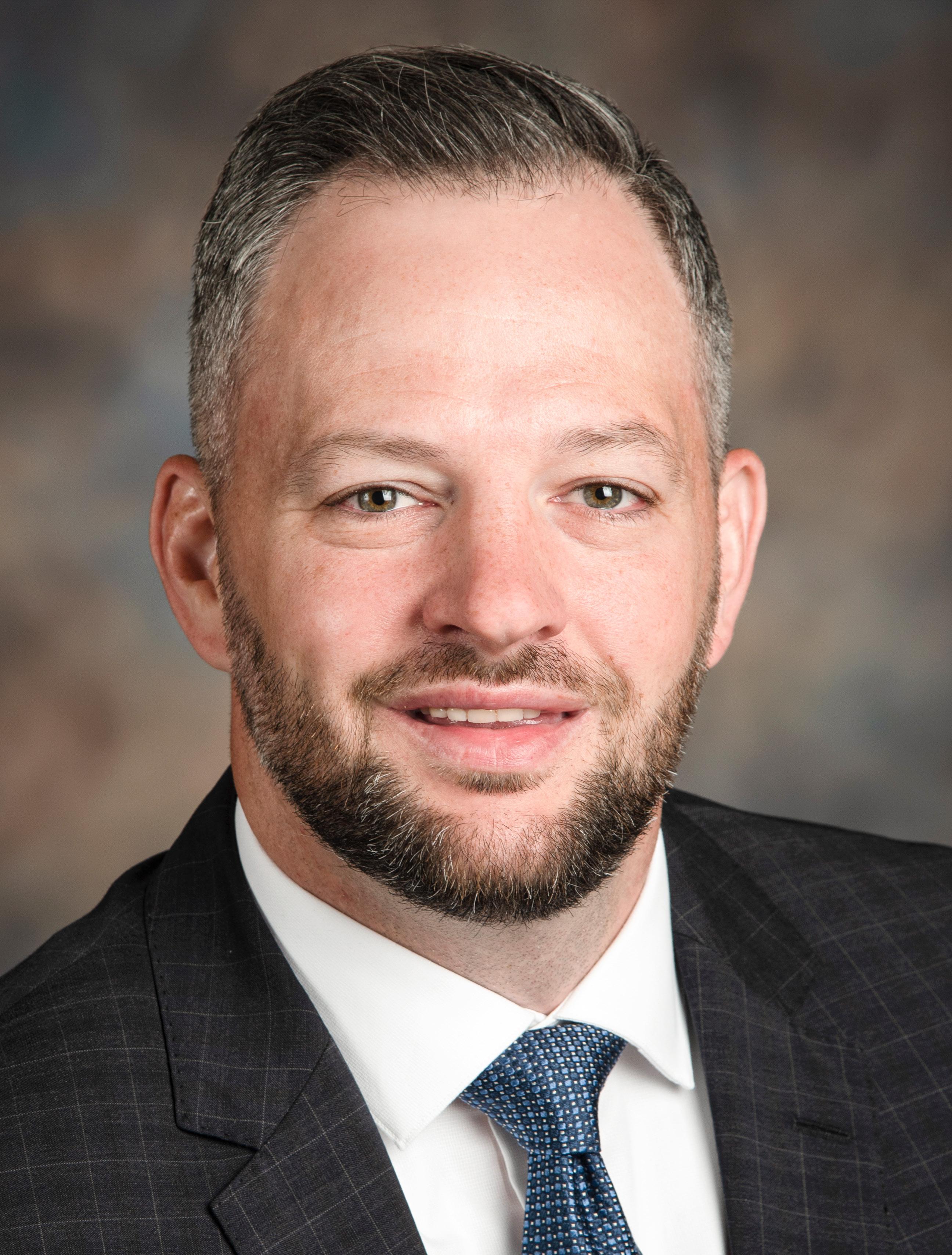 Cole Elmer
VP of Revenue Management
BJC HealthCare
Cole Elmer
VP of Revenue Management
BJC HealthCare
The Business 117
Courtesy of BJC HealthCare
the pile after a company recruiting presentation, got a job with a revenue cycle management company out of Chicago, and just jumped right into it.”
Over the ensuing years, Elmer gained experience in several different areas of the healthcare industry, working on the third-party side, provider side, and business development as well as consulting. Of course, “not everything was my forte,” Elmer jokes. “But it was a lot of great experiences overall.”
And in February 2019, Elmer’s wide-ranging experience earned him a spot on the revenue management team at BJC HealthCare, a nonprofit healthcare organization that encompasses two
nationally recognized hospitals affiliated with the Washington University School of Medicine.
Since then, Elmer and his boss, Tracy Berry, have been collaborating with both their own teams and other teams working across BJC on an array of initiatives intended to optimize the organization’s operations as well as enhance patient care.
Patientco Partnership
According to Elmer, one of the organization’s most impactful initiatives in 2020 has unquestionably been its partnership with Patientco, a patient payment software company that focuses exclusively on the patient’s experience with their bills.
“With Patientco, we will be able to meet the patient where they want to be met financially,” Elmer says.
As a result of this partnership, Elmer says, BJC patients will be able to pay their bills by phone, at any time of day or night, through an interactive voice response program; they will gain access to real-time feedback and advice through an alternative intelligence program called chatbot technology; they’ll be able to pay their bills through various modalities via phone, tablet, or computer through an integrated patient payment portal; and they’ll be provided with a single statement outlining the entirety of their patient balance.
LESSONS FROM A MILITARY LIFE
Serving in the military teaches you innumerable life lessons, Cole Elmer says. But some of those lessons have continued to resonate with him throughout his years in the healthcare industry:
People and Performance: “In the military, you fight for your country—but it’s the men and women fighting alongside you that make you fight harder,” Elmer says. “And in the workforce, it is the relationships that you form that drive you toward greater performance.”
Constant Refinement: “After every mission, we held an afteraction review (AAR)—it was a chance to evaluate what went well and what went wrong,” Elmer recalls. “We were always looking for ways to get better, which is something I have often tried to emulate in my professional career.”
Put into Perspective: “Now, even if I’ve had a bad day, I can put it in context with my other experiences. It may have been a bad day,” Elmer notes, “but it’s certainly not as bad as being in Iraq.”
“This is the kind of system where everybody wins—it increases patient yield and satisfaction while decreasing costs and bad debt,” Elmer says. “Nothing is more stressful in a household than a financial burden. We need to be able to give patients world-class clinical care as well as world-class financial care.”
Automation Ideation
In 2019, Elmer and his team implemented an automation initiative intended not to replace any existing processes with technology but rather to initiate a conversation about those technologies with all of the teams working on the front lines at BJC.
“We collected feedback from frontline staff about the areas that they thought could be automated—redundant tasks that are repetitive in nature—so that we could position our staff to touch accounts that result in higher-yielding activities,” Elmer explains. “Out of the thirty-three ideas that were submitted, eleven were selected for automation and seven led to re-education.
“Automation is such a buzzword right now,” Elmer continues, “but this initiative has really helped reframe our thinking. We just keep coming up with fantastic ideas, one after another.”
118 AHL
The Pulse of the Organization
And BJC has only continued to build on the interteam dialogue fostered through initiative like the automation initiative, Elmer emphasizes. In 2020, he says, the organization will be implementing a tiered huddle system that exists on the clinical side. It is now integrating the system’s structure on the revenue cycle side, which will bring staff of all levels together to provide feedback on key questions such as, “What system issues exist today?” and “What’s going on with our payers?”
“Essentially, information from the frontline staff huddles is cascaded to the managers, then to the directors, and on up to the VPs and leadership team,” Elmer says. “We all want communication—to know what is going on and
where we are going. The tiered huddle system will help us all keep a finger on the pulse of the organization.”
And along with all the other initiatives that the organization is implementing, Elmer emphasizes, that kind of realtime feedback will help ensure optimal success for BJC.
“We’re trying to set the foundation for years to come,” he says, “a foundation not only for the revenue cycle but also how we serve our patients because they are the center of everything we do.”
“We’re looking at it in segments,” the VP continues. “What needs to happen in the next five years? The next ten? And after we get all the organizational changes implemented and normalized, how do we all push ourselves to continue optimizing?” AHL
Drive payment lift and deliver superior patient financial care, powered by Patientco. BJC Healthcare is doing it, now it's your turn.
ONE PLATFORM TO POWER:
• Dynamic Communications
• Self-Service Payments
• Staff-Assisted Payments





• Payment Automation & Analytics




Humanizing healthcare one payment at a time. Visit us at Patientco.com



to
learn more.
The Business 119
“Nothing is more stressful in a household than a financial burden. We need to be able to give patients world-class clinical care as well as world-class financial care.”
Strategies from the Modern CFO
Darren Snellgrove looks toward the future to help bring Johnson & Johnson subsidiary Janssen Pharmaceuticals into the new era of drug research and development
By Sara Verdi
To Darren Snellgrove, innovation is everything. “Without innovation, we aren’t going to last very long,” says the CFO and senior vice president of finance of Janssen Pharmaceuticals’ Global R&D division, a subsidiary of Johnson & Johnson (J&J). “If you look back at the history of medicine, the developments and innovation there are just incredible.”
Take the Band-Aid, for example—one of Johnson & Johnson’s founding glories. In the past one hundred years, J&J has overseen innovation ranging from the creation of the first adhesive bandage to 3-D printing and robotics-operated surgeries.
With pharmaceuticals as one of Johnson & Johnson’s largest sectors, Snellgrove’s current role, which supports pharmaceutical research and development, is focused on how Janssen can bring transformation and innovation to patients. To Snellgrove, it is vital
to the success of the strategy to understand more than just the financial side of things—it’s important to integrate yourself in the industry to figure out where you can add value.
“Pharmaceutical products have a long development life cycle, so you have to be looking five to ten years ahead and asking, ‘Where is the industry headed?’ or ‘What are our competitors working on?’ You have to make sure you are investing in innovation that is going to be transformational at the time of launch,” he says. Snellgrove concedes that it is challenging yet valuable work.
At the moment, Snellgrove manages several different research and development portfolios for Johnson & Johnson in oncology, immunology, and depression therapies. More recently, J&J has launched a breakthrough treatment for depression, which is the first new
mechanism of action in roughly thirty years. “We try to maintain a diverse portfolio of investments across several different areas and not get too overly concentrated in one area,” he explains.
Since stepping into his role, Snellgrove has concentrated on methodologies regarding value creation, capital allocation, and risk analysis to drive business for J&J. “The modern CFO wears many hats and has many responsibilities. But to me, none is more important than value creation. You have to understand how your organization creates value, and then I think the goal as CFO is to then work out how your organization can maximize on that,” he says.
Once you understand what drives value, you can allocate capital appropriately to maximize value. It is important to think about your capital allocation across a variety of dimensions, including
120 AHL
short-term and long-term as well as risk and return. “I think with all the demands on a modern CFO it can be easy to lose sight of the importance of focusing on value creation, but I do believe that is fundamentally our most important role.”
Snellgrove attributes his philosophies on strategy and leadership to a combination of Johnson & Johnson’s credo and admirable leaders he has worked under. “The credo talks about doing the right thing for patients, customers, employees, and communities. It’s pretty foundational, but it’s also inspiring as an individual because it is holistic. It starts with ‘Why are we here?’ and ‘What are we trying to accomplish?’ A lot of my leadership philosophy stems from this. I also try to be real and approachable and live into that every day,” says Snellgrove.
He also admits that some of his successes as a leader come down to having an excellent team. “I’m lucky that I have a great team. I try to leverage that team and always listen to their ideas. I have found that if you set ambitious goals and let people largely run with it, it’s amazing what they can do. They always deliver more than I think is possible,” he says.
Though his title denotes seniority, Snellgrove more so sees his role as support to his team. “I’m here to help them perform at their best, to remove obstacles, to energize and inspire them. I also think it’s important for me to take responsibility and take the heat if things don’t quite work out.”
More recently, Snellgrove has taken to setting up “coffee chats” with his team members to be able to listen to them one-on-one and discuss what’s on their minds. “I travel a lot for this job, and sometimes I feel like I can never give people enough time. These coffee chats, even if they’re thirty minutes long, give people the space to talk about anything, and I have found it to be really effective.”
He says, ”At Janssen we set the bar high and are looking to have a transformative impact on patients’ lives each and every day. As a finance team in support of that goal, we need strong leaders, diversity, and an inclusive approach, where people can feel they can bring their ideas forward.” AHL
Life Sciences R&D organizations are under increasing pressure to deliver groundbreaking innovation and increase their overall productivity. Deloitte ’s global life sciences R&D practice helps organizations transform their R&D models, harness the value of data and advanced technologies, and reshape innovation—all while elevating the patient experience. Learn more: www.deloitte.com/us/ life-sciences-randd
Congratulations Deloitte is proud to celebrate Darren Snellgrove, Chief Financial & Operations Officer for Janssen R&D, on his accomplishments and dedication to the industry. Congratulations to Darren and Johnson & Johnson on continued success. www.deloitte.com

Copyright © 2019 Deloitte Development LLC. All rights reserved. The Business 121
“The modern CFO wears many hats and has many responsibilities. But to me, none is more important than value creation.”
Communication, Compliance, and Care
In the unique role of chief compliance and communications officer, Amy Garner shows the link between legal and marketing—and how West Tennessee Healthcare can leverage these tools
By Cora Berg
“The care you trust is right here,” says Amy Garner, who wants everyone in her community to know about its access to West Tennessee Healthcare (WTH).
Coordinating a massive marketing campaign to get the word out, Garner explains that over the past decades the organization—a group of ninety facilities across nineteen counties—grew fast and did not worry much about a unified brand. WTH’s current marketing blitz
to rectify that pattern is proving effective. In two years, name recognition has increased from 3 percent to 19 percent.
“We want people to understand that we are a high-quality organization with the same quality across facilities. We want people to choose us,” Garner says.
Garner’s grasp of organizational quality at WTH runs deep. She not only heads the communications team, she also oversees the compliance program for the
122 AHL
system, overseeing rules and regulations. Her title, chief compliance and communications officer, is unusual.
“I don’t know anyone else who is a compliance officer and a communications officer,” she says. For Garner, bringing these areas of expertise together makes perfect and practical sense because of her unique skill set and the useful relationship between compliance and communication.
Twenty-two years ago, Garner joined WTH as an accountant. Leaving banking, she landed in healthcare and discovered she loved it. She happily recalls that staff “took me under their wing and taught me everything.” WTH’s mission also inspires her work. “I can’t help people directly, but it is good to know my work is helping people,” Garner says.
Since joining WTH, Garner has taken on diverse roles with a variety of reports.
Amy Garner Chief Compliance & Communications Officer West Tennessee Healthcare
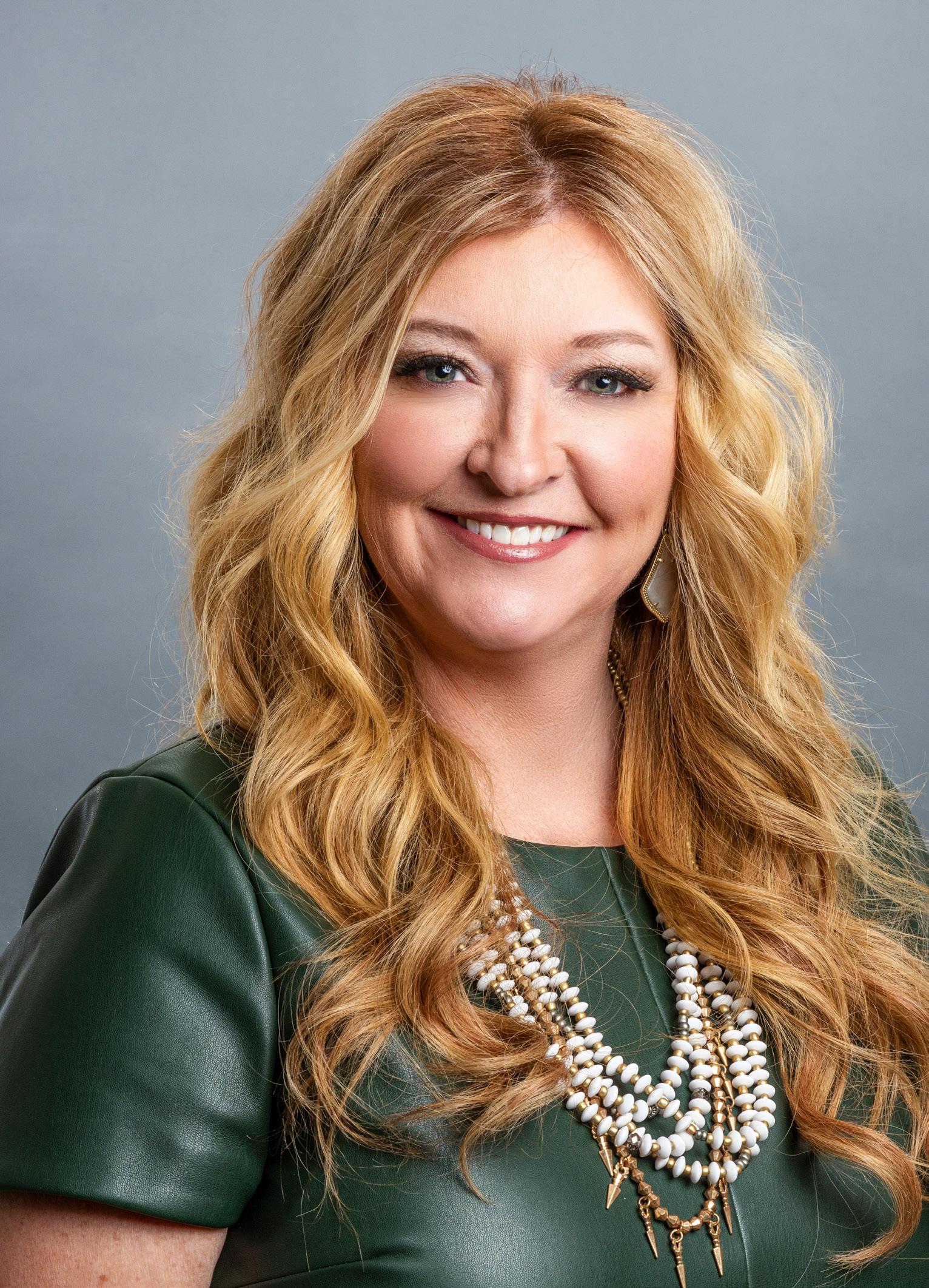
She says, “I’ve loved every job I’ve been in. I can never imagine wanting to do anything else, until I get a new role and then I love that.” She credits a passion for learning with facilitating this pleasure. As a result, Garner has an in-depth awareness of the organization and its 7,200 employees.
Three years ago, WTH leadership needed a temporary director of marketing and communications. They asked Garner to take on the challenge. “Maybe it’s because I like to talk all the time,” she says, laughing. While she jokes about her abilities, leadership identified her talent for identifying audiences and creating effective communication, making her the perfect candidate for the job.
Garner quickly discovered how much she enjoyed—and excelled at—marketing, social media, and public and media relations, especially because of the creative outlet it allows her. “I had never even written a press release before, but now I love it,” she says. After one year of leading communications in an interim capacity, Garner and WTH agreed she should staff the role permanently and added “communications officer” to her title.
Bill Stiles, director of strategy and research at WTH’s partner the Johnson Group, believes West’s two unique roles work hand in hand to help further WTH’s mission. "When I think of compliance, I think of doing the right things for the right reasons,” he says. “Effective, ethical marketing communications is based on the same ideal. Amy's passion for truth and trust is critical to her success in both roles."
The Business 123
David Bard Adkins
Because of her compliance background, Garner has ready answers to legality questions inherent in healthcare marketing. She knows how much transparency is allowed, where crews can film, and what patient data marketers can access. She understands rules and regulations about financial incentivization. This information streamlines her communications work and creates an unexpected collaboration.
On the other side, Garner says that taking over communication work improves her relationships within the healthcare system. “People are often guarded with compliance officers,” she says. “They are waiting for a ‘no.’” Working in marketing, a different occasion for meeting with staff, means Garner can build relationships more easily and, perhaps, move the compliance office closer to what she wants: “to be viewed as a resource.” In her compliance role, Garner must use her communication skills to speak to very specific audiences within the hospital and has taken on a goal of increasing compliance branding.
Since taking over the compliance office in 2003, Garner has done a great deal of work to get it to a place where employees could consider it a resource. When she began, the board assured her they prioritized putting resources towards internal auditing and creating clear and competent compliance structures. Garner and her team rolled up their sleeves to create policy and procedures and “turn over rocks to find problems,” she says. Garner shifted to compliance the same year that federal HIPAA guidelines went into effect and WTH relied on Garner’s team to build ground-up privacy protection structure, as well as design and implement learning management tools.
Working with a compliance team made of the same five people since 2003, Garner says, “They know their stuff. Now we see fewer problems and respond more quickly.” With these systems functioning,
Garner’s ten communications and media service staffers, as well as a group of outside consultants, can benefit from the time and energy she directs at marketing and PR.

As WTH prepares to celebrate its seventieth birthday in August of 2020, Garner wants to make sure that people share her enthusiasm for the organization. She helps promote WTH’s providers, many facilities, and cancer treatment center by highlighting its unique position in the community and its commitment to uninsured patients. “Our organization does so much more than just healthcare,” she says. “We are the largest employer in the region, outside of Memphis, and we are great corporate citizens.”
“I hope that the compassion of clinical providers has rubbed off on me,” she adds. Though her passion for delivering safe, effective healthcare suggests she already embodies this compassion—and it will guide her in any role WTH has in store. AHL
Trusted Leadership.
Proud to work alongside Amy Garner. C M Y CM MY CY CMY K
Lasting Friendship.
124 AHL
“I can’t help people directly, but it is good to know my work is helping people.”
The Impact
Executives know there is an increasing need to help individuals manage their own health anywhere and anytime.
To do that, healthcare leaders are developing products and services and offering resources catered to different communities’ needs—all aimed at motivating them to stay engaged with their health and empowering them to be their best, at home or at work.
126. Wayne Bowden Biorasi
129. Robert Parker, John Kunysz Intrepid USA Healthcare Services
132. Sue-Jean Lin Alcon
136. Jo Abernathy Blue Cross Blue Shield of North Carolina
140. Jason Langley ClearChoice Dental Management Services LLC
125
143. Jameson Eisenmenger Performance Health
Clinical Trials Built to Win
Wayne Bowden on how Biorasi’s pioneering approach to clinical trial rescue impacts companies and consumers alike
By Sara Deeter
Wayne Bowden has always been fascinated by science and always knew that the industry would be his calling. But after completing a degree in neurobiology and neuroscience at the University of Texas at Austin, Bowden spent years looking for the “impact factor.”
“I initially got a job as a research scientist at the Baylor College of Medicine, and after the 2008 financial crisis, I moved to Florida to take a position in the lab at Florida International University,” Bowden recalls. “And that
work was great, but I wasn’t really seeing any of the impact of what I was doing.
“As a scientist, you only see the beginning of the research,” he continues. “When things actually begin to work, they often get managed by a pharma company or other organization.”
It was while he was finishing his MBA in healthcare management at FIU, Bowden says, that things became clear: he decided to leave academia and find a company
126 AHL
Wayne Bowden VP of Program Development Biorasi
where he could get closer to the patient and truly see the impact of his work. That company was Biorasi.
A pioneer in the healthcare industry, Biorasi is a contract research organization (CRO) that specializes in helping research and pharmaceutical companies ensure that their clinical trials run smoothly and successfully— even, and especially if, those trials are in jeopardy. This makes Biorasi a sort of healthcare consulting company, explains Bowden, who has served as the company’s project manager, director of program development, and now vice president of program development.
“Biorasi has actually been around for quite some time,” Bowden says. “Early on, we were successful with a couple of clinical trial rescue projects—projects in which we were able to help correct a clinical trial that was behind schedule, or over budget, or otherwise off track. And we realized very quickly that the solutions we were offering were really valuable and really needed in the industry.”
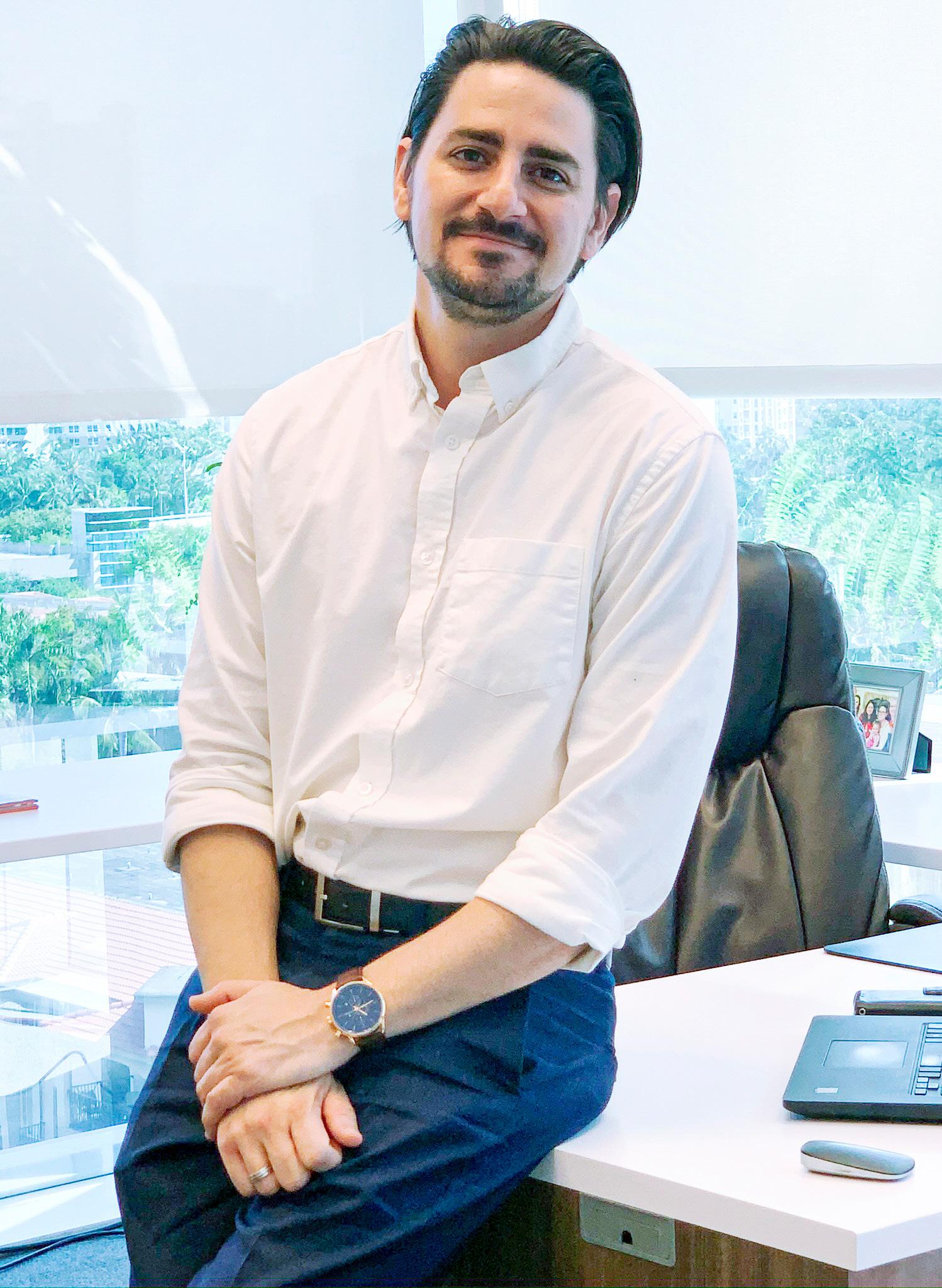
While clinical trials go through their fair share of revisions perfecting the science itself, Bowden notes that his goal is to make sure the project management and operational component runs as smoothly as possible to save time and money while enhancing the quality of the data deliverables. In order to develop effective solutions, Biorasi’s teams need to be able to understand the science behind the trial. That is exactly why, almost six years ago, Bowden founded the program development group at Biorasi.
“I wanted to create a group of people who came from a similar background to mine because that means that the group is passionate about the science and knowledgeable about the technical aspects of the study plan,” he says. “When clients talk to us, they know they’re talking to people who speak their language, people who understand what they’re trying to do and why they are doing it.
“Of course, we still have to have a client-centered mentality in order to be successful,” Bowden goes
“When clients talk to us, they know they’re talking to people who speak their language, people who understand what they’re trying to do and why they are doing it.”
The Impact 127
Courtesy of Biorasi
FOREWARNED IS FOREARMED
According to Biorasi research, more than 30 percent of active clinical trials experience significant—and unnecessary—delays that can prevent a trial from being completed and a drug candidate from going to market. Fortunately, there are a few clear warning signs that every organization can look out for:
1. Minor deadlines are missed with no warning.
2. Site activation is delayed or there is no site activation plan.
3. Enrollment is significantly below initial projections.
4. Queries are not being responded to in a timely fashion.
5. Your contract research organization (CRO) partner is not responsive.
on to emphasize. “We have to be able to deliver what we promise.”
According to Bowden, it is the combination of that “scientific and medical acumen” and operational know-how that has marked Biorasi as a leader in the industry. Small and midsized companies that don’t have “money to burn” and have very little time to complete a project know that they can turn to Biorasi’s teams for cost-efficient and timely solutions with the flexibility of a smaller-focused team.
“Of course, we’re never going to get every single product to market. Ninety percent never make it to the consumer, and that’s OK, as long as the reasons the drug doesn’t get to market are the right reasons,” Bowden says. “Sometimes there are safety issues that outweigh the benefit of the product.
“But we can and do minimize the things that prevent safe and effective drugs from getting past the trial stage,” continues the VP. “In one trial we worked on, the sponsor had no hope—they were two years into the study and had just one patient. But we were able to help them enroll all the patients they needed in the next nine months, within three months of their originally stated goal.”
Asking for that kind of help, whether you need more patients or a more effective CRO partner, is not the same as admitting defeat, Bowden stresses. In fact, by reaching out to companies like Biorasi for advice and aid, you are ensuring success both personally and for the company at large.
“Wayne’s innovative approach to modernizing the traditional clinical trial paradigm is one of the most progressive I’ve seen,” says Amanda Rangel, senior vice president of business development at VirTrial. “By strategically including remote visits in addition to traditional in-person visits, Biorasi enables sites to expand the patient population from which they can recruit and lessens the patient burden throughout the trial. His willingness to adopt hybrid decentralized clinical trials makes him a trailblazer in the industry and positions Biorasi as a preferred CRO for pharmaceutical sponsors. VirTrial is honored to be Biorasi’s telemedicine partner of choice.”
“The time and money that pharma companies are spending to get drugs to market is one of the primary reasons why drugs cost so much,” Bowden says. “Around 60 percent of the development costs of a drug can be tied back to the clinical phase. If we can help companies design trials better from the start, we’ll know that we’re doing what we set out to do: make an impact by running these trials smarter, faster, and more efficiently.” AHL
128 AHL
The Tools for Aging in Place at Home
John Kunysz and Robert Parker on Intrepid USA Healthcare Services’ mission to ensure seniors are cared for in the comfort of their own homes
By Sara Deeter
American seniors are in the spotlight now more than ever, their health a critical concern in the COVID-19 crisis. Nevertheless, some healthcare leaders, including Robert Parker and John Kunysz of Intrepid USA Healthcare Services, have been working for years now to revitalize the system and provide seniors with the care they deserve.
Chief clinical officer and chief compliance officer at Intrepid USA, a prominent provider of home healthcare and hospice services, Parker’s entrepreneurial spirit is the
perfect match for CEO Kunysz’s passion for forward-looking care. Parker and Kunysz recently gave American Healthcare Leader an inside look at Intrepid USA and its goal of reshaping the healthcare industry.
What brought you both to Intrepid?
Robert Parker: I’ve had a very diverse background, which has led me on multiple paths and created a somewhat entrepreneurial spirit in myself that has allowed me to be very flexible
The Impact 129
when approached with new opportunities. I don’t live in a predefined box; I’m always trying to learn how to push limits to promote innovation and test ways I can do that.
Intrepid USA’s mission is something I believe in 100 percent, and it is an evolving mission. One of the critical differences for us as an organization is that we are continually pushing the boundaries of how we can improve healthcare, home health, and hospice specifically.
John Kunysz: When I was recruiting Bob and some of our other leaders, I was looking for people who were ready to take the next step—people who I think could be the next CEO, the next president of a business unit. People who think beyond their existing role and have a vision for the future. Bob has a multidimensional, multifaceted set of skills; even if he isn’t an expert in a particular area, he can participate in the conversation and learn what skills are needed.
I’ve done pretty much everything in healthcare: medical transcription, revenue cycle, billing, software, electronic medical records (EMRs), and high-end anesthesia and surgical software. I have such an appreciation for what care providers do every day for their patients, and it was Intrepid USA’s vision of care that attracted me to the organization. A chance to change the focus of care from the acute setting and move it back into the family home, where it used to belong.
How would you describe that vision?
Kunysz: The medical model that we’ve been operating under for the past hundred years is essentially episodic, urgent care: we take you to the hospital only when something is wrong.
Parker: That model creates many gaps in care where patients are just sitting there waiting for the next thing to happen to them, and that’s just not the way we should be providing care. We need to be constantly interacting with patients in order to see how they’re doing and what they need.
Kunysz: Exactly. What we see now is a much more holistic approach to patient care and a major shift toward home care. Intrepid USA’s goal is to allow seniors to remain in their homes as the primary place of care. We’ve seen it with COVID19—seniors don’t want to risk staying in hospitals, where they might pick up a nasty bug. They sleep better and recover better when they’re at home in their normal environments.
To do that, we have to not only give seniors care when they have a slip and fall but invest continually in their care to prevent those episodes from ever happening.
Which tools or strategies have you found useful in driving that continuum of care?
Kunysz: One of the things we’re looking at is just the way people view the hospice benefit. We don’t want people to view it as a death sentence but rather as a family experience. Through our Life Story and Family Heritage Transitions Program, seniors can share their heritage, their stories, with the next generation.
We’re also creating patient contact centers staffed by people who are sixty-five to seventy-five years old. Those volunteers call and talk with seniors; they can empathize with how patients are feeling.
Parker: We’ve also implemented a patient engagement platform called
TapCloud, which allows patients to express themselves at a layman’s level. Each day, they answer a series of questions powered by analytics and evidence-based decision making that produce a word cloud based on their responses. As an example, if they answer that they are in pain, the word ‘pain’ will become more prominent in the word pattern to reflect this.
“We are constantly pushing the boundaries of how we can improve healthcare, home health, and hospice specifically.”
– Robert Parker
130 AHL
This dashboard allows us to be in tune with the patient daily so that if things start to change, we can quickly intervene. That is much different from how typical home healthcare works. The patient only sees and speaks with a care provider a couple of times a week, potentially based on a set frequency of visits. This type of care is more rigid; however, technology like TapCloud allows us to deploy care more efficiently based on the patient’s current status, allowing us to reduce preventable emergency department and hospital utilization.

You both seem fiercely dedicated to this organization— true servant leaders.
Kunysz: Absolutely. Normally, the bulk of an organization, including the local care centers, supports the national office. At Intrepid USA, it’s the other way around. We are here to serve these people and support them, not a corporate office. And the same principle goes for me—I exist to empower and support everyone in doing what needs to be done. I’m not controlling people; there aren’t enough hours in the day to tell three thousand people what to do. You just have to make sure your frontline workers know what’s expected of them and trust them to do it.
Parker: That was one of the reasons John and I connected well during my recruiting process. In technology, we talk a lot about open access, and I think our leadership model is more driven by that idea than it is by any sort of top-down mentality. I tell my teams, ‘I’m not going to tell you how to do your job. You have ownership; you have the capacity to be creative and move forward in innovative ways. I’m here to support you and catch you if you need me.’ AHL

In an evolving healthcare landscape, you need to find more revenue without burdening your team or adding costs. Look to Waystar’s industryleading, user-friendly technology to help you collect more across the entire revenue cycle.




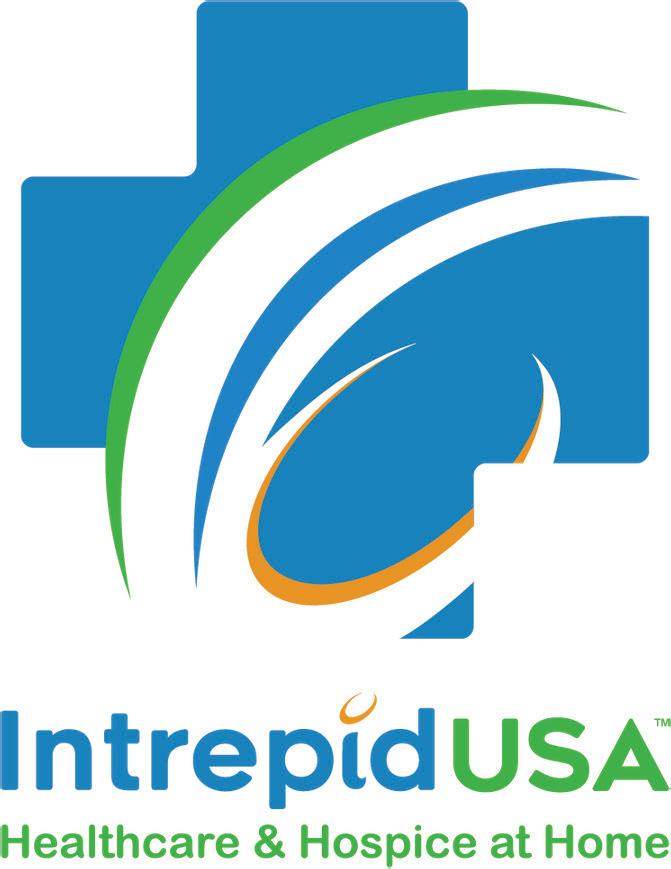
h o m e W H E N I S T H E B E S T P L A C E T O B E . w w w . i n t r e p i d u s a . c o m
YOUR
REV CYCLE
750+ 2B+ 530+ health systems and hospitals transactions annually integrations with leading software systems waystar.com | 1-844-6Waystar © 2020 Waystar Health. All rights reserved. The Impact 131
Seeing a Brighter Future
Alcon’s SVP and CIO, Sue-Jean Lin, uses her passion for customer service to mend the gap during a major transition period
By Blythe Long
Alcon, the world’s largest eye care company, recently split from the Swiss pharmaceutical giant Novartis. Becoming standalone companies offers an opportunity for both Alcon and Novartis to focus on personal company growth. Alcon submits that it will use this split as a time to innovate on its core mission: helping people see brilliantly.
Dave Endicott, Alcon’s chief executive officer, said in a statement at the time of the split, “We are poised to achieve sustainable growth and create long-term
shareholder value as a standalone company. We have a long history of industry firsts and, as a nimble medical device company, we are sharply focused on providing innovative products that meet the needs of our customers, patients, and consumers.”
Like other Alcon executives, Senior Vice President and CIO Sue-Jean Lin has stepped up as a leader during a time of major transition. Lin says she is “passionate about making a difference to customers by focusing on what’s making the business and customer successful.”
132 AHL
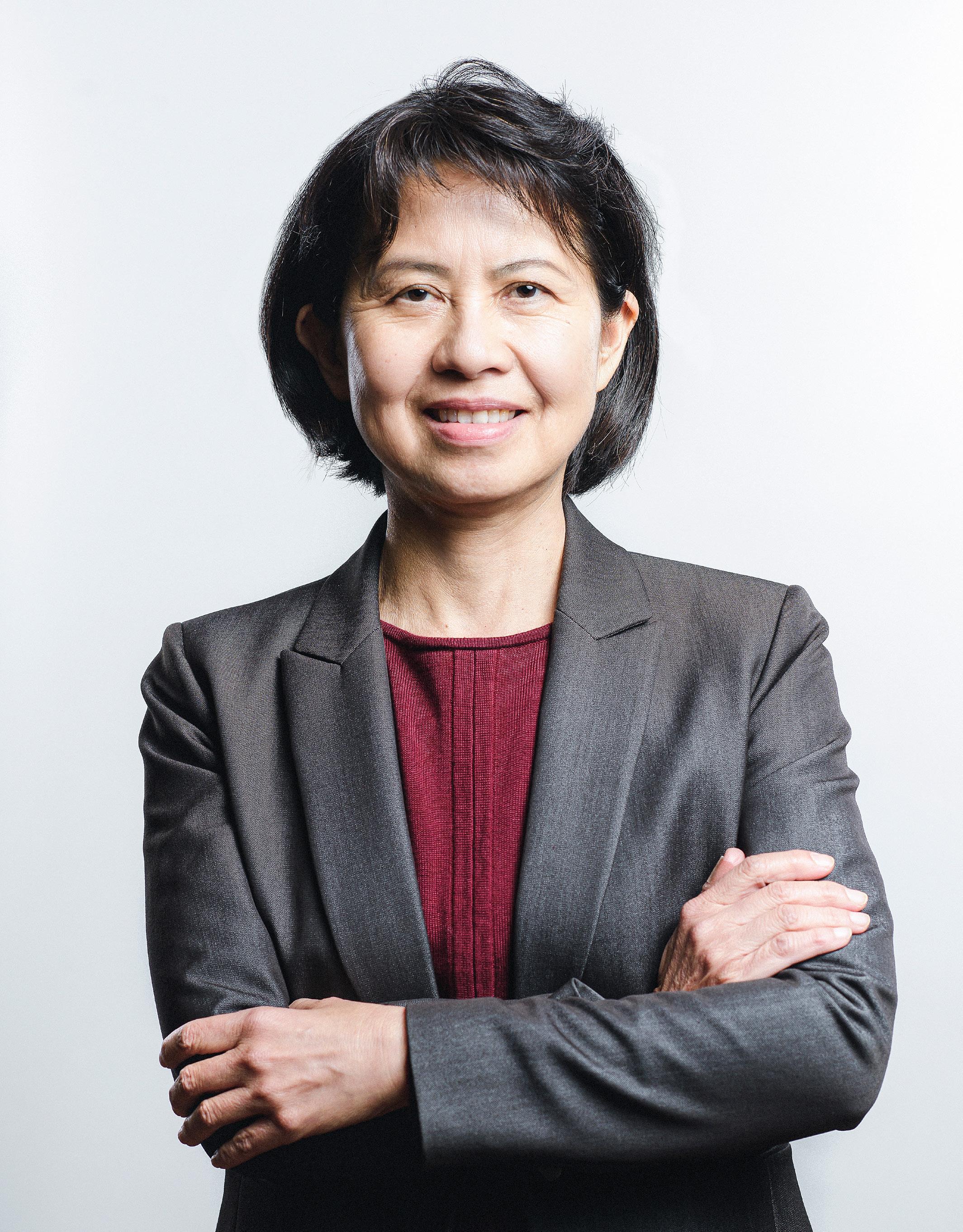 Sue-Jean Lin SVP and CIO Alcon
Sue-Jean Lin SVP and CIO Alcon
The Impact 133
Amy Aiello
BY THE NUMBERS
• Nearly 4.2 million Americans aged forty and older are visually impaired
• More than 150 million Americans use corrective eyewear to compensate for refractive errors
• More than 24.4 million Americans older than forty are affected by cataracts
• By age 75, approximately half of all Americans have cataracts
• Approximately 3.6 million cataract procedures are performed in the United States
• More than 20 million cataract procedures are performed worldwide yearly
• 80 percent of visual impairments are preventable or curable
Luckily, Lin’s experience in the medicine and science industry has allowed her to guide the company toward its goals.
Prior to coming to Alcon in 2018, Lin served as SVP and CIO of Hill-Rom, a global medical technology company, where she was responsible for the global IT function. Before starting at Hill-Rom, Lin used her talents as SVP and CIO at Allergen, another global pharmaceutical giant. In addition to previously serving on the executive advisory board supporting Women in Technology International in Orange County, California, Lin currently serves on the board for Wise & Healthy Aging, a nonprofit focused on enhancing quality of life for older adults. Despite her extensive executive business background, Lin attributes her intelligence and execution wisdom to listening to the business and working closely with her team—two skills that come in handy when helping fellow leaders move toward inevitable growth.
Alcon began trading back on April 9, 2019, on the SIX Swiss Exchange and the New York Stock Exchange. Under the terms of the split, Novartis shareholders will receive one share in Alcon for every five shares they hold in Novartis. The eye care industry is a $23 billion market, and Alcon is a dominant asset. For the third quarter of 2019, worldwide sales were $1.8 billion, an increase of 4 percent on a reported basis as compared to the same quarter of the previous year.
Since stepping out from under Novartis’s umbrella, Alcon continues to pride itself on being at the forefront of eye care for the last seventy-five years. The company uses this rich history to become a leading innovator in bettering eye care for patients and medical professionals. Alcon designs products to aid in surgical practices as well as vision care. As the largest eye care company globally, Alcon provides a wide range of products to help improve the care of patients, including contacts, cataracts, Lasik, refractive technology, and vitreoretinal surgery. Indeed, as evidenced by its product offering, Alcon provides products that can treat the entire eye at each stage of life.
Most recently, in 2016, Alcon debuted the first water gradient contact lens designed for people with presbyopia, more commonly known as farsightedness.
134 AHL
Info: American Academy of Ophthalmology, Review of Ophthalmology, and Alcon
Presbyopia is when people gradually lose the ability to focus on close objects. This was an important innovation for Alcon due to the high concentration of people around the world with presbyopia: a whopping 1.7 billion people are diagnosed with it. In 2016, the company also launched the NGENUITY 3-D Visualization System, which helps aid in retinal surgery.


Alcon not only creates new products but also runs education programs like the Alcon Retina Fellows. Alcon Retina Fellows is an educational program that allows first-year retina fellows to gain hands-on surgical training and mentorship from some of the leading ophthalmologists in the field. Josh Anderson, Alcon’s head of US surgical retina sales and marketing, said in a press release about the Fellows, “We take our role as the global leader in eye care seriously, and as part of this, we are committed to supporting the next generation of ophthalmologists with best-in-class training to prepare them for their first year in their own practice.”

With a presence in more than seventy countries and patients from more than one hundred seventy countries, Alcon is working to enhance vision care for everyone—a mission of inclusion that is evident inside and outside the company. Alcon believes that diversity and inclusion are essential for the success of the company and help the company provide the best products to the diverse communities it serves.


As Alcon continues to grow, they look toward the research and development of other companies. One of its main sources of inspiration is from competitors that seek to achieve similar goals. Alcon’s research and development teams search for other companies conducting research that may enhance one of its existing products or aid in the creation of a new one. This innovation is the foundation for improving people’s lives. AHL
Deloitte ’s US Life Sciences practice helps clients transform uncertainty into possibility and rapid change into lasting progress. Comprehensive audit, advisory, consulting, and tax capabilities deliver value at every step, from insight to strategy to action. Our people know how to anticipate, collaborate, innovate, and create opportunity from even the unforeseen obstacle. Learn more at deloitte.com/us/lifesciences.




Copy r ight © 2020 Deloi t te Development LLC A ll r ight s reser ved
Congratulations
The Impact 135
Deloit te is proud to celebrate the work and accomplishment s of Sue-Jean Lin, SVP and Chief Information Officer at Alcon. Congratulations on your continued success.
www.deloitte.com/us/
Welcome to the Innovation Garage
Jo Abernathy, CIO at Blue Cross Blue Shield of North Carolina, formed a unit to leverage new technology, creating innovative healthcare programs and more efficient business practices
By Peter Fabris
136 AHL
 Jo Abernathy
CIO
Blue Cross Blue Shield of North Carolina
Jo Abernathy
CIO
Blue Cross Blue Shield of North Carolina
The Impact 137
James Walters
Every chief information officer strives to create applications and systems that add value to the business—but this is far more easily said than done.
Technology chiefs spend significant time and effort just to keep existing systems running smoothly and securely, and in keeping up with new iterations of hardware and software. As a result, many have limited resources to spend on investigating creative ways to enhance business strategy with new technology.
Jo Abernathy, CIO of Blue Cross Blue Shield of North Carolina (Blue Cross NC), is a rare IT leader who has made the digital infrastructure more efficient while creating a process to foster IT-driven innovations.
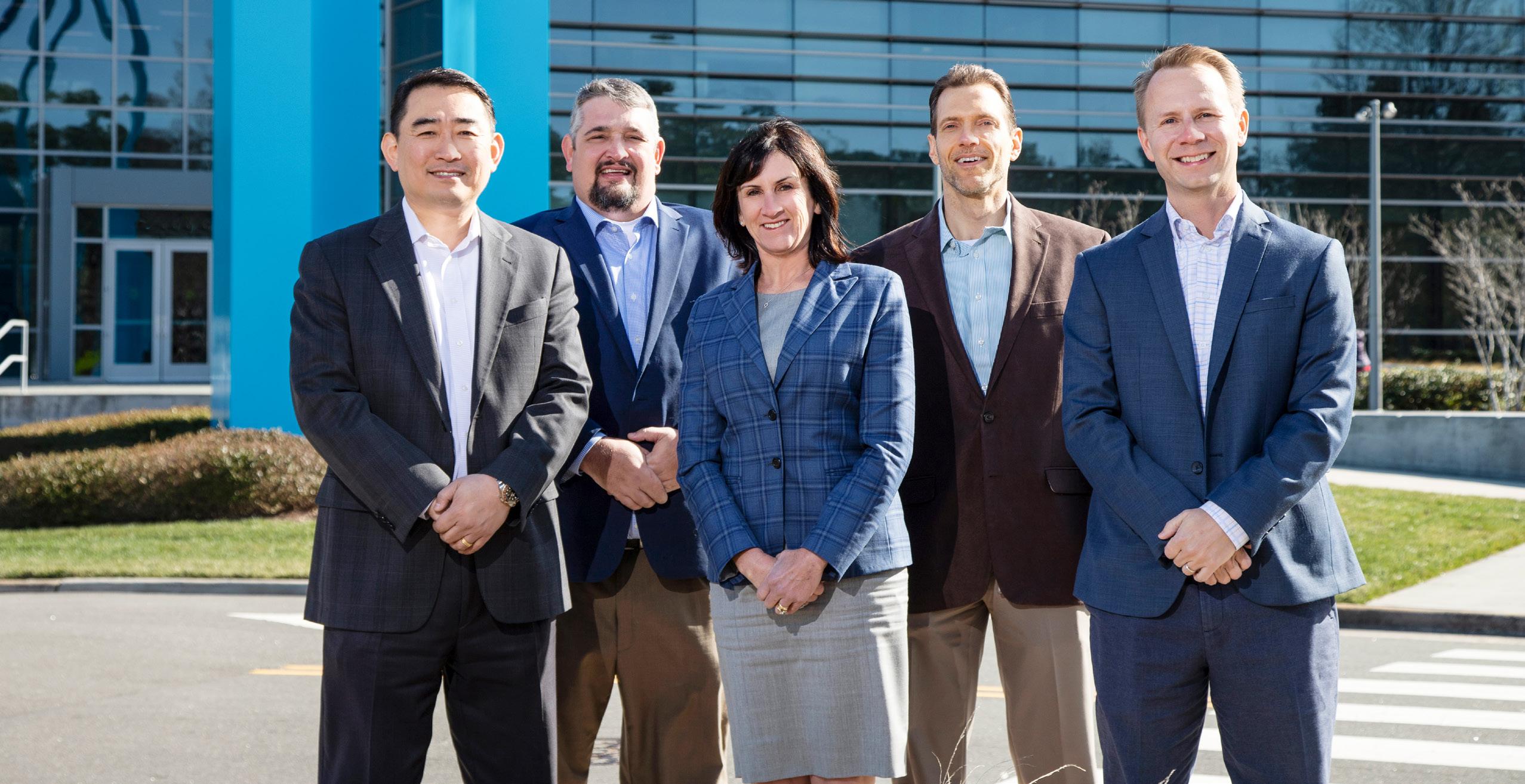
Abernathy created an “Innovation Garage” in 2016 to keep track of new hardware and software products and explore how they can be applied to the business and to improve healthcare. She felt so strongly about the need to dedicate a team to emerging technology that she appointed eight people to staff it even though that put IT over budget for the year.
“I felt like the change curve in technology was so steep that we couldn’t keep up,” Abernathy says. “We needed somebody focused on new technology to weed through the hype, keep IT up to speed, and take a proactive stance when the business wanted to explore new things.”
To date, the Innovation Garage has developed several projects for multiple divisions. One is the Octave Multiple Sclerosis Pilot Data Exchange, which helps provide better insights on devising the best individualized care for members who have MS. “The goal is by finding the common care trajectories, by analyzing our historical claims data, we can find patterns that help to improve the customization of care,” says Mitchell Quinn, an AI applied research scientist from the Innovation Garage group.
Artificial intelligence is also being used to drive a tool that can predict health outcomes such as the onset of cancer and heart disease. AI has many possible applications in departments across the organization, Abernathy points out. “We have used AI for fraud and abuse prevention, but the biggest opportunity is in healthcare,” she says. “We can develop more targeted care management where we can get the most bang for the buck.”
CarePath, Blue Cross NC’s AI algorithms, is used to investigate the relationship between social factors and healthcare needs, predicting health outcomes like heart disease and cancer. Correlating insurance subscribers by zip code, the AI application examines factors such as population density, average income, whether there is a dentist office in the community, and whether the area is a food desert where residents lack access to healthy foods.
James Walters
138 AHL
Pictured left to right: Jim Song (VP of Technology Infrastructure), Rick Chilton (CISO), Jo Abernathy (CIO), Joe Bastante (CTO), Trevor Johnson (VP of IT Solution Delivery)
In areas that are deficient in these health indicators, Blue Cross NC could, for instance, send mobile dental care units or even primary care services. Such initiatives could significantly improve healthcare in rural areas.
“New, innovative technology plays a critical role in enabling the modern, agile IT environment required for healthcare organizations to rapidly respond and keep pace with market changes,” says DK Sinha, president of North America at Cognizant and partner of Blue Cross NC. “Forward-thinking leaders like Jo and innovative programs such as ‘Innovation Garage’ are powerful examples of the role groundbreaking technology, like AI, plays in enabling new models of care. Jo has streamlined the efficiency of the Blue Cross NC IT platform as well as demonstrated leadership and commitment to creating innovative healthcare programs and helping organizations deliver better care to the communities they serve.”
The Innovation Garage has also developed enterprise dashboards that provide sharper insight into business practices. For example, the unit, along with business strategists, rapidly prototype an enterprise scorecard tool that helps the organization effectively track progress toward company goals and better manage performance.
Building on earlier iterations, the scorecard “provides an inexpensive and highly flexible source of truth for both leadership and our board of trustees,” says Suzanne Jacobs, Innovation Garage manager. A vendor dashboard, another Innovation Garage project, consolidates disparate information into one place for a more comprehensive view of vendor performance.
Though establishing the Innovation Garage initially put IT over budget, Abernathy and her team found ways to economize in other areas that more than paid for this investment. One key move was to bring outsourced infrastructure back in-house and create a virtualized environment—technology that allows creation of multiple simulated environments or dedicated resources from a single, physical hardware system.
To put it simply, this IT platform strategy is more efficient than traditional hardware platforms and reduces the number of servers needed by the organization. Blue Cross NC reduced the number of hardware racks from 183 to fewer than 30. This resulted in significant savings on hardware and maintenance. All told, this and other efficiency projects have reaped $25 million in operational budget savings.
With significant gains from IT in both the healthcare and business realms, Abernathy spends a lot of time thinking about how to recruit and retain employees. Based in the technology hotbed of Raleigh/Durham, Blue
Cross NC competes with numerous IT employers for talent. She has worked hard to establish the company as a desirable place to work. Initiatives such as the Innovation Garage and the migration to leading-edge enterprise infrastructure have paid off in that respect.
“The reason we can keep amazing tech talent is because we do very cool work,” Abernathy says. “We are a modern, best-in-class shop.” That said, she will not stand pat in finding new avenues to boost recruiting and retention. “We can’t get complacent,” she says.
Abernathy’s latest projects have centered on making Blue Cross NC more visible in the area by sponsoring IT professional events and teaming up with local higher education institutions such as North Carolina State University. She’s also working to develop a program with a community college to attract tech students aiming for two-year degrees, a somewhat untapped resource. To offer older workers a chance to continue working part-time, she’s introducing a step-down program for staff nearing retirement.
As IT proves its worth with new, impactful initiatives, recruiting and retaining personnel will be a key indicator of Abernathy’s effectiveness as a leader. “How to attract IT professionals is always top of mind,” she says. There’s proof that she is succeeding in the effort—the company won a Computerworld’s best places to work in IT award (given based on direct employee feedback) in 2016, 2018, and 2019. No doubt, more innovations that will improve healthcare are on the way. AHL
The Impact 139
“We have used AI for fraud and abuse prevention, but the biggest opportunity is in healthcare.”
ClearChoice Offers a Fresh Approach

Jason Langley on how ClearChoice Dental Implant Centers help provide relief for people living with chronic dental issues
By Sara Verdi
In the United States, millions of people suffer from chronic dental issues like gum disease and tooth decay. ClearChoice Dental Management Services, a leading dental support organization, is striving to help dentists care for those in need of long-term dental solutions. And General Counsel Jason Langley’s main priority is driving that mission.
ClearChoice network practices and affiliated doctors focus on treatments for those with chronic dental issues. ClearChoice centers provide full-arch dental implant treatment, which provides a new set of teeth
permanently affixed to fully integrated dental implants. Rather than dentures or crowns, implants are an excellent longer-lasting solution for those who suffer from failing or missing teeth.
“This procedure is for people that need a long-term solution. What ClearChoice network doctors are offering, it can really be life changing. Having missing or failing teeth substantially impacts how you live,” Langley explains. “Whether that’s how you present yourself; how you speak, socially or at work; and the foods you can eat. Their overall health may be suffering. What ClearChoice doctors
can do for people is inspiring. This can rebuild someone’s confidence and can change their outlook on life. It’s amazing to be a part of that.”
Beyond supporting dental implant solutions at ClearChoice affiliated centers, ClearChoice is dedicated to partnering with nonprofit groups that provide care for the underserved. Langley is incredibly passionate about forging these relationships. ClearChoice partners with the Brighter Way Institute in Phoenix, Arizona, an organization formed to provide care to homeless adults and veterans at no cost. It also works closely
140 AHL
with KIND (Kids in Need of Dentistry), a Colorado-based organization focused on educating and providing care to underserved kids in Colorado.
“Chronic dental issues often begin in childhood. To me, access to dental care at a young age is critical. Children shouldn’t have to miss school because of tooth pain or lack of access to dental care,” he says.
Recently, ClearChoice employees staffed a KIND event for National Give Kids a Smile Day. “Things like this become cultural, and that’s what we’re trying to develop here,” Langley says. “If we can help prevent chronic dental
issues in childhood, that furthers the ClearChoice mission.”
When Langley joined in 2012, ClearChoice had roughly twenty-six supported centers. Now, in 2020, ClearChoice supports more than sixty multidisciplinary dental implant centers across twenty-seven states.
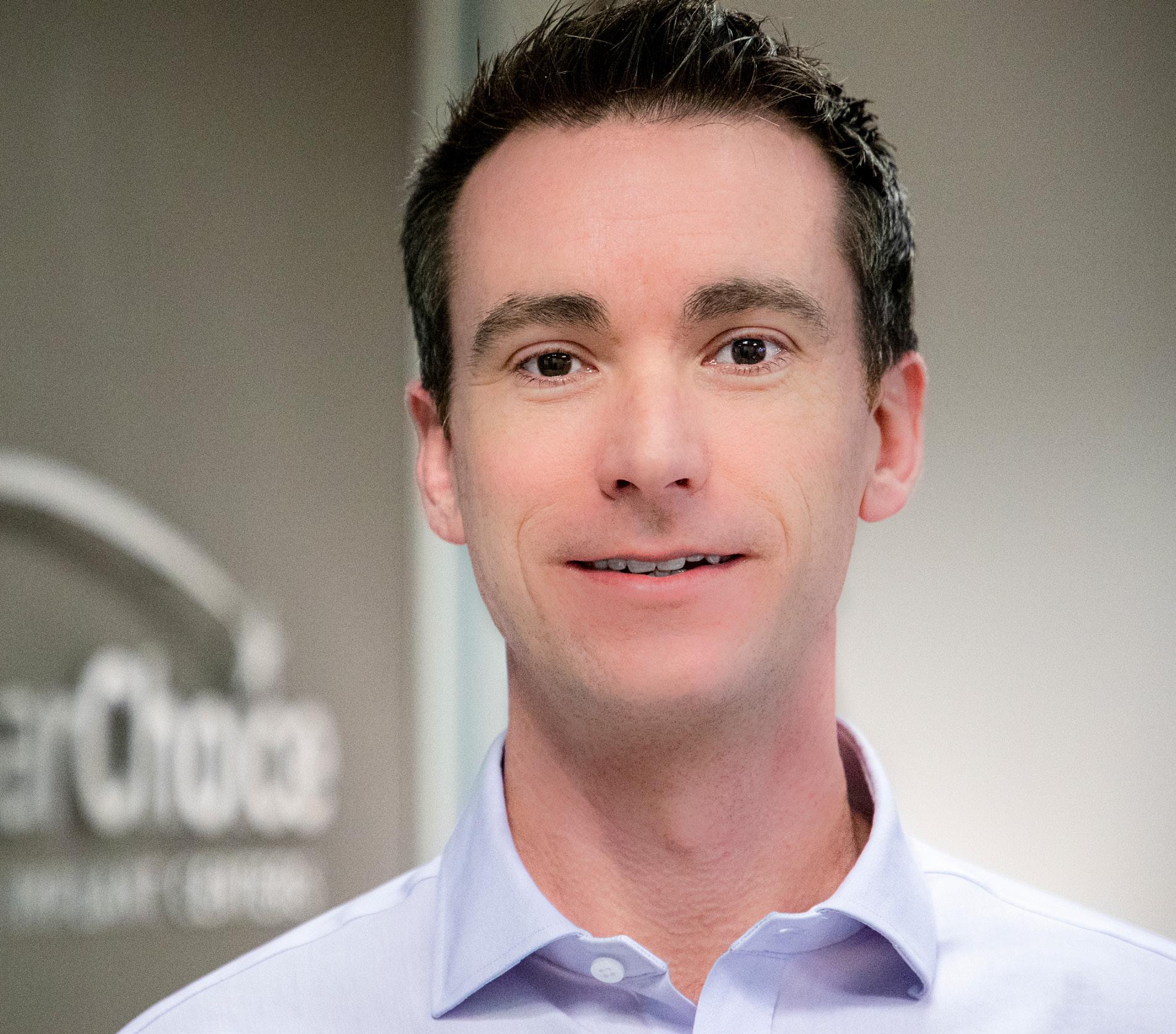
Langley’s transition in-house offered him a chance to make a difference beyond the boundaries of a firm. “I always saw myself working in a position where you’re pulling from the same rope as everyone else, rather than battling with other lawyers all
day in litigation,” he says. “So when the opportunity at ClearChoice arose, I jumped at it because it would allow me to use my healthcare background and strategic mind-set within a quickly growing business.”
Now, for Langley, showing up to work every day is exciting. “ClearChoice affiliated doctors commit to extra training and additional years in school because this type of work is what they’re passionate about; they want to change people’s lives. For me, it’s hard not stay motivated when I’m surrounded by that type of energy on a daily basis,” he says.
Jason Langley VP and General Counsel ClearChoice Dental Management Services LLC
The Impact 141
Marvin K. Gill
Langley’s day-to-day work ranges from identifying solutions on the business side to strategizing employment issues to negotiating real estate terms. But every aspect of his work revolves around supporting ClearChoice centers and affiliated doctors to enable them to reach more people.
Day to day, he tries to stay focused on three concepts. “For one, our [team’s] work is a partnership. I’m always asking, what are the goals, what is the business ultimately trying to do, and how can we help the company get there while mitigating both business and legal risk?” he says.
Langley encourages his team be partnership- and relationship-focused. He believes that building these relationships is foundational to the long-term success of the business, and his team actively works on projects with executives, recruits team members in the field, and builds understanding and trust within the various teams to do so.
“It’s also incredibly important to know the business deeply,” Langley notes. “One of the challenges that we face every day is coming in and knowing what is going on across the country.” But he also understands that the business is more than just knowledge of the structure. “You have to
have a real-time grasp of what is happening at all levels of the organization.”
Langley’s team’s ability to know what is occurring in the business is directly correlated to the focus he places on relationships and communication. “It’s my responsibility to integrate my team into the business of the other teams,” he explains. “When we have this type of cross communication, we are able to help others be more efficient.”
The third area of focus Langley mentions is defining and distributing his team’s messaging throughout the organization, which includes legal recommendations and how to ensure compliance with health and safety regulations.
“Our team motto is ‘Empowering the ClearChoice team through collaboration, education, and practical guidance,’ and we truly live that every day. We constantly think about how we can get our messaging out and deliver it in a way that people in the organization can use it,” Langley says. His team’s messaging is crucial to helping drive the ClearChoice network’s overall mission of providing a solution for people’s chronic dental issues. “If we do our jobs well, then ClearChoice centers can serve more people.” AHL

We are proud to work with Jason and celebrate his skills as an insightful business leader, an extraordinary legal talent and a trusted partner. www.DykemaDSO.com California Illinois Michigan Minnesota Texas Washington, D.C. © 2020
Leading Law
The law firm of Dykema congratulates Jason Langley, Vice President, General Counsel at ClearChoice Dental Implant Centers, on being featured in this special issue of American Healthcare Leader.
Dykema Gossett PLLC Attorney Advertising
Firm in Dental ServicesSM
142 AHL
“It’s my responsibility to integrate my team into the business of the other teams. When we have this type of cross communication, we are able to help others be more efficient.”
Performance at Its Most Competitive
As general counsel for supply manufacturing company Performance Health, Jameson Eisenmenger looks for ways to save money while strengthening relationships with vendors
By Charlotte Foer
Throughout his career, Jameson Eisenmenger has dabbled in seemingly every highly regulated industry. His journey began in 1994, when he enlisted in the Illinois Army National Guard while simultaneously obtaining his bachelor’s in political science and government from Illinois State University. He then received his JD from the University of Wisconsin–Madison.
When his service and studies ended in 2002, Eisenmenger started his decadeslong legal career, moving from law clerk all the way to the top as general counsel
for companies like Fermilab, Addus HomeCare, and now Performance Health. Serving in industries like energy, healthcare, and engineering, his work as a general counsel has allowed him to develop a skill set valuable in any complex field.
In 2016, Eisenmenger joined Performance Health, a medical and physical therapy supply manufacturing company that serves as the umbrella name for several popular exercise and therapy brands, including TheraBand, Cramer, Biofreeze, Jamar, Sammons Preston, Metron, Homecraft, and Rolyan.
With eight locations across the world, including its corporate headquarters in Warrenville, Illinois, Performance Health generates $1 billion in annual revenue in the sports medicine, rehabilitation, and recovery markets globally. So when Eisenmenger joined as senior counsel, he was responsible for drafting and negotiating all commercial and marketing agreements in support of North American and international businesses to maintain Performance Health’s reputation as a competitive name in exercise.
The Impact 143
reedsmith.com
Throughout his four-year tenure, Eisenmenger has sought creative ways to save money and enhance partnerships for the company. Because manufacturers like Performance Health typically distribute their products to limited markets—in this case, gyms, physical therapists, athletic trainers, chiropractors, and so on—product diversion disrupts the routes of distribution manufacturers can take to sell their products.
As such, during his nearly three years as senior counsel, Eisenmenger created a product diversion enforcement process that helped open new channels for sale and increased the sales value of all products sold through Amazon.
In the process, he also coled a supply base reduction project, which helped streamline the organization’s spend to fewer suppliers while heightening relationships with existing ones to drive greater value. This step led to nearly $3 million in annual savings across Performance Health’s five main suppliers.

Internally, Eisenmenger helped streamline processes while he took point on data privacy and compliance matters. Not only did he develop a contact management system, but he also created a swath of legal templates to manage all sourcing, sales, services, and distribution matters.
Naturally, when the opportunity to move up in the company as general counsel arrived in 2019, Eisenmenger’s portfolio of achievements put him first in the running. His promotion put his experience to the test, as he levelheadedly navigates the complexities of not just the industry but the global climate as well.
In the wake of the COVID-19 pandemic, the company adjusted its offerings to satisfy the stay-at-home orders given to populations around the world. As Performance Health’s customer basis remained preoccupied with providing quality care to patients, the company
SUPPORT FOR A SAFE SPACE
Since 2010, Jameson Eisenmenger has volunteered as a fundraiser and contributor for Mutual Ground, a domestic violence shelter located in Aurora, Illinois. Mutual Ground’s mission is to end the cycle of domestic and sexual violence by providing education, awareness, and resources for affected individuals and families. In addition to serving as an emergency shelter, they also offer a twenty-four-hour crisis hotline, legal and medical advocacy, prevention education, and counseling.
provided free education courses, webinars, and reduced costs for equipment. Despite having to adjust in the face of adversity, there’s no doubt Eisenmenger continues to ensure that Performance Health has the tools its needs to remain competitive—no matter what the market has in store. AHL
With more than 1700 attorneys in 30 offices around the globe, Reed Smith provides clients like Performance Health with market-leading transactional expertise in the healthcare industry. We advise industry leaders, private equity funds, and portfolio companies as they invest in, purchase, finance, or sell businesses in this dynamic industry.
We are pleased to recognize the accomplishments of Jameson Eisenmenger
Reed Smith is proud to partner with our clients, such as Performance Health, as they drive progress in their industry.
144 AHL
You’ve Built It Now Share It American Builders Quarterly highlights leaders and projects on the cutting edge of today’s US building industry. For editorial consideration, contact info@americanbuildersquarterly.com Contents 145
People & Companies
A Abernathy, Jo 136 Abundis, Kristi 40 AHRC New York City 52 Alcon 132 American Academic Health System 86 Aquestive Therapeutics 79 ArTara Therapeutics Inc. 95 Asante 92 B Barry University 29 Behrman, Michelle 18 Biorasi 126 BJC HealthCare 116 Blue Cross Blue Shield of North Carolina 136 BorgWarner 18 Bowden, Wayne 126 Braender, Lori 79 Bristol Myers Squibb 113 Brodbeck, Sheila 111 BuzzFeed 10 C Capital One 32 Cigna 107 ClearChoice Dental Management Services LLC 140 Coffey, Erin 92 D DeLuco, Christopher 89 DeSantis, Charles 36 DiNome, John 86 E Eisenmenger, Jameson 143 Eli Lilly and Company 95 Elmer, Cole 116 Emery, Diane 29 F Feeney, Elizabeth 82 G Garner, Amy 122 Garry, Ashley 95 Geisinger Health System 46 Georgetown University 36 GlaxoSmithKline 82 Gonzales, Melissa 70 H Henderson, Dave 73 Honeysett, Kim 100 Huskey, Angela G. 73 I Inspira Health Network 76 Intrepid USA Healthcare Services 129 J Janssen Pharmaceuticals 120 K Kunysz, John 129 L Lambrecht, Paul 76 Langley, Jason 140 LeGower, Donald 113 Lin, Sue-Jean 132 Loyola Medicine 55 Lukowiak, Andrew 73 M McDermott Will & Emery 25 McDonough, Thomas 50 Medela 70 Memorial Sloan-Kettering Cancer Center 89 MemorialCare 62 Mental Health Center of Denver 66 Millennium Health 73 N Nordic Naturals 40 Nova Southeastern University 29 P Parker, Robert 129 Pehanich, Christy 46 Performance Health 143 Pfizer 111 Purdue University 21 R Richey, Alyona 25 S Shaffer, Candace 21 Sherwani, Mehreen 55 Snellgrove, Darren 120 Sowers, Greg 62 T Teva Pharmaceuticals 50 Torchinsky-Field, Viktoriya 107 U UCB 104 United Surgical Partners International 58 V Varex Imaging Corporation 100 Ventura, Pamela 32 W Waynick, Denelle 104 Weber, Daniel 58 West Tennessee Healthcare 122 West, Amy 52 Wilkowski, Hannah 10 WonSavage, Erich 66 146 AHL
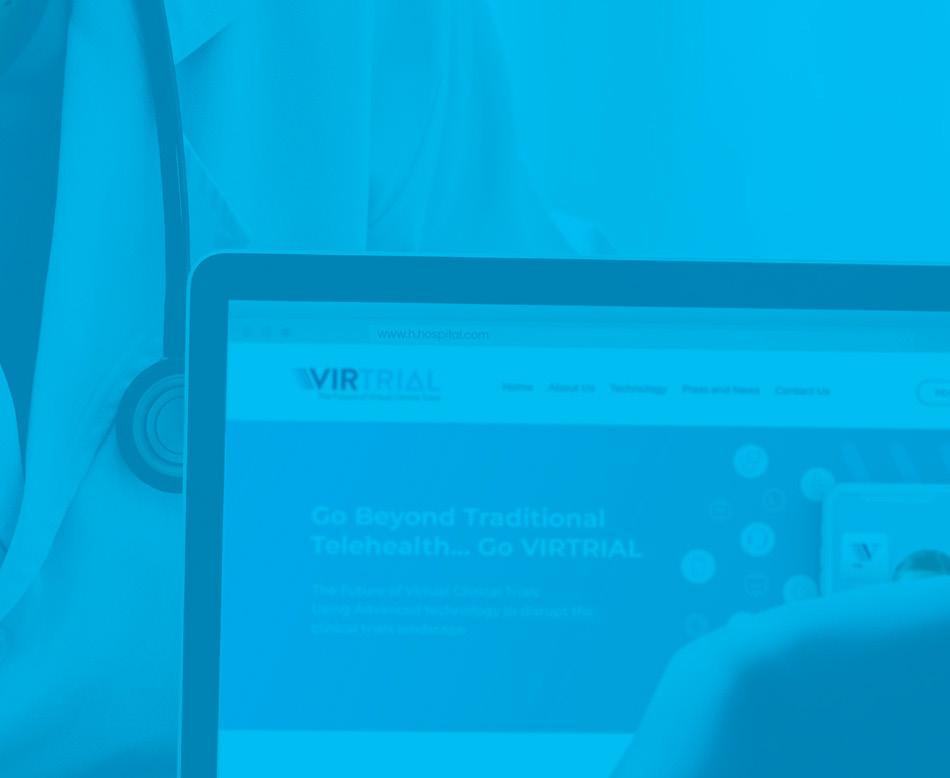





Keep your organization in good health.
As the healthcare industry transitions from volume to value, you need a partner with access to a wide set of solutions that can be customized to meet your goals.

Our experience across the continuum of care allows us to be creative in building solutions for your human capital and risk management needs. Regardless of how and where you provide care today, or plan to provide care tomorrow, we will help you solve the challenges of operating a sustainable healthcare organization while meeting the needs of your employees and your community.
Start a conversation with Gallagher today. www.ajg.com/healthcare
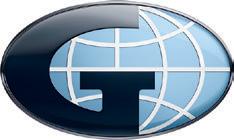
© 2020 Arthur J.
& Co. 35610A
Gallagher























































 Hannah Wilkowski Global Benefits Manager BuzzFeed
Hannah Wilkowski Global Benefits Manager BuzzFeed












































 Christy Pehanich
Associate VP of Revenue Management
Christy Pehanich
Associate VP of Revenue Management



































 Elizabeth Feeney Assistant General Counsel GlaxoSmithKline
Elizabeth Feeney Assistant General Counsel GlaxoSmithKline












 By Sara Verdi
By Sara Verdi
































 By Will Grant
By Will Grant
 Viktoriya Torchinsky-Field VP and Chief Counsel of Litigation Cigna
Olya
Viktoriya Torchinsky-Field VP and Chief Counsel of Litigation Cigna
Olya

 Cole Elmer
VP of Revenue Management
BJC HealthCare
Cole Elmer
VP of Revenue Management
BJC HealthCare























 Sue-Jean Lin SVP and CIO Alcon
Sue-Jean Lin SVP and CIO Alcon








 Jo Abernathy
CIO
Blue Cross Blue Shield of North Carolina
Jo Abernathy
CIO
Blue Cross Blue Shield of North Carolina












